Visiting Canada and Canadian Tourism
Over 18 million foreigners visit Canada every year making tourism an over $80 billion-a-year Canadian industry — bigger than lumber, fishing, and farming combined. So why not join in?
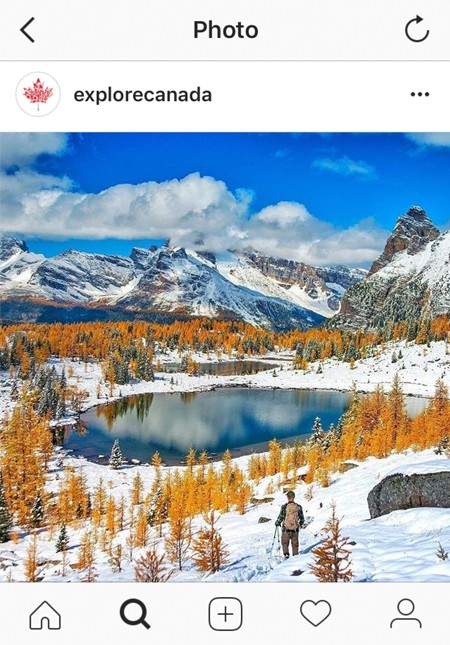
The Government of Canada spends a lot of effort promoting Canadian tourism through a variety of websites and social media accounts, including Instagram — as seen here. The current slogan is "Canada: Keep Exploring" with "explorecanada" their most widely used user name and hashtag.

Why come to Canada?
Canada is a large, diverse country with a lot going for it, but most tourists are drawn to a few of the same things:
Nature — Canada is one of the most beautiful countries in the world, full of picturesque forests, mountains, and lakes that make it a fantastic place for camping, hiking, or just wandering around and admiring.
Winter Sports — Canada’s snowy climate and mountainous geography has produced no shortage of must-visit parks and resorts for anyone interested in skiing, snowboarding, snowshoeing, or any other activity best enjoyed in the cold.
Cities — Canada is home to several large, modern cities that anyone with a taste for urban life will be able to appreciate.
Cost — The Canadian dollar is generally quite weak in comparison to other currencies, which make it a very affordable option for people without too much money in their travel budgets.
- Bank of Canada Exchange Rates
The rest of this chapter deals with general information about traveling to Canada. For more information on things to see and do in Canada’s four most popular tourist destinations, please see the specific chapters on British Columbia tourism , Alberta tourism , Ontario tourism , and Quebec tourism .
What language do they speak in Canada?
Foreigners are sometimes confused by Canada’s language situation. Officially, Canada has two official languages , French and English. However, this is mostly just a matter of government policy. The vast majority of Canadians only speak English, and lack even basic skills in French. French-speaking tourists should not expect to speak French in cities like Vancouver, Toronto, or Calgary.
The capital city of Ottawa is more functionally bilingual than most Canadian cities, and all museums and government-related attractions will feature signs and brochures in both French and English. Staff at popular attractions will likely be fluently bilingual as well, as will many employees of popular stores and restaurants. It helps to ask, however.
The famous city of Montreal , in the province of Quebec , is the most bilingual city in Canada and most residents, particularly those who live and work in the downtown core, can speak fluent French and English. It is not considered controversial in Montreal to speak either French or English to a stranger and assume the other person will understand. In other parts of Quebec, however, rates of English fluency are much lower and it may be considered offensive to speak English to a stranger without first asking for permission.
Downsides of Canada
To avoid unhappy surprises, would-be tourists to Canada should be aware of the following potential disappointments before they go:
Bad weather — Unless you are specifically traveling to enjoy winter activities (see above), there are generally only a few months of the year (usually around June to September) in which Canada’s weather will be mild enough to enjoy. Canadian winters, and even parts of spring and fall, are often cold, dark, snowy, and wet, which can make tourist activities difficult or unpleasant.
Long travel distances — Canada is an enormous country and its main cities are all spread quite far apart from each other. Tourists, particularly European tourists unfamiliar with the vastness of North America, are sometimes disappointed to learn that they will probably only be able to see a rather small part of Canada on their trip. Visiting multiple major Canadian cities on a single vacation — for example, Vancouver, Toronto, and Montreal — would be extremely time-consuming and likely cost thousands of dollars in domestic travel alone.
“America Jr.” — Some tourists are disappointed to discover that Canada is extremely similar to the United States . Travelers familiar with America should not expect to encounter a strikingly different culture in Canada. Stores, brands, food, entertainment and so on will be overwhelmingly American. Though the international press likes to emphasize Canada as being a more “liberal” country than the US, Canadians will probably not seem very different from Americans in day-to-day encounters.
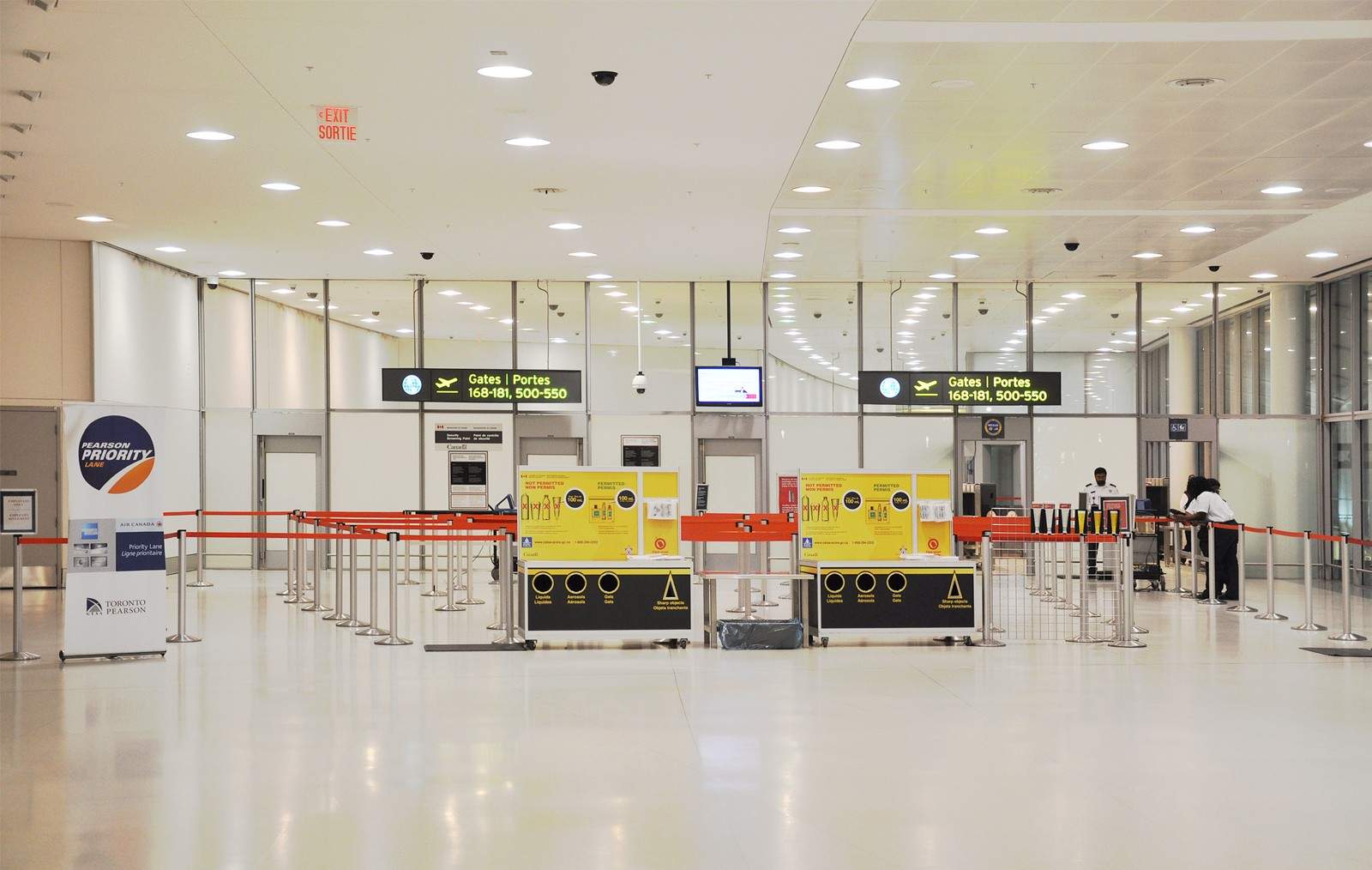
Security checkpoint at Toronto's Pearson International Airport. Serjio74/Shutterstock
Sick travelers.
Travelers from certain countries will need to be cleared by a medical exam as part of their application process before they can visit Canada. During times when there's a global panic over the spread of a particular infectious disease, such as the SARS scare of 2003 or the Ebola scare of 2014, visitors who display worrying symptoms may be detained by border authorities and sent to a hospital for quarantining.
How to Visit Canada
Customs and visas.
Canada does not treat all international visitors the same; citizens of certain countries will have an easier time entering Canada than others. All foreign visitors to Canada, however, must bring a valid passport from their home country.
Residents of the United States have the easiest entry to Canada, and don’t require anything other than a passport to get in. Residents of Great Britain, western Europe, and a few other countries have to obtain an Electronic Travel Authorization ( ETA ) before they can enter. This is a very easy process that only takes a couple of minutes and should be done online before you leave. Once completed, an ETA lasts for five years or until you get a new passport.
- Find out if you need an Electronic Travel Authorization (eTA) or a visitor visa
Residents of countries not covered by the ETA program can only visit Canada after obtaining a short-term visitor’s visa . Applications can be done online, through the mail, or at an overseas Canadian consulate. They take a couple weeks to process and usually cost around $200. For more information, see the Government of Canada’s visitor eligibility questionnaire .
It is illegal for anyone, from any country, to enter Canada to work or live without first obtaining a long-term visa , which are much more complicated to apply for, and take many months to be approved.
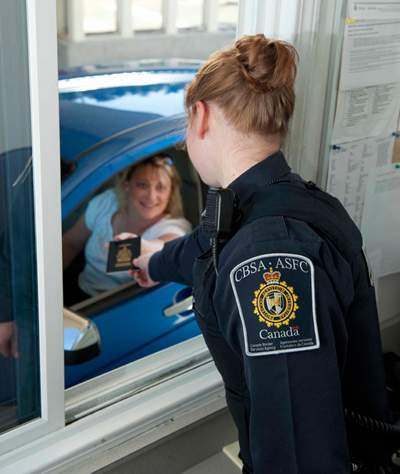
Canada's land border crossing stations operate as drive-throughs. Visitors who arrive by air cross the border at the Canadian airport.
Crossing the Canadian Border
Anyone entering Canada from a foreign country by land, sea, or air — including Canadians themselves — are required to have an interview with a Canadian border guard at their point of entry so it can be determined they are a safe and legal visitor. Exactly how long and invasive this interview will be depends very much on where you are coming from, why you want to visit, whether you have completed any authorizations you may need, and how clearly you communicate these facts. It pays to be honest, cooperative, and informed.
- Canada Border Services Agency
- Wait Times Now, estimated wait times for major Canadian border crossings
It should be remembered that while foreigners enjoy various legal rights after they enter Canada (see below), no foreigner has the right to get into Canada just because they want to. Canadian border guards have the power to deny anyone entry to Canada for any reason. Possessing a criminal record, a history of subversive political activity, dangerous diseases, suspicions of drug trafficking, or just broadly suspicious behavior are all common grounds for refusal of entry to Canada.
Ever since the terrorist attacks of September 11, 2001 Canadian security forces have been extra vigilant about terrorist threats, particularly from the Islamic world. Would-be visitors from the Middle East or parts of Africa, or those with a history of visiting such places, may find themselves subject to increased scrutiny.
- Visiting Canada Help Centre and FAQ, Government of Canada
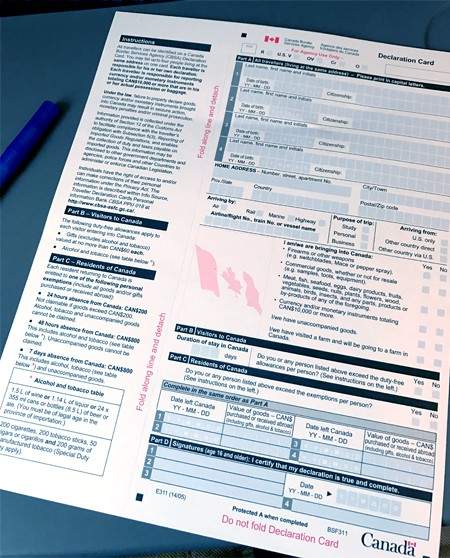
Visitors to Canada are expected to hand a completed Declaration Card to a border guard in order to cross the border. These cards, which ask basic questions about the visitor and their trip, are usually handed out on airplanes or trains. Visitors who cross a land border usually have to just tell the information to the guard.
Bringing Goods to Canada
It is illegal for foreigners to bring products into Canada to sell without first going through the complex procedures for engaging in international commerce . If you cross the border with more stuff than a reasonable person would assume you need for a trip, the authorities may conclude you are probably intending to illegally sell goods. The only exception is a maximum $60 worth of “ gifts .”
Tobacco and liquor products are counted separately, and foreigners can bring a fair bit of both into Canada. The current tobacco limit is quite generous; you can bring up to 200 cigarettes, 50 cigars, and 200 grams of tobacco, if you so choose. The liquor limit is stricter: you can only bring 1.5 litres of wine, 1.13 litres of another liquor, or a 24-pack of beer. Bringing food products into Canada is generally a hassle, as there are very specific rules and limitations for just about every type.
Dangerous goods, like guns , other weapons , and fireworks can be imported, but have their own particular rules. A few very specific things are likewise banned in Canada for safety reasons and are thus illegal to bring into the country, such as certain kinds of kites and baby products. A complete list can be found on the Canadian Government’s official prohibited consumer products list . It’s also illegal to import what the government describes as “obscenity and hate propaganda ” which includes any movies, books, comics, or magazines that contain, in the opinion of the border guard, overly hateful, perverted, gory, terroristic, or violent content.
- Alcohol and Tobacco Limits, Government of Canada
- Restricted and Prohibited Goods, Government of Canada
Traveling Inside Canada
Laws for foreigners.
This should hopefully go without saying, but foreigners have to obey Canadian laws while in Canada. Those who do otherwise can be charged, arrested, sentenced, and imprisoned just like Canadians. At the same time, the legal protections granted to Canadians by the Canadian Constitution also apply to foreigners visiting the country. This includes the right to avoid self-incrimination, the right to consult a lawyer, and the right to dispute before a judge any charges or fines imposed by a police officer.
Canada has extradition treaties with more than half the world’s countries , meaning foreigners who commit a crime in Canada but leave the country before they are caught or punished can be caught by local police and forced to return to Canada to face justice (and vice-versa). Only in very rare situations will a foreigner accused of a crime in Canada be tried and punished for it by their own country’s justice system.
Getting Around in Canada
Flights within Canada are notoriously expensive, with the average domestic flight costing at least $300, plus airport fees and taxes which usually add an additional $40 or so. The country has three national airlines, Air Canada (airline codes: 014, AC or ACA, part of the Star Alliance airline coalition) and WestJet (838, WS, WJA, part of its own 16-airline alliance ) which are largely domestic, and Air Transat (649, TS, TSC) which is mostly international. Canada does not have a major discount or budget airline, though in recent years the major airlines have been experimenting with budget spin-offs, such as Air Canada Rouge and Westjet’s Swoop . Flights to northern Canada , and especially within northern Canada, are extremely expensive, often a thousand dollars or more, and to get to certain remote regions travelers must use a special northern airline or a chartered flight.
Every major Canadian city has its own international airport , and many smaller cities too. There are also several considerably smaller regional or domestic airports that exclusively service flights between Canadian cities. Most of Canada’s big city airports are located around 20 kilometers from their city’s downtown core, or about a 30 minute drive. Vancouver and Toronto have trains that go directly from the airport to downtown.
- Security Screening at Canadian Airports, Canadian Air Transport Security Authority
The railroad played an important role in Canadian history , but trains have now become among the slowest, most expensive ways to travel the country. While trains can be a somewhat convenient way for tourists to travel between large Canadian cities located relatively close to each other, air travel or driving remains much more popular, and may even be cheaper.
VIA Rail is Canada’s primary passenger train service, offering direct service from Vancouver to Toronto (at over 4,000 km, one of the longest train trips in the entire world!), Toronto to Montreal, and Montreal to Atlantic Canada, with stops in all significant cities along the way. Traveling between the axis of Toronto, Ottawa, and Montreal is a popular route. A cross-country Canadian train ride, from one end of the country to the other, will take about four days and cost around $500-$800.
VIA Rail’s Vancouver, Toronto, and Montreal stations also offer connecting trips to the United States, via Amtrak . Several provinces also have limited train service to some of their more remote areas. Cruise-like luxury train services are provided by Royal Canadian Pacific for those willing to pay.
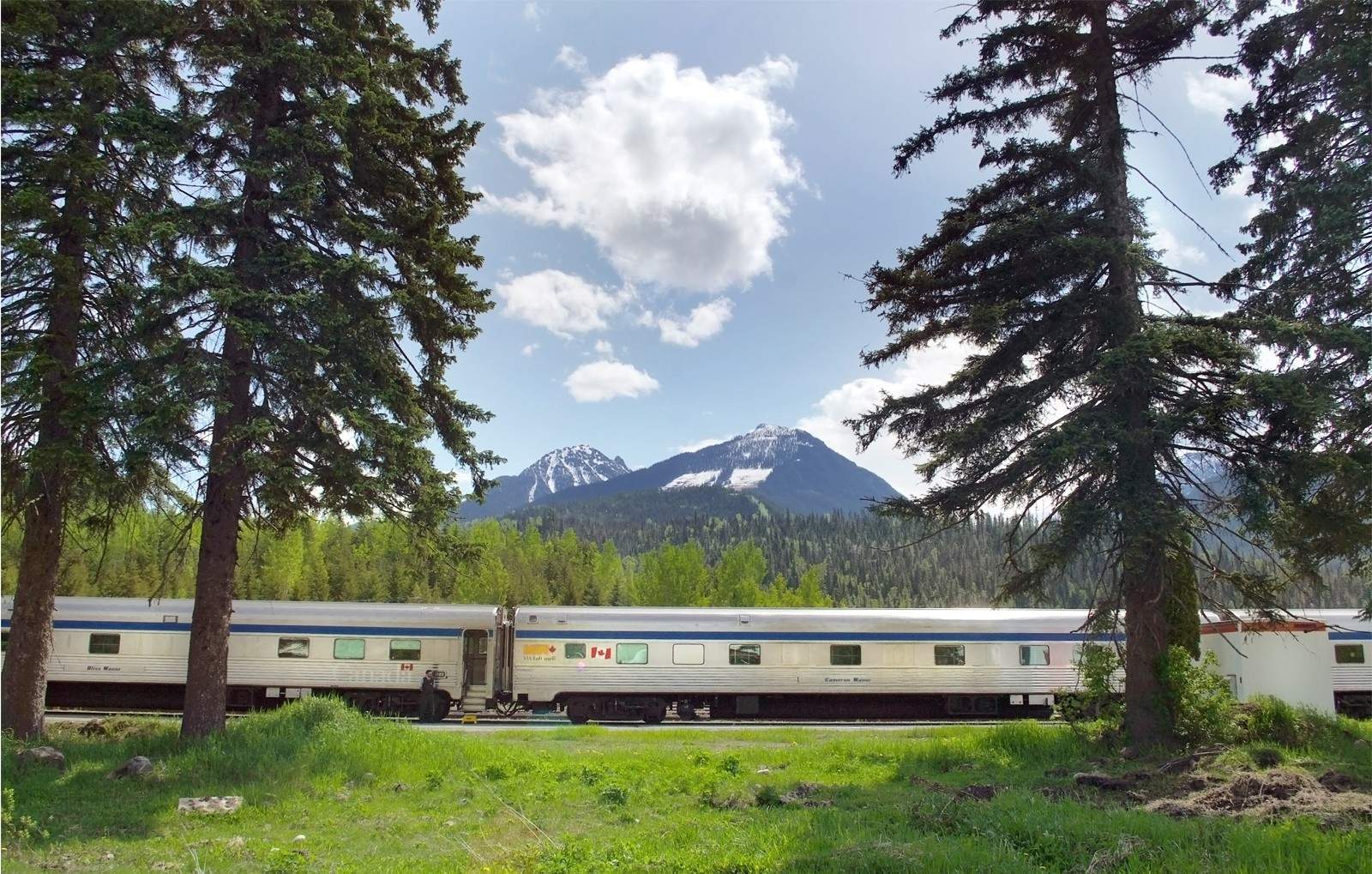
A Via Rail passenger train takes a break in Blue River, British Columbia. joseph s l tan matt/Shutterstock
Driving in canada.
Anyone driving a car or motorcycle in Canada must possess a valid driver’s license . A foreign driver’s license will generally be recognized as valid by the police if it can be read by them, which is to say, if it has English text on it. Don't forget to check if your car insurance applies in Canada!
Car and Bus Travel
Canada is united by a massive cross-country highway known as the Trans-Canada Highway that extends 7,821 km from the farthest western portion of British Columbia to the farthest eastern part of Newfoundland. It is primarily a west-east corridor, however. Though the Trans-Canada highway does have some northern forks, these do not go very far and none reach Canada’s northern territories . Every province has its own highway system as well, and these often merge into portions of the Trans-Canada highway. Through a combination of national and provincial highways, virtually every part of Canada is reachable by road travel, though in many cases drive times will be incredibly long.
- Trans-CanadaHighway map, Transport Canada
Many tourists enjoy traveling between Canadian cities by charter buses , which are large, comfortable buses featuring modern amenities such as bathrooms and WiFi. In eastern Canada, Greyhound is the dominant charter bus line. Other provinces are serviced by various regional bus companies.
Public Transportation
Most large Canadian cities have relatively sophisticated public transportation systems, with some combination of bus, light-rail train, monorail, subway, street car, and ferry services that can be used to navigate most of the downtown core and surrounding areas. The exact combination of services will vary from city to city (as will the cost of tickets and passes). In most cases, public transportation does not travel to rural areas, though some rural communities may have their own public transportation system.
Shopping in Canada
Canadians use the Canadian dollar (symbol: $ ) to pay for goods and services, which can be obtained at any ATM machine, which can be found at banks, shopping centres, corner stores, and many other public places. Most Canadian ATMs will accept foreign bank cards, though withdrawal fees can be high. Some smaller, independently-run shops will have a strict “cash only” policy, but these days, most Canadian business will actually prefer to do transactions through credit or debit cards . Visa and Mastercard are the most commonly-used credit card brands in Canada, and many shops will not accept other kinds — though some will, making it a good idea to ask ahead of time.
US dollars are often accepted at Canadian stores, particularly in tourist-heavy areas. Some places may have a policy of accepting US dollars “at face value,” however, meaning American money will not be accepted at its exchange rate worth, but rather treated as if it was worth as much as Canadian money, which is a bad deal.
Foreigners will be charged sales tax on every purchase they make in Canada, through special “value-added tax” known as GST and either PST or HST . Canada does not have a rebate program allowing foreigners to get a refund for the GST, PST, or HST they spend in Canada.
Challenges, dangers and annoyances when visiting Canada
Medical costs.
Though Canada offers generous public healthcare insurance, you have to be some form of long-term, legal Canadian resident before the government will pay for your hospital visits or operations. Non-residents will be billed full cost for any medical service performed while in Canada, which is why it always pays to get travelers’ medical insurance .
Canada has some of the world’s cleanest tap water and strict laws to ensure the cleanliness and safety of any meat, dairy, or poultry products sold at restaurants or grocery stores.
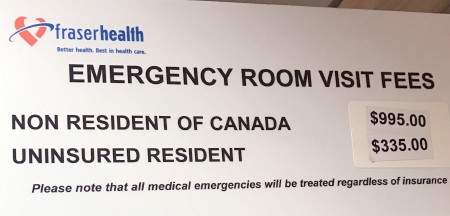
No foreigner will be denied emergency medical service in Canada, though if they have no insurance they will later face a hefty bill. In addition to hospital admittance and treatment, the uninsured should be prepared to pay full cost for things like ambulance rides and hospital beds. Seen here, a sign in a Vancouver hospital emergency room.
Staying Safe in Canada
Canada is generally a safe country, but it has some dangerous places. Every large Canadian city will have a couple of “bad neighborhoods” where criminals tend to congregate and locals generally avoid — particularly after dark — for fear of being harassed, robbed, or assaulted. Unfortunately, these neighborhoods can often be located close to tourist areas, and may seek to take advantage of the obviously confused or foreign. At the same time, most serious, violent crime in Canada tends to occur between people who know each other. Visitors who act confident and use caution and common sense should have little to fear.
Leaving belongings unattended in any public place is generally considered a high-risk activity, and though some businesses may store forgotten items in a “ lost and found ” collection of lost property, the police — and indeed, most Canadians — will generally be unsympathetic to victims of theft caused by inattentive behavior. People generally lock up their homes, cars, and bicycles before leaving them unsupervised. In rare cases, tourists and locals may be targeted by scam artists looking to cheat them out of money. In big cities, most scams are quite brazen, and usually take the form of a stranger asking for money on some sympathetic pretext, such as a phony personal emergency or phony charity. In some cases, a thief may attempt to quietly sell stolen goods to a stranger. Beggars can be common in some large Canadian cities as well. Many Canadians regard them with indifference, believing them to be scam artists.
The police can be called anytime in Canada by dialing 9-1-1 on the telephone. Canadian police are obligated to treat crimes committed against foreigners exactly the same as crimes against Canadians.
- Scams in Canada, TravelScams
More About Canadian Tourism
- Destination Canada, the Government of Canada's Official Tourism Department
- Explore Canada Instagram Account
- Lonely Planet Canada
Exchange Rate for one Canadian dollar (as of April 2019)
- $0.75 U.S. Dollar
- £0.57 U.K. Pound
- $1 Australian Dollar
- ¥5.02 Chinese Yuan
- ¥83.5 Japanese Yen
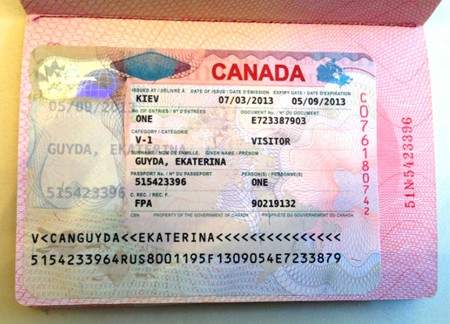
Canadian Travel Visas are special holographic stickers that are attached to a blank page of the passport.

Canada Travel Guide
Last Updated: April 29, 2024
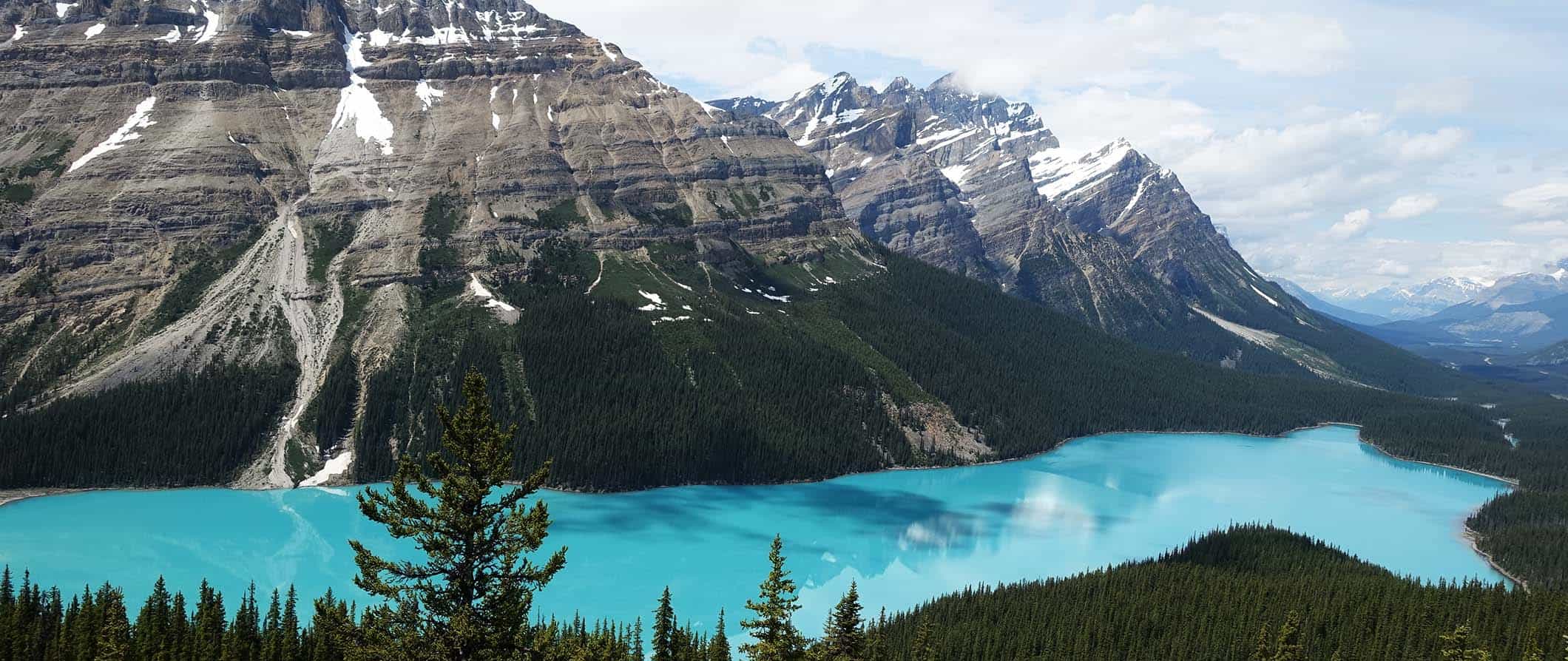
Canada is often skipped over on many round-the-world trips owing to its proximity to the US, poor flight connections, and few budget cross-country travel options.
But those people miss out on so much! Canada is one of the best countries in the world for RVing and road trips and it’s brimming with outdoor activities for all levels. Backpacking Canada is an amazing experience.
I love my friendly neighbor to the north and believe Canada is a really underrated destination. There’s a reason everyone around the world loves Canadians after all.
To top it all off, it’s also easy to get a working holiday visa here so you can stay longer and make money while you explore (there are huge seasonal industries across the country).
This travel guide to Canada can help you plan your trip, save money, and make the most of your visit to this friendly natural wonderland!
Table of Contents
- Things to See and Do
- Typical Costs
- Suggested Budget
- Money-Saving Tips
- Where to Stay
- How to Get Around
- How to Stay Safe
- Best Places to Book Your Trip
- Related Blogs on Canada
Click Here for City Guides
Top 5 things to see and do in canada.

1. Tour Toronto
Toronto is often considered the most multicultural city in the world, as over half of the city’s population is foreign-born. It’s an awesome, hip, artsy city. Don’t miss Kensington Market for good eats and cool shops, and there are plenty of tasty eats to be found in the city’s massive Chinatown as well. If you want to play tourist, head up the CN Tower for the best views of the city. For a bit of swimming in the summer, check out some of Canada’s easily accessible beaches on Lake Ontario where you can go kayaking, windsurfing, stand-up paddle boarding, and more. And if you’re traveling with kids, don’t miss the nearby amusement park Wonderland.
2. Explore Jasper and the Columbia Icefield
The Icefields Parkway connects Banff and Jasper in Western Canada and is one of the most scenic drives in the country (if not the world). Stop along the way at the Columbia Icefield, an enormous icefield that feeds into eight glaciers. You can travel onto the 10,000-year-old Athabasca Glacier where you can hike around and even drink from the crystal-clear icy glacial water. If you’re not squeamish about heights, walk out to the cliff-top glass-floored Skywalk to get a spectacular panorama of the entire area. It’s easy to reach via an enormous bus or opt for a hiking tour where you can walk the glacier. There’s even a restaurant at the top that’s a bit expensive but worth at least a coffee for the view.
3. Road trip the Maritimes
Newfoundland, Prince Edward Island, Nova Scotia, and New Brunswick make up Canada’s east coast. If you want to spend your days hiking, relaxing by the ocean, and whale watching, this is the place to do it. Nova Scotia is sometimes considered the most beautiful province with rolling hills leading to lush green coastal cliffs over frothy shores. There are colorful little fishing villages like Lunenburg, a UNESCO World Heritage Site considered one of the “Prettiest Painted Places in Canada.” It boasts delicious fresh seafood and friendly locals to chat with. Be sure to set aside a few days for an incredible road trip on the 298-kilometer (185-mile) Cabot Trail around Cape Breton and spend in the Highlands National Park where you can hike, camp, or fish. The east coast is stunning and sees very few tourists compared to other areas of the country.
4. Hang out in Montreal
Montreal offers a look at the French side of the country. Old Montreal is thriving with culture and a mix of old and new architecture within its European-style cobblestone streets, the Notre Dame Cathedral, museums, and river cruises. The other side of Montreal is extremely modern with an underground city and mall, funky jazz clubs, and amazing cuisine, which make this the hippest and most romantic city in the country. It’s also cheaper than most of the other large cities in Canada. Don’t forget to try the poutine and bagels when you visit!
5. Have fun in Vancouver
Other things to see and do in canada, 1. celebrate the calgary stampede.
During July, over 1 million people descend on Calgary for this multi-day rodeo, drinking festival, and carnival where everyone gets to be a cowboy. It’s a lot of fun, and you’ll meet tons of people from around the world. It’s one of Canada’s premier events so book early — prices rise and accommodation disappears fast! Also, wear cowboy boots and a hat if you want to fit in.
2. Hit the slopes
The mountains in Canada offer great skiing and snowboarding during the winter. Banff is a popular mountain town known for its excellent trails. It’s quite busy during the winter as locals and visitors alike hit the slopes, but it’s popular for a reason. While Banff is the most popular place to go, there are tons of other great skiing destinations in the country. Sunshine Village, Whistler Blackcomb, Lake Louise, Kicking Horse, and Mont Tremblant are just a few to check out (they stretch from British Columbia to Quebec so you’ve got lots of choices).
3. Discover Vancouver Island
Take a few days off from Vancouver to explore nearby Vancouver Island . Eat delicious seafood, hike, spot some whales (lots of orcas live near here), shop, and lounge on the beach. This is a place to just sit and relax. Since it is so close to Vancouver, it’s a popular getaway with the locals during the summer. Victoria, the capital of British Columbia, is located on the island. It’s a quiet but gorgeous little city worth a couple days of exploring. From here you can also visit places like Tofino, where the bustling surf community has evolved into a fun hippie town. If you’d rather hike an incredible yet challenging trail, the West Coast Trail is famous for its rugged beach and rainforest trails, man-made ladders through the trees, and rare wildlife.
4. Hike the rainforest
Hike the Pacific Rim National Park for a wonderful look at some temperate rainforests on Vancouver Island. It’s one of the most popular parks in Canada, home to Western Red Cedars, Pacific Silver Firs, and tons of wildlife including deer, wolves, bears, and cougars. The Long Beach area is one of the most accessible places for hiking, but the sand dunes behind Wickaninnish Beach on the South Beach Trail are also worth the trek.
5. Explore Calgary
Often skipped over by travelers since it’s not on the coast, Calgary actually has a lot to offer when it comes to free and low-cost activities. Have a picnic in one of its many parks, go rollerblading, watch a hockey game, or head up to the top of the surrounding peaks. There’s great hiking, kayaking, skiing, water rafting, and camping here and you can easily rent a bike and explore the city via its many bike paths. Although it’s been long dismissed as an oil town, it’s one of the liveliest cities in Canada.
6. Visit the galleries of Toronto
Toronto has some of the best museums and galleries in the country, so take a day or two to admire the art of the city. The Royal Ontario Museum (ROM) and the Art Gallery of Ontario (AGO) are the two most famous art museums, but there are a plethora of smaller, specialty galleries too, like the Textiles Museum of Canada and the Museum of Contemporary Art. Galleries often offer discounts on certain days of the week, so check before you go to save some cash.
7. Take a road trip
This huge country is best explored by car or RV. It’s the ideal way to find yourself in tiny little towns, majestic mountains, amazing countryside, and plenty of off-the-beaten-track places. If you have a lot of time, this is your best and cheapest option to see the country. The Trans-Canada Highway stretches from coast to coast, making a road trip relatively easy to plan. Just keep in mind that the weather can be unpredictable (especially in the winter). Of course, you’ll have to keep your eyes peeled for wildlife and you’ll want to be prepared for long stretches of driving without any rest stops or gas stations. However, it’s worth it — the changing landscapes and scenic vistas are out of this world! you could easily spend weeks or months touring the country and still barely scratch the surface. For the best car rental prices, use Discover Cars .
8. Stroll the nation’s capital
Ottawa is a very easy city to explore on foot. Home to museums, art galleries, and plenty of shops, it’s a charming city worth visiting for a couple days. You can take a tour of Parliament Hill (the historic buildings where the Canadian government operates) or cross the Ottawa River and visit Quebec (the great Museum of Civilization is just across the bridge). The Canadian War Museum and the National Gallery of Canada are two must-visit museums in Ottawa. Also, don’t miss the busy Byward Market, and be sure to check out the craft breweries in Westboro. Try a beavertail (a sweet pastry with sugary toppings) when you’re here!
9. Get off the beaten path in Nova Scotia
The locals boast that Nova Scotia is home to the friendliest people in Canada. They might be right. That, combined with over 100 beaches, picturesque lighthouses, great sailing, mouth-watering seafood (this area of Canada is the main fishing region), and a marvelous coastline, makes Nova Scotia an amazing place to visit in Canada. Plus, the province doesn’t see lots of tourists so it’s far less crowded and unspoiled compared to other regions. It’s perfect for road trips and camping.
10. Admire Quebec City
Quebec City’s Old Town offers cobblestone walkways, well-preserved 17th-century architecture, and the only North American fortress, the Citadel. The historical Quartier Petit Champlain is stunning and gives you an authentic French feeling with little cheese shops, bistros, creperies, and boutiques. It’s especially magical in December as it’s fully decorated with twinkling lights, snow-covered canopies, and lined with beautiful Christmas trees. In the warm weather, you can easily lose track of time wandering the streets admiring the flowers everywhere and colorful window shutters and storefronts. Don’t forget to sample the local ice ciders, head out for drinks on Grande Allée, and explore the streets below the stunning Château Frontenac.
11. Visit Kelowna
Warm in the summer and mild in the winter, this glacial valley has some of the best weather in the entire country. It’s no wonder that this is where many Canadians spend their vacations. There’s a marina and a few golf courses, not to mention that the Okanagan Valley is home to Canada’s best vineyards and wineries (a four-hour wine tour costs around 125 CAD). In the summer, Canadians rent fancy houseboats complete with waterslides to vacation on nearby Okanagan Lake. Overall, this is just a gorgeous slice of the country that shouldn’t be missed.
12. Head north to Churchill, Manitoba
This might be a small town in the middle of nowhere, but it also happens to be the Polar Bear Capital of the World, the Beluga Whale Capital of the World, and one of the best places to view the Aurora Borealis. You can ride in a tundra buggy (a special bus raised on giant wheels to keep you out of reach from polar bears) and head out on the open plains to see polar bears in their natural habitats. Mother nature is alive and thriving here. Day tours in a tundra buggy during the summer start at around 250 CAD, including lunch.
13. See the iconic Niagara Falls
This is one of the most visited attractions on the entire continent. You can never imagine how big it is until you see it up close (you never envision so much mist either). To see it up close, on a boat tour and head out into the waterfalls (be prepared to get soaked). Walks runs a daily boat tour that has exclusive access to the best spots and includes access to behind the falls (tours are 107 CAD). The town itself is touristy and cheesy so don’t spend more than a day or two (it’s fun for kids though).
14. Get lost in the Yukon
The Yukon is the perfect place to get your nature fix. The chances of seeing a bear, elk, or deer are incredibly high (or you can tour the Yukon Wildlife Preserve, where you’re guaranteed to see them). Go hiking in Tombstone Territorial Park, soak in a mineral hot pool at the Takhini Hot Springs, or swing by the Sign Post Forest with its unique collection of over 77,000 signposts. Hardly anyone ever visits the Yukon as visitors tend to stick to the major cities in the south of the country. Because of that, you’ll find yourself surrounded by unspoiled nature.
For more information on specific cities in Canada, check out these guides:
- Calgary Travel Guide
- Montreal Travel Guide
- Nova Scotia Travel Guide
- Ottawa Travel Guide
- Quebec City Travel Guide
- Toronto Travel Guide
- Vancouver Travel Guide
- Vancouver Island Travel Guide
Canada Travel Costs
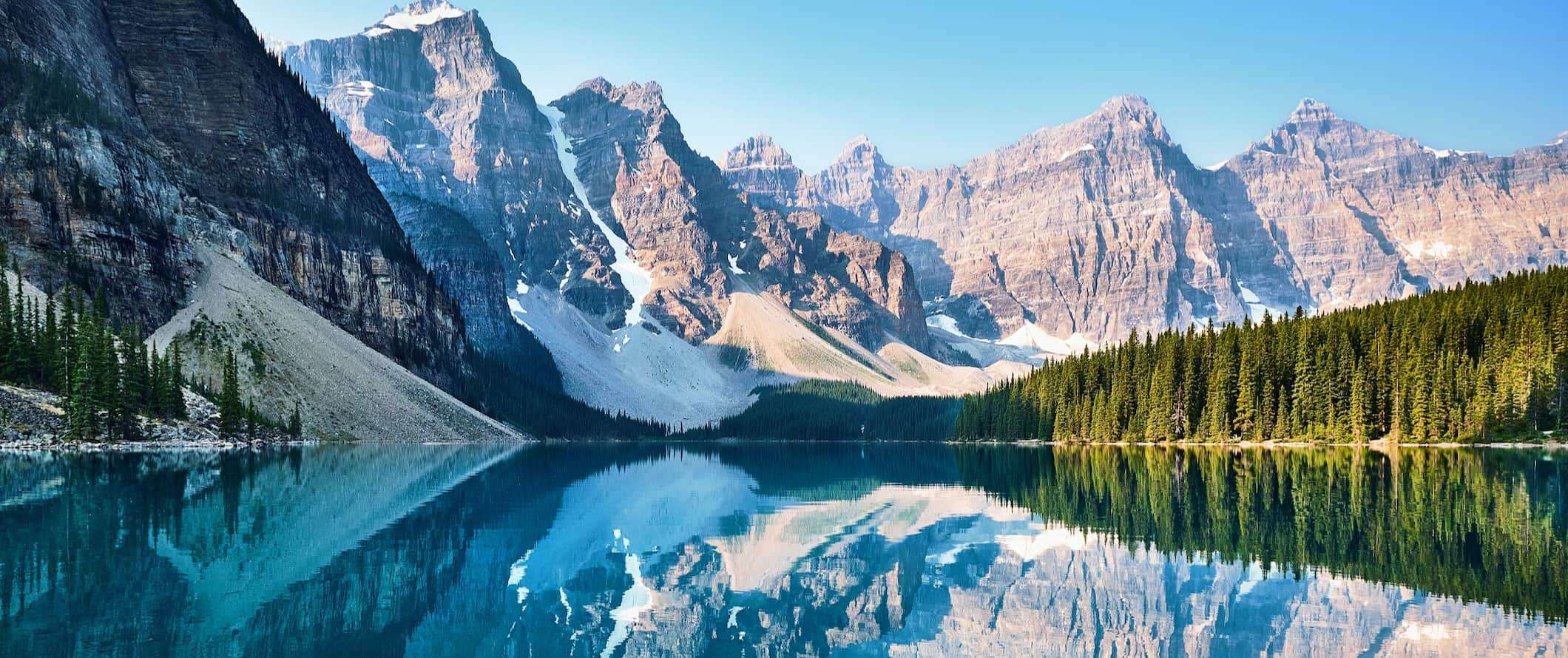
Accommodation – Rates vary a lot depending on what city you’re staying in. On average, you’ll end up paying 35-45 CAD per night for a dorm room at a hostel. Expect to pay at least 90-120 CAD for a budget hotel room. Prices rise drastically in larger cities (notably Vancouver, Toronto, and Ottawa).
Airbnb is available across the country, rivaling budget hotels for price and convenience. Expect to pay an average of 60-90 CAD per night for a private room, while entire homes/apartments start around 100 CAD. Keep in mind that many smaller towns won’t have many options. However, there are usually locally owned hotels or motels that are generally quite cheap. Also, Airbnb prices can double (or triple) when not booked in advance so book early.
If camping is your thing, you’ll have plenty of options across the country. Prices vary depending on the grounds but expect to pay between 25-35 CAD per night for a basic pitch for two people. Many of the major national and provincial campgrounds sell out early in the summer, so be sure to book in advance during the peak season (June-August).
Food – Overall, the food here is a collage of dishes from other cultures, owing to the country’s diverse history of immigration. On the coasts, seafood is king while the prairies have more of a meat and potatoes diet. Be sure to sample some of Canada’s famous staples like poutine (fries with gravy and cheese curds), beaver tails (fried dough with maple syrup), Canadian bacon, and the oddly tasty ketchup chips.
Overall, food can be inexpensive if you stick to cooking for yourself, eating street food, and dining at cheap fast-food places. Cheap sandwich shops and fast food are your best bet, usually costing less than 13 CAD per meal.
Pizzas cost 15-20 CAD while Asian food is usually 10-15 CAD for a main dish.
A meal out at a casual restaurant costs 20-35 CAD for a main dish and a drink. Casual fine dining costs double that.
Beer is around 7 CAD while a latte/cappuccino is around 4.60 CAD. Bottled water costs 2 CAD.
If you cook your own food, expect to pay 50-75 CAD per week for groceries. This gets you basic staples like rice, pasta, veggies, and some meat or fish.
Backpacking Canada Suggested Budgets
How much does it cost to visit Canada? Well, it’s complicated. How much you spend largely depends on where in Canada you’re going to visit. For example, Canada’s biggest cities like Toronto, Ottawa, and Vancouver are considerably more expensive than the smaller ones (like Halifax, St. John’s, and Quebec City). The rural areas are even cheaper but getting around costs more as you may need to rent a car or take expensive buses.
On a backpacking budget, you should plan to spend around 70 CAD per day. This assumes you’re staying in a hostel dorm, cooking all your meals, using public transportation, limiting your drinking, and sticking to free activities like hiking and enjoying nature.
On a mid-range budget of 185 CAD per day, you can stay in a private Airbnb, take buses between destinations, eat out for most meals, enjoy a few drinks, and do more paid activities like visiting museums or taking a food or wine tour.
On a “luxury” budget of 310 CAD per day or more, you can stay in a hotel, eat out for all your meals, drink more, rent a car to get around, and do whatever tours and activities you want. This is just the ground floor for luxury though, the sky is the limit!
You can use the chart below to get some idea of how much you need to budget daily, depending on your travel style. Keep in mind these are daily averages — some days you’ll spend more, some days you’ll spend less (you might spend less every day). We just want to give you a general idea of how to make your budget. Prices are in CAD.
Canada Travel Guide: Money-Saving Tips
Given the size of Canada, there are plenty of ways to save money when you travel, but it varies by region (as I’ve been repeating). The general tips below can help but for specific tips visit our city guides!
- Stay with a local – As Canada is not the most budget-friendly destination owing to its inconvenient size, you’ll be able to cut down on your costs by using Couchsurfing . While not huge in smaller towns, you won’t have a hard time finding a host in the major cities. Just be sure to plan ahead during the summer as that is prime tourist season and it’s much harder to find a host then.
- Enjoy outdoor summer festivals – Since Canadians are stuck indoors all winter, they love to make the most of hot days by packing in lots of festivals into the short summer. Many of these, like Heritage Days (Edmonton), Kits Days (Vancouver), and Caribana (Toronto), are free. Check out upcoming events online by visiting the local tourism board’s website.
- Embrace the outdoors – A vast country with a relatively minuscule population leaves lots of potential for outdoor activities. Rent a pair of cross-country skis or snowshoes in the winter and enjoy the free use of many trails (versus expensive downhill lift passes). In the summer, you can bike, hike, kayak, or canoe. The cost of most equipment rentals is around 25-100 CAD for a day, and you can explore many areas at no further cost.
- Take the bus – Megabus runs in Ontario and Quebec (with connections into the U.S., including NYC). You can find tickets for as little as 1 CAD if booked in advance. This is the most affordable way to get between Toronto and Montreal (or into the U.S.).
- Use ride-sharing services – If you are going to be traveling between cities or provinces, keep an eye out for people sharing their vehicles. Craigslist, Couchsurfing, Kangaride, and Facebook all have ride-share pages for most major cities. If you can find someone traveling in your direction you can tag along and share the cost of gas.
- Eat street food – Every major Canadian city has plenty of street vendors selling hot dogs, sausages, and veggie dogs for as little as 3 CAD. You won’t find a cheaper lunch!
- Take a free walking tour – Most major cities in Canada offer free walking tours. They are a great way to explore and get a feel for each location and its history. Most last a couple of hours and don’t need to be booked in advance. Just remember to tip your guide at the end!
- Buy gas on native reserves – If you are driving around the country, keep your eyes peeled for native reserves — they are the cheapest places to buy gas in Canada. With lower taxes, you’ll find gas prices significantly cheaper than anywhere else. They are also great places to stop and experience the vibrant cultures of Canada’s First People.
- Bring a water bottle – The tap water here is safe to drink so bring a reusable water bottle to save money. LifeStraw makes a reusable bottle with a built-in filter to ensure your water is always safe and clean.
Where to Stay in Canada
Hostels are not that plentiful across Canada, but generally, they’re high quality and clean. Here are my suggested places to stay in Canada:
- The Only Backpacker’s Inn (Toronto)
- The Parkdale Hostellerie (Toronto)
- Cambie Hostel Gastown (Vancouver)
- Samesun Vancouver (Vancouver)
- HI Calgary City Centre (Calgary)
- HI Lake Louise (Banff)
- HI Montreal Hostel (Montreal)
- Alexandrie-Montréal (Montreal)
How to Get Around Canada

Public transportation – Within city limits you’ll find great public transportation networks. Toronto and Montreal are the only two cities in Canada with subway systems (although Vancouver has SkyTrain), but even the smallest Canadian cities have extensive bus routes. It usually costs about 3.25 CAD for a one-way ticket.
Larger cities have passes designed for tourists to make the most of the metro system. For example, Toronto has a daily pass for unlimited travel for 13.50 CAD.
Bus – There’s no singular country-wide bus system here. Instead, regional operators vary per location. Megabus is the cheapest option when it comes to traveling between cities in Ontario and Quebec. Fares can be as low as 1 CAD if booked in advance. Red Arrow is primarily an Alberta coach line. On the east coast, Maritime Bus is the main coach company (except in Newfoundland where it’s DRL Group).
Toronto to Ottawa costs about 30-50 CAD with Flixbus, while Ottawa to Montreal is around 35-50 CAD. A longer ride — like the 13-hour drive from Calgary to Vancouver — costs around 125-165 CAD.
To find bus routes and prices, use BusBud .
Train – There is a train service (VIA Rail) that runs from coast to coast and is very scenic, albeit not cheap. Many train routes are currently suspended or running with limited space due to COVID-19, meaning that journeys take even longer. It takes over 24 hours to get from Halifax to Ottawa, costing about 150-170 CAD. On the other hand, shorter routes like between Montreal and Quebec City (a 3.5-hour journey) are more affordable and start at 36 CAD.
Flying – As your last alternative, you can fly, but since the country has only two major airlines (WestJet and Air Canada) prices are often high. Round-trip flights from Toronto to Vancouver usually start at around 200 CAD when booked early but they can easily cost triple that price. Round-trip from Ottawa to Calgary is around 270 CAD, but again, this is when booked in advance. Expect to pay at least double that price if you don’t book early.
Overall, flying is worthwhile only if you want to see specific cities and have limited time. For shorter routes (like Montreal to Ottawa) you’ll save a lot of money if you just take the bus or train.
Car Rental – If you’re going between provinces or staying a while in the country, consider renting a car for 35-50 CAD per day. This is one of the best, most convenient ways to get around the country — especially if you’re interested in getting out of the cities and into Canada’s wilderness (ideally if you have someone to share the cost with too).
For the best car rental prices, use Discover Cars .
Ridesharing – If you are traveling between cities or provinces, keep an eye out for people sharing their vehicle. Check these websites for rides:
- Couchsurfing
When to Go to Canada
Since Canada is such a large country, climate and temperature vary drastically from coast to coast. Canada has very defined seasons, and winter can be harsh and long in some places. For example, winters in the Northern Territories begin early and end late, and places like Newfoundland and Labrador can experience snow until late May.
On the other hand, winter in the Canadian Rockies is epic and people from all over the world flock to British Columbia and Alberta to hit the slopes around Whistler, Banff, and Revelstoke. Prepare for cold temperatures, though. In some places, like on the prairies, it can get as cold as -40°C (-40°F). In short, only visit in the winter if you’re planning to do winter sports.
Summer in Canada is beautiful, but it’s also the busiest time of year. June to the end of September is the main tourist season, with inflated prices and large crowds. On the other hand, the temperatures are lovely during this time, often in the high 20s°C (70s°F). There are music festivals galore and it’s a great time to hike, bike, and explore the Great Lakes.
Shoulder season is also a fantastic time to visit Canada, although spring (March-June) can be quite wet. Fall (September-October) is highly recommended, as temperatures are still warm enough and the autumn foliage is really something special. Quebec and the Atlantic Provinces are well worth an autumn trek.
How to Stay Safe in Canada
Canada is a safe place to backpack and travel — even if you’re traveling solo, and even as a solo female traveler. Violent attacks are rare and tend to be confined to certain areas (generally where drug and gang violence are a problem). You may encounter petty crime, like theft, around popular tourist landmarks, though that isn’t super common. Nevertheless, always keep an eye on your belongings, especially while taking public transportation, just to be safe.
Solo female travelers should feel safe here, however, the standard precautions apply (never leave your drink unattended at the bar, never walk home alone intoxicated, etc.).
If visiting in the winter, dress warmly. It gets so cold here that people literally freeze to death so take precautions and always keep an eye on the forecast.
If you’re going out hiking, always check the weather beforehand and ensure you have enough water. Bring sunscreen and a hat too. It can get humid here!
Canada’s cannabis legalization has a whole lot of rules and restrictions. The CBC has a great outline on everything you need to know if you’re thinking of consuming cannabis while in Canada.
Scams here are rare, but it never hurts to be prepared. Read about common travel scams to avoid here if you’re worried about getting ripped off.
If you experience an emergency, dial 911 for assistance.
The most important piece of advice I can offer is to purchase good travel insurance. Travel insurance will protect you against illness, injury, theft, and cancellations. It’s comprehensive protection in case anything goes wrong. I never go on a trip without it as I’ve had to use it many times in the past. You can use the widget below to find the policy right for you:
Canada Travel Guide: The Best Booking Resources
These are my favorite companies to use when I travel. They consistently have the best deals, offer world-class customer service and great value, and overall, are better than their competitors. They are the companies I use the most and are always the starting point in my search for travel deals.
- Skyscanner – Skyscanner is my favorite flight search engine. They search small websites and budget airlines that larger search sites tend to miss. They are hands down the number one place to start.
- Hostelworld – This is the best hostel accommodation site out there with the largest inventory, best search interface, and widest availability.
- Booking.com – The best all around booking site that constantly provides the cheapest and lowest rates. They have the widest selection of budget accommodation. In all my tests, they’ve always had the cheapest rates out of all the booking websites.
- Get Your Guide – Get Your Guide is a huge online marketplace for tours and excursions. They have tons of tour options available in cities all around the world, including everything from cooking classes, walking tours, street art lessons, and more!
- SafetyWing – Safety Wing offers convenient and affordable plans tailored to digital nomads and long-term travelers. They have cheap monthly plans, great customer service, and an easy-to-use claims process that makes it perfect for those on the road.
- LifeStraw – My go-to company for reusable water bottles with built-in filters so you can ensure your drinking water is always clean and safe.
- Unbound Merino – They make lightweight, durable, easy-to-clean travel clothing.
- Top Travel Credit Cards – Points are the best way to cut down travel expenses. Here’s my favorite point earning credit cards so you can get free travel!
Canada Travel Guide: Related Articles
Want more info? Check out all the articles I’ve written on Canada travel and continue planning your trip:
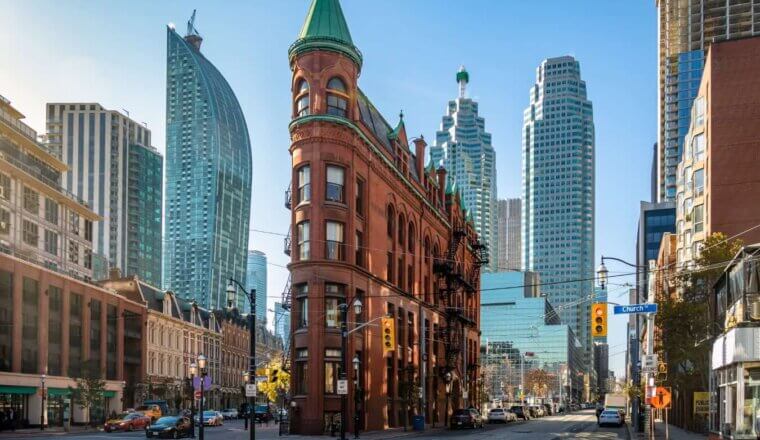
The 6 Best Hotels in Toronto
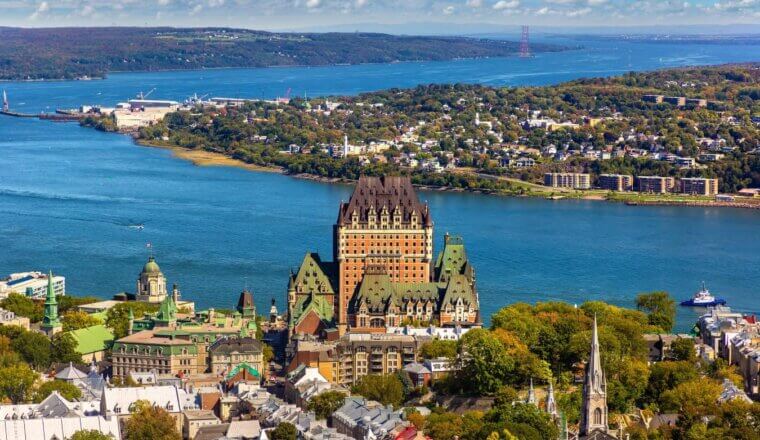
Where to Stay in Quebec City: The Best Neighborhoods for Your Visit
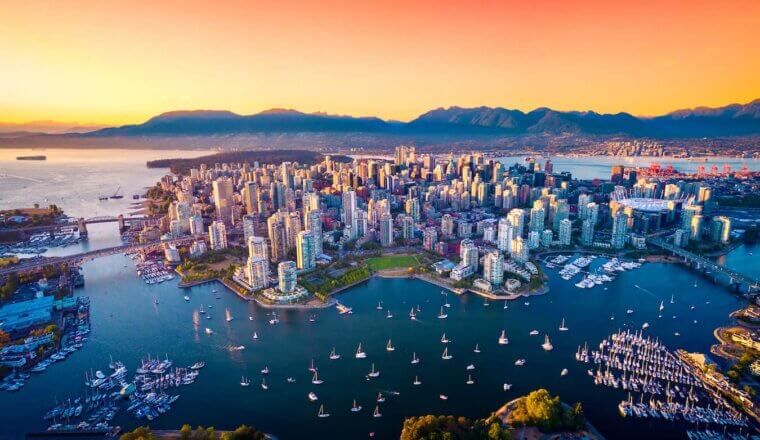
Where to Stay in Vancouver: The Best Neighborhoods for Your Visit
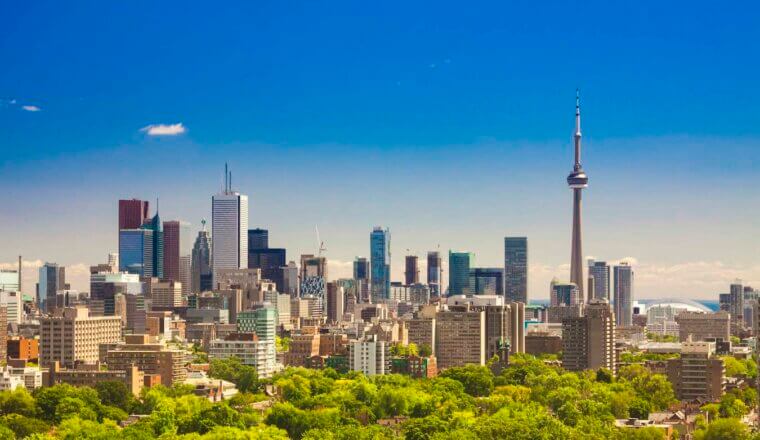
Where to Stay in Toronto: The Best Neighborhoods for Your Visit
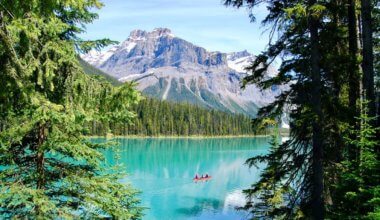
Canada Road Trip: A One Month Suggested Itinerary
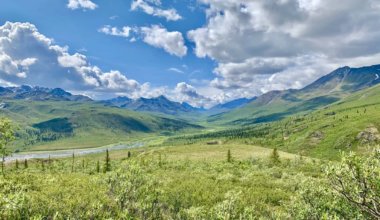
How to Road Trip the Yukon on a Budget
Get your free travel starter kit.
Enter your email and get planning cheatsheets including a step by step checklist, packing list, tips cheat sheet, and more so you can plan like a pro!

- Where To Stay
- Transportation
- Booking Resources
- Related Blogs

TRAVEL to CANADA – Tips and Information Guide (2024 Edition)
Everything you need to know about travel to Canada in our comprehensive 2024 Canada travel guide.
Have you ever wanted to see the Northern Lights? Or to explore the beautiful cities of Vancouver, Quebec or Calgary? What about venturing out into the world-renown national parks of British Columbia?
Unspoiled nature and incredibly vibrant urban areas create the perfect mixture of reasons to travel to Canada.
“The Great White North,” is a vast country that offers virtually unlimited opportunities for visitors of all kinds.
Whether searching for wildlife, landscapes, adventure activities or the culture of city life, travelling in Canada will give you a variety of experiences you are sure to remember.
There really is so much to do it can be overwhelming to plan to visit Canada. But getting started is not that difficult.
Read on to learn everything you need to plan for travel to Canada!
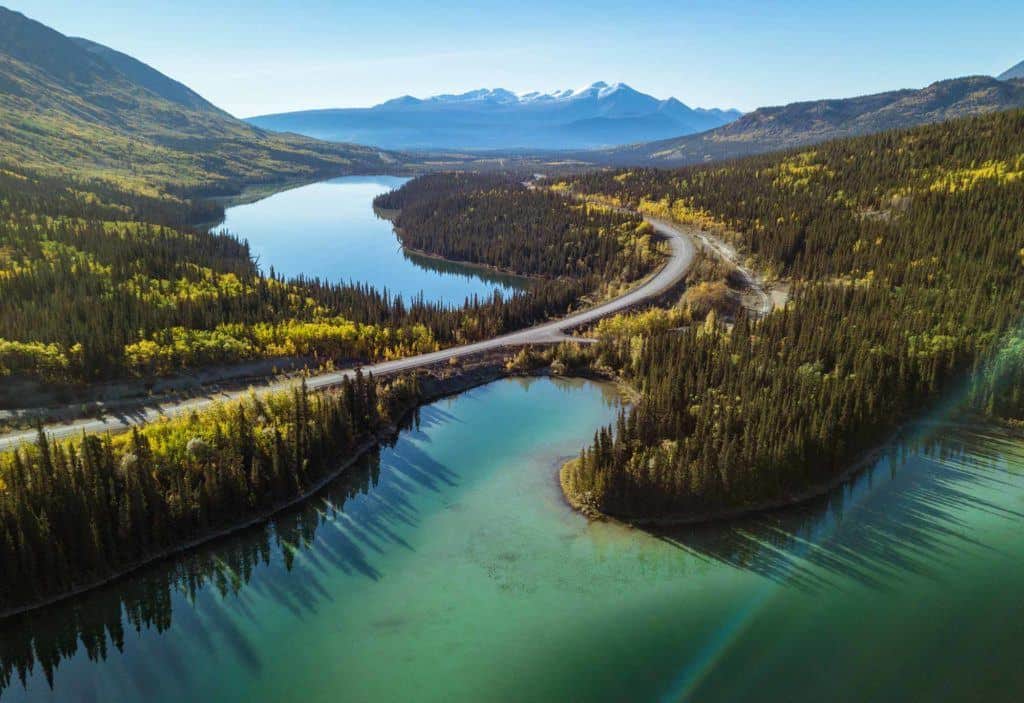
TRAVELLING IN CANADA: AT A GLANCE
Here are the basics of travel to Canada.
TOP 5 TRAVEL EXPERIENCES IN CANADA
With so much to see and do in Canada, it really is hard to pick the top experiences. We have written a comprehensive guide on the best things to do in Canada here.
However, we think that to truly appreciate Canada you need to plan to do these 5 activities during your visit.
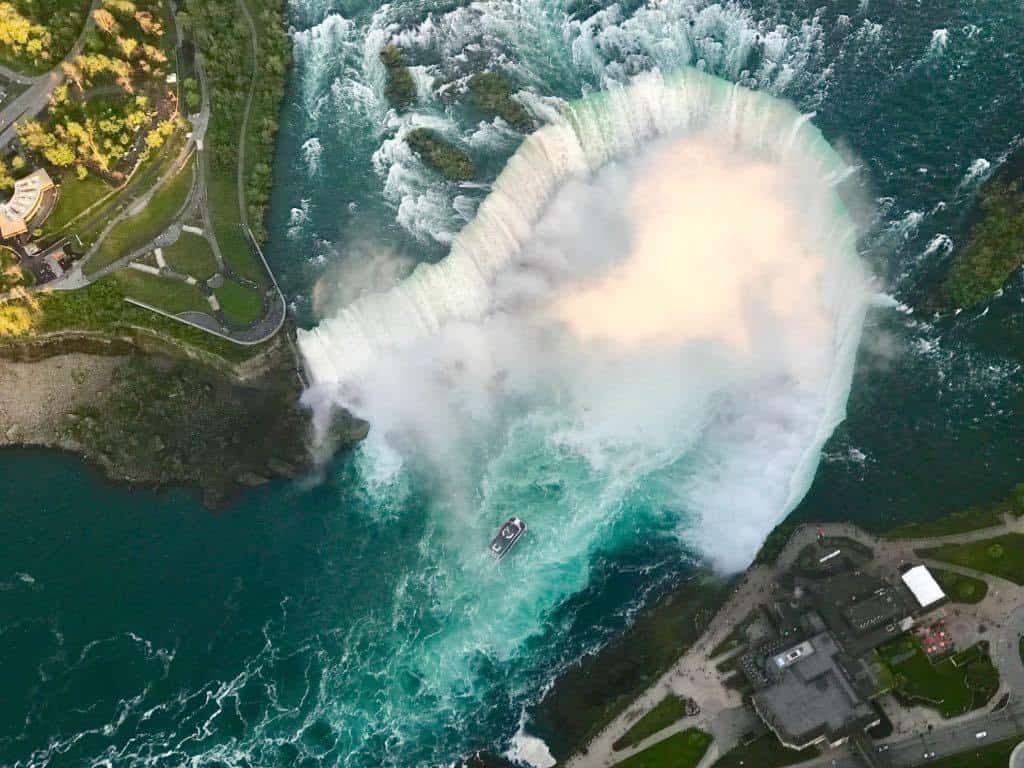
Check out Niagara Falls
Niagara Falls is one of the world’s most famous waterfalls and well worth a visit. Find yourself in awe watching the water tumble over the top of the falls. Or hop on a boat and cruise up to the falls from the river!
Read about all our favourite Niagara Falls attractions .
Explore the Canadian Rockies
From picturesque mountain peaks to stunningly blue glacial lakes, the Canadian Rockies in British Columbia have so much exploration to offer! This part of Canada could be a trip in itself!
Check out our ultimate guide to Hiking in Banff
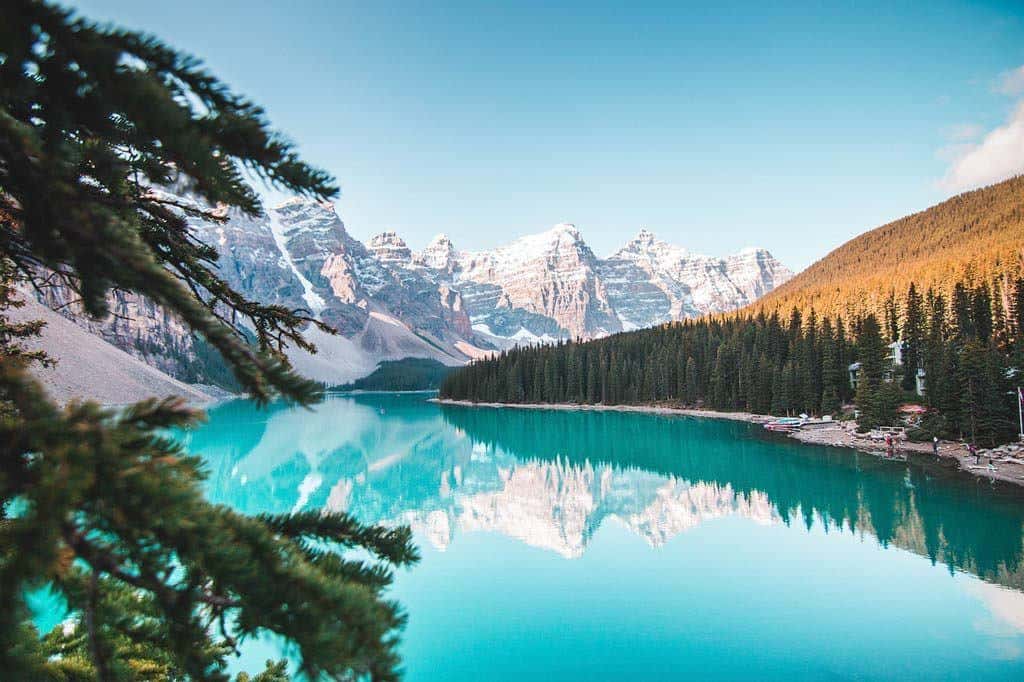
View The Northern Lights
Witnessing northern lights is one of the most amazing natural phenomena. The city of Whitehorse in the Yukon territory might be a perfect place for it! Your chances are highest between September and April since the nights aren’t dark enough during the summer.
Check out the Northern Lights in Whitehorse , Yukon Territory.
See Polar Bears
Churchill in northern Manitoba is known as the ‘Polar Bear Capital of the World’, making it an obvious choice to visit for travellers wanting to get close to the planet’s largest apex land predator.
See polar bears in Churchill, one of Canada’s best wildlife experiences .
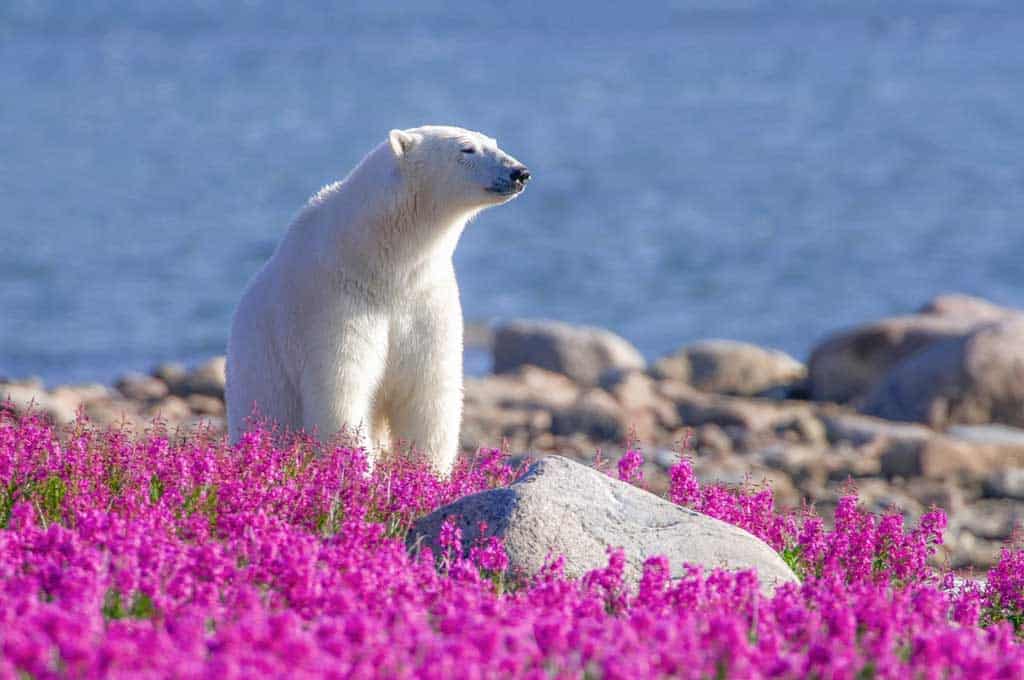
Drink the Sourtoe Cocktail
Taking a shot of alcohol with a frostbitten toe may not be on everyone’s bucket list. But if it’s on yours, you absolutely must try to Sourtoe Cocktail in Dawson City. It’s a strange, yet unique experience when you visit Canada.
Read more about the Sourtoe Cocktail and lots of other great things to do in Dawson City .
Other Things to do in Canada
Scale the CN Tower in Toronto. If you’re unafraid of heights, strap into a safety harness and walk around the top or just check out the views.
Visit Stanley Park in Vancouver. The world’s happiest city has much to offer . But most visitors start at this famous park downtown.
Take a drive on the Icefield Parkway. This incredible stretch of highway connects Banff and Jasper National Parks and is full of amazing landscapes and stunning wildlife!
Hang out with Polar Bears in Manitoba. View these dangerous, but remarkable, animals as they waltz around Churchill like they own the place.
Take a gondola ride in Banff. Situated in the heart of the Canadian Rockies, Banff boasts unrivaled beauty best seen by way of the gondola.
Eat poutine . A strictly Canadian plate, poutine is french fries and cheese curds covered in gravy. Try varieties all across the country!
Take a flight over glaciers in Kluane National Park. The only way to beat the spectacular views of driving or hiking the Canadian Rockies is to check them out from above !
Tour La Citadelle de Québec in Quebec City . One of the most visited cathedrals in Canada, you will feel lost in the grandeur of this sacred place.
Ride the Rocky Mountaineer train . The most relaxing way to enjoy the Canadian Rockies is touring them on this train ride from Vancouver to Banff .
Eat lobster in the Maritimes. Lobster doesn’t get much fresher than that caught and served up in New Brunswick and Nova Scotia.
Go dog sledding in the Yukon. Yes, there are humane ways to enjoy this absolutely incredible experience . Dress warm and enjoy the ride!
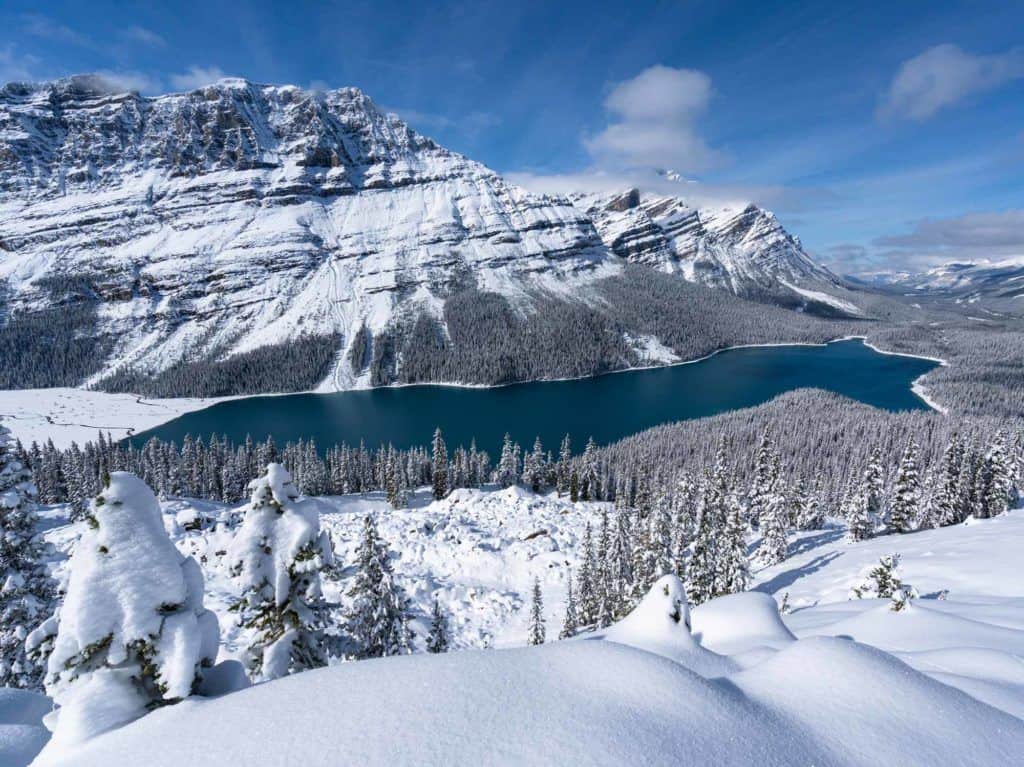
BEST PLACES TO VISIT IN CANADA
There are plenty of amazing places to visit in Canada. Depending on your interests, trip duration and time of year you will find plenty of things to do during any length of stay.
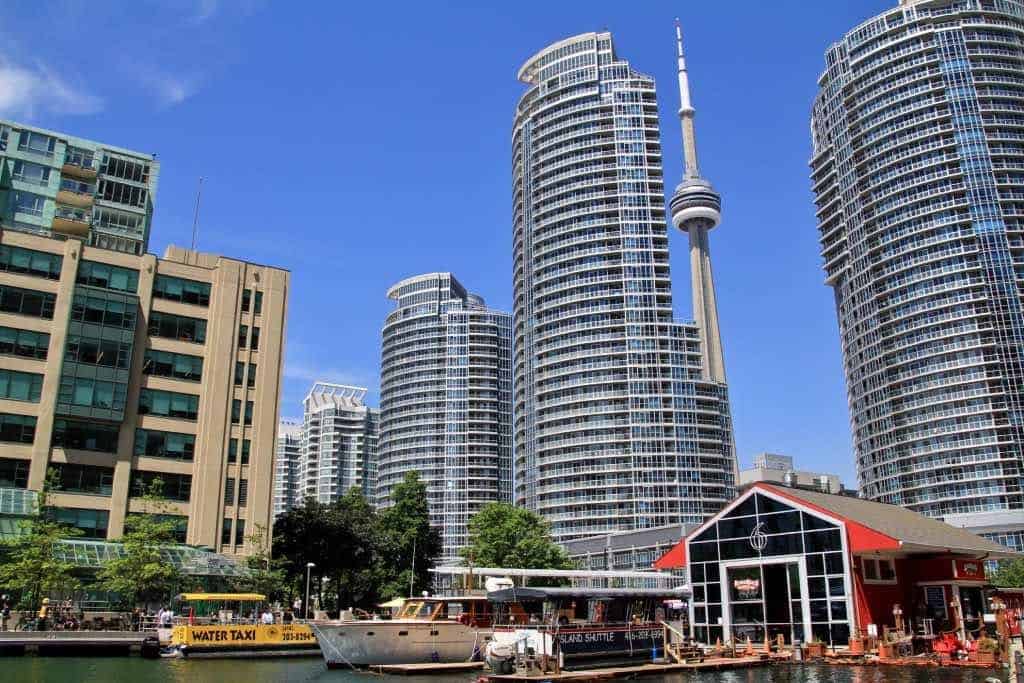
Toronto is not only the largest city in Canada but also truly one of the most stunning cities in the world. It’s famous for its diversity and travelling here will be a great chance to learn about different cultures! The people are incredibly nice, the sights are beautiful.
Check out our Toronto City Guide.
Montréal is a fascinating mix of Europe and North America. It’s a definition of a vibrant city – full of festivals, museums and must-visit restaurants. There’s an abundance of things to do there. Brush up on your French before your trip!
Check out our Montreal City Guide.
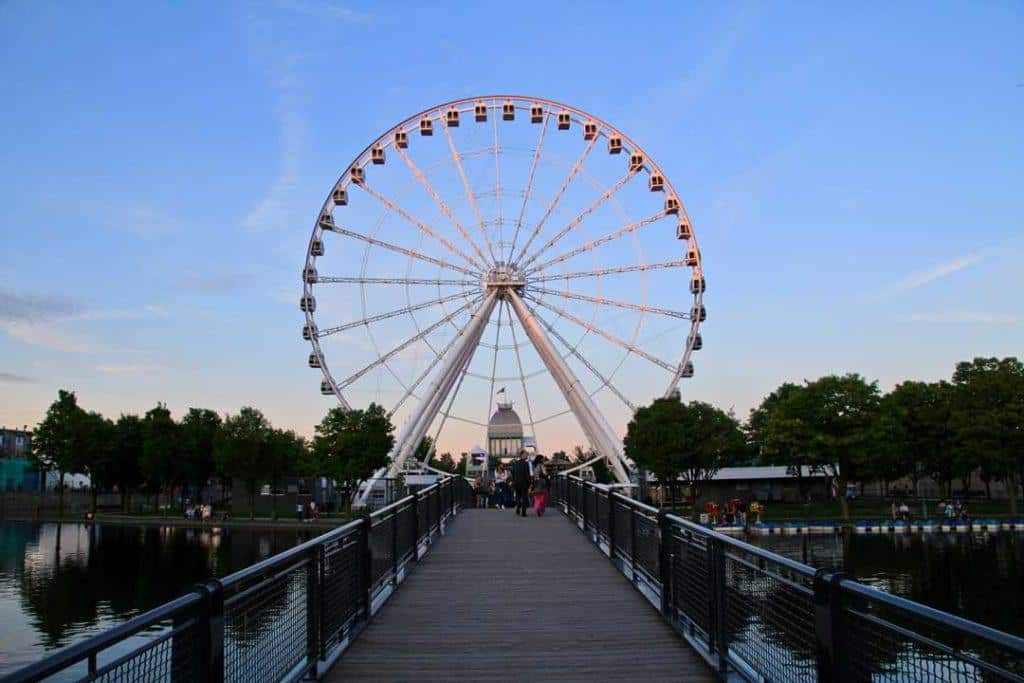
Vancouver is consistently ranked as one of the top places to live in the world. With picturesque scenery all around, tons of outdoor activities, numerous opportunities for wildlife encounters and many great day trips you absolutely have to add Vancouver to your Canada itinerary.
Check out our Vancouver City Guide.
Banff / Lake Louise
Lake Louise is one of Banff National Park ’s most famous sights. The extraordinarily turquoise water is a real feast for the eyes. Plus there is spectacular hiking, biking and even kayaking that you can do to further enjoy the beauty of the nature around. You can visit during the summer or spend your winter vacation here!
Check out our Banff City Guide .
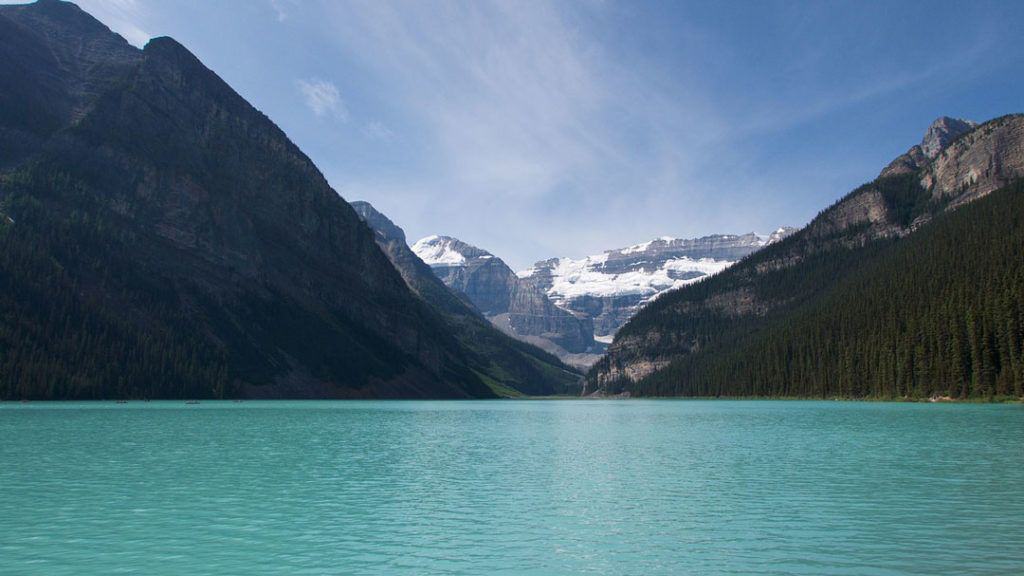
For more information on specific things to do in the top places to visit in Canada, reference our following city travel guides:
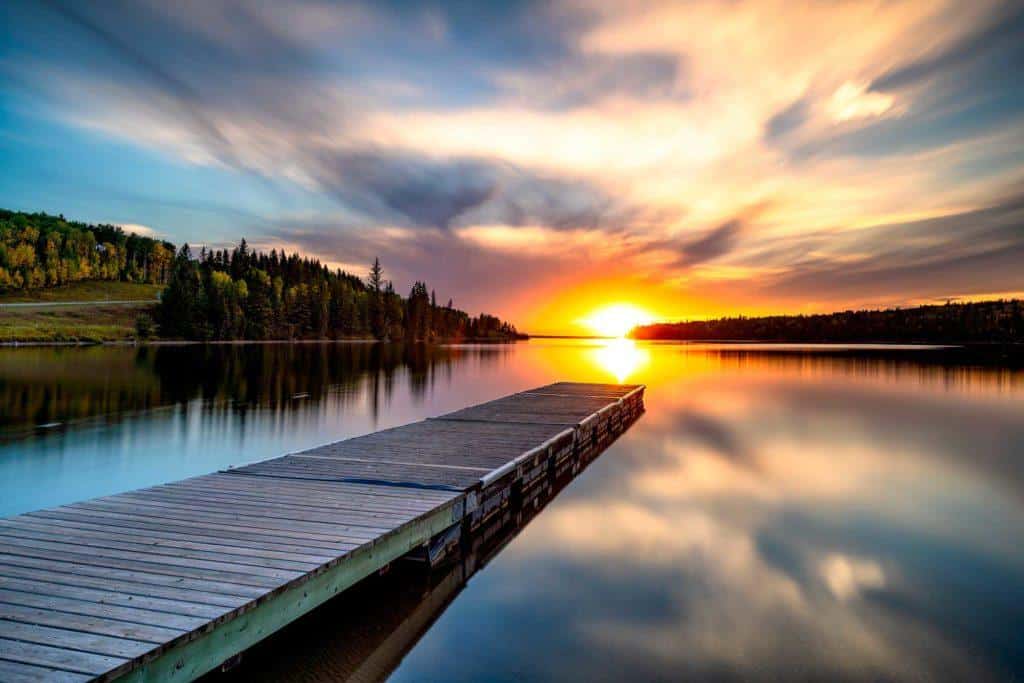
BEST CANADA TRAVEL ITINERARY
Canada is huge and there are so many amazing things to do there that planning an itinerary for your travel can be a little overwhelming.
We’ve divided these itineraries into Eastern Canada and Western Canada options for both 1 or 2 weeks. Having at least 1 month to road trip across the entire country would be ideal.
But short of this, your best option will be to plan to visit each side of the country separately.
Of course, no one-size-fits-all plan will suffice. But if we were to head back to Canada these are the top places and things that we would want to do!
1-Week Canada Travel Itinerary Highlights
Eastern canada 1-week itinerary.
- Fly into Toronto (2 days) / day trip to Niagara Falls
- Go to Ottawa (1 day)
- Go to Montreal (2 days)
- Go to Quebec City (2 days)
- Fly from Quebec City
Western Canada 1-week Itinerary (Road Trip)
- Fly into Calgary (1 day)
- Tour Canadian Rockies – Banff/Jasper/Yoho National Parks (3-4 days)
- Vancouver (3-4 days)
- Fly from Vancouver
2-Week Canada Travel Itinerary Highlights
This is an idea of how we’d spend 2 weeks in Canada.
Eastern Canada Itinerary
- Fly into Toronto (3 days)
- Day trip to Niagara Falls
- Go to Ottawa (2 days)
- Go to Quebec City (3 days)
- Return to Toronto
Western Canada Itinerary (Road Trip)
- Fly into Calgary (1-2 days)
- Banff National Park (1-2 days)
- Jasper National Park (1-2 days)
- Yoho National Park / Glacier National Park (1 day)
- Revelstoke National Park (1 day)
- Stop in Revelstoke (1-2 days)
- Drive to Vancouver (4 days)
- Day trip (ferry) to Victoria on Vancouver Island
- Fly out of Vancouver
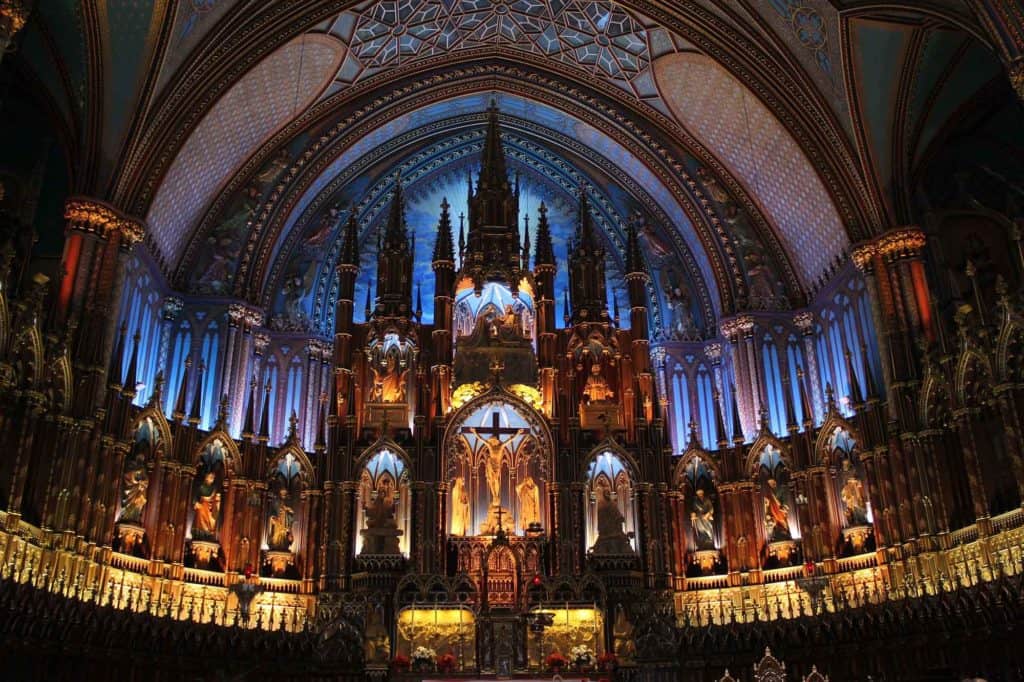
CANADA TRIP PLANNING
Best time to visit canada.
Since the country is so vast and diverse, there really isn’t a time of year unsuitable for travel to Canada.
Depending on what you want to do, you should pick the month of your trip accordingly.
Summer Travel (June – August)
The warmer summer months, such as July and August, are the most common times to visit Canada.
As in many countries in the northern hemisphere, summer in Canada is an ideal time of travel and adventure for many tourists. Expect to come across more tourists and higher prices during this time.
But don’t worry about the crowds and expense. Canada is beautiful during the summer!
It’s summer temperatures tend to not be as extreme as other summer destinations. Some parts of the country, particularly those further north and at higher elevations, will still see the snow melting well into June and July.
This is a great time to explore Canadian cities. But it is also the ideal time to visit any of the stunning national parks.
Winter Travel (December – February)
Winters in Canada can be very cold. But this is also a great time of year for winter activities, such as dog sledding , snowboarding/skiing and ice climbing.
But, keep in mind that some parts of the country deal with extremely uncomfortable temperatures.
For example, Winnipeg is Canada’s coldest city. Temperatures there can drop to -40°C at times!
Many of the places that are popular during the summer months are not as popular during the winter.
So if you would like to see parts of the country with fewer crowds than winter may be a great option for you.
Shoulder Season
The shoulder season in Canada is similar to other parts of the world. Spring and Fall tend to see less tourist traffic than the summer and winter months.
The months that are not very popular are April and November. They are often neither cold nor hot enough to enjoy certain activities.
However, the prices are much lower during this part of the year. So if you factor this into your planning, maybe this isn’t such a bad time to travel to Canada.
CANADA TRAVEL BUDGET GUIDELINE
Budgets for travelling in Canada can vary greatly. This depends on where you want to go, what you want to see and do, how you want to travel and the level of comfort you expect in your accommodations.
Canada is a highly developed country. As such many day-to-day expenses such as meals and accommodation can range in price greatly.
Here are a few ideas of what to expect in planning your budget to travel to Canada.
Budgeting Tips:
To make your money go further here are a few budgeting tips:
- Take public transportation or walk whenever you can.
- For longer trips, look for rideshare options on places like Craigs List and travel forums and groups.
- Buy food at local markets and cook your own meals as often as possible.
- Look for free events and festivals to attend in the cities you visit
- Consider couch surfing from time to time. And camping should be on your list of things to do anyway
- Look for last-minute deals on accommodation, travel and activities.
But there are a few things you should know about the different budgets at which you can choose to travel.
Note: Budgets shown as Single Traveller / Couples per day.
Budget Traveller ($40-75 Single / $100+ Couples)
If you are a budget traveller visiting Canada on your own you will have quite a challenge to keep yourself within budget.
The most affordable accommodation, besides Couchsurfing, are hostels and Airbnb. But not all places you’ll want to travel will have these options.
If you’re on a tight budget then you probably won’t eat at restaurants on a regular basis.
Your best options might be fast-food restaurants and buying your own groceries and cooking when that is an option.
Canada has open-air markets and lots of chain grocery stores where you can buy groceries at affordable prices.
When it comes to public transportation, the prices are different in each area. But they’re not exactly cheap anywhere.
Daily city transportation can cost around USD$10 and single tickets are around USD$3.
Additionally, you will need to budget separately for the various activities that you would like to do.
For example, ski passes in winter can be pricey. And daily entrance fees to national parks are reasonable but will add up.
Mid-Range Traveller ($125 Single / $175 Couple)
If you are travelling to Canada with a mid-range budget then you have some flexibility in your plans that you wouldn’t have on a tighter budget.
The biggest changes will be in accommodation and meals. You’ll be able to stay in moderately priced hotels and eat most of your meals in proper restaurants (even if it’s only fast food).
You might also choose to rent a car from time to time or to upgrade on tour options to do an activity that might otherwise not be in the backpacker budget.
Couples travelling at this budget will save considerable expense by staying in hotels and Airbnb options instead of hostels. Transportation costs could also be reduced for couples choosing to rent a vehicle.
Luxury Traveller ($350+ Single / $450+ Couple)
If you can afford to travel with a little more luxury you’ll find plenty of options to enjoy yourself in Canada.
Large cities, as well as certain vacation destinations, have top-notch hotels and resorts. And you’ll find great stays in boutique lodging all throughout Canada.
You will also be able to afford to eat at the best restaurants and indulge in local delicacies and staples across the country.
Aside from more luxurious meals and accommodations, there are tons of things you can do when travelling in Canada with a more substantial budget.
You will be able to rent a vehicle or hire transportation around town. When travelling across the country you will be able to save time by flying.
Additionally, your choice in activities will expand to more unique experiences. From riding the Rocky Mountaineer train to flights through glacial ice fields , there is no shortage of experiences well worth the higher costs.
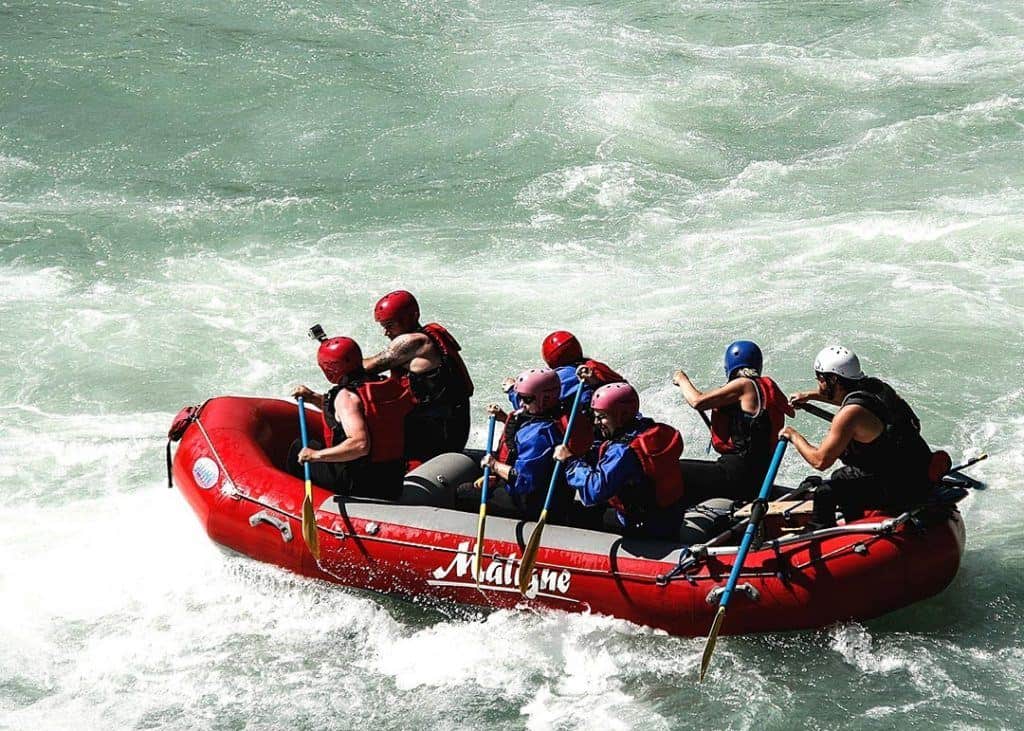
GETTING TO AND AROUND CANADA
Entry requirements.
Canada is relatively accessible for travel. Passport holders in 54 countries can visit Canada without obtaining a visa.
Canada will permit these travellers to stay in the country for up to six months.
Click here to see if your country is on that list. Others must obtain a temporary resident visa.
Travellers must also have an Electronic Travel Authorisation (eTA).
When applying for the eTA , visitors have to provide certain biographical details and passport information. Also, you’ll be asked about your employment information, available funds and your health and immigration history.
Getting to Canada
Since it is one of the most developed Western countries, there are multiple ways to travel to Canada.
The choice is yours depending on your needs and origins.
But you may want to consider comfort, prices, duration of trip and preferred method of travel as you plan how to get to Canada.
Canada has around 20 major international airports. This makes flying to Canada the quickest, most convenient way to enter the country.
The biggest and busiest airport is the Toronto Pearson International Airport. Direct flights to Toronto are available from a lot of cities across the world.
But you will also find international flights in and out of most major cities across the country.
Regardless of whether you put a lot of time into planning your trip or make a last-minute decision to visit Canada, there are almost always reasonable flight options available.
Sometimes it might also be cheaper to fly into the USA and then drive to Canada. So take that option into consideration.
Personal/Rental Vehicle
Many people travel to Canada as part of a North American exploration. Or you may find a better flight deal into a major US city like Boston, New York City, Chicago or Seattle.
As such you may find yourself driving to Canada from the United States.
In many places, it is very easy to pass between the Canadian/US border to visit nearby places in both countries.
Popular places include the Seattle/Vancouver area, Niagara Falls and Montreal/Vermont.
Roads between the US and Canada are generally in excellent condition. They are also marked well so navigation between the two should not be difficult.
Depending on your country of origin, time of stay and purpose for visit, passing through border security by vehicle is often less of a hassle than when arriving by plane.
If crossing into Canada from the United States, do check with your car rental company to make sure that you are able to do so without violating the terms of your agreement.
You will also want to make sure that the vehicle is insured in both countries.
If you’re going to travel to Canada from the United States, you can also travel by bus. Certain cities, like Seattle, Boston, Albany, Detroit or New York, have direct routes and inexpensive fares.
Some well-known bus companies that make trips between the US and Canada include Greyhound, Megabus and Quick Coach.
If you like to travel by train, then travelling to Canada from the US on a train is a great option. This combines relatively low costs, reasonable duration and incredible scenery.
In travelling from the US into Canada train you have two company options. VIA Rail Canada and Amtrak each have three routes that cross various borders between the US and Canada.
Further, all routes start and end in major cities so you can quickly orient yourself to other transportation options upon arrival.
Ferries can be a unique way to see parts of both Canada and the US that are not usually explored by most travellers.
At the moment, there are five ferries that travel to Canada from the United States.
Two depart from Maine and go to Yarmouth, Nova Scotia and Deer Island, New Brunswick (Bay Ferries Limited, East Coast Ferries).
Another two travel from Alaska to Port Hardy and Prince Rupert, both in British Columbia (Alaska Marine Highway System, BC Ferries).
Finally, you can get to Victoria, British Columbia from Seattle (Victoria Clipper).
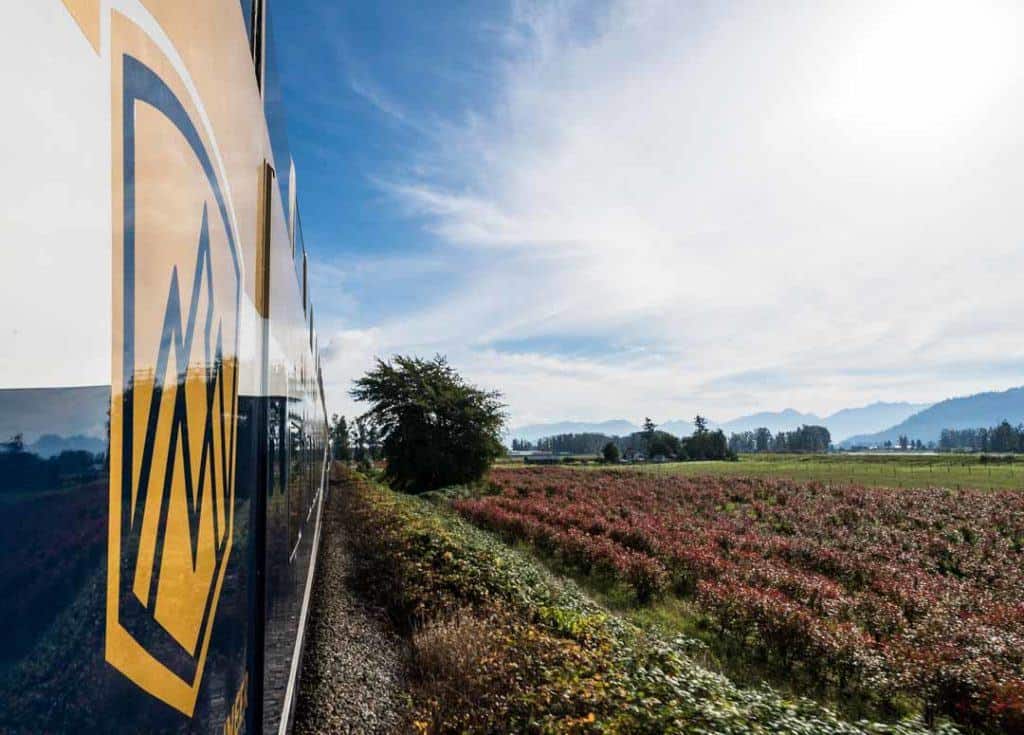
Getting Around Canada
It is pretty easy to get around when you are travelling in Canada. Expect to pay quite a bit more in Canada to travel between cities than in many less developed parts of the world.
And with higher costs, also expect longer durations in between destinations as distances in Canada can be great.
Travelling by Air
Travelling within Canada by air is the best way to cover ground quickly.
The county has many international and domestic airports. Sometimes, especially if you’re short on time, your best option is flying across the country.
In certain remote areas, there aren’t any other options besides air travel. When it comes to domestic flights, Air Canada has the best network of flights.
A few other companies include Air Creebec, Air St-Pierre, Pacific Coastal Airlines among others.
Travelling by Car
Rental cars are accessible and typically reasonably priced in more populated cities.
Much of Canada is best seen by rental car. There are many trips you can take to explore places considered off the beaten path for most.
Keep in mind that fuel prices can be high, particularly in less-trafficked regions of the country.
But a rental car would be a great way to explore the various cities in eastern Canada. It would also be the best way to get around the various national parks and other natural beauty in western Canada.
Travelling by Bus
In most cities, buses are the main form of public transportation. Toronto has the largest system, with around 140 bus lines.
Travelling by Taxi & Rideshare
Taxis are available everywhere in Canada. However, they are a very expensive way to travel.
You should ask the driver in advance what the price is going to be.
The prices are based on mileage and can’t be negotiated and are usually around USD$2 per kilometre.
In many of the larger cities you can also find rideshares such as Uber and Lyft.
These are often substantially more affordable than taxi. But note they are not always available outside of urban areas.
Travelling by Subway
Subway systems exist only in Toronto and Montréal. These systems cover the cities quite well. In Montréal, the subway network has 4 lines.
The daily tourist card costs USD$9 and a three-day pass costs USD$17. In Toronto, there are 3 subway lines available, and the daily pass costs USD$8.50.
In Vancouver they have the Skytrain network, which now connects the airport with downtown, making it very convenient to get around.
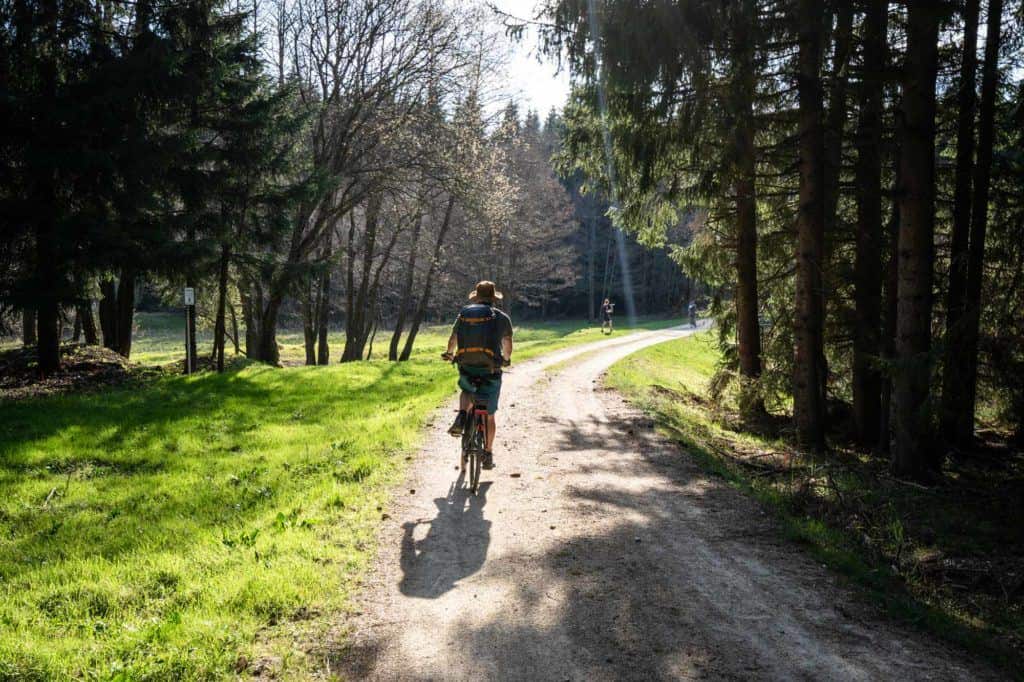
APPS AND TECHNOLOGY
Here are a few apps we think you should definitely acquaint yourself with prior to your travels:
- XE Currency – Transfer, monitor and calculate currency as the need arises. This app may not be totally necessary as you are typically tied into rates the banks charge for services. But it is handy to have around.
- Express VPN – This will protect your sensitive information wherever you travel – not just in Canada. Be sure to have this to keep your online information secure as you travel.
- iOverlander – iOverlander is any Canadian road trip enthusiast’s best friend. Find every resource you need on the road – from free or cheap campgrounds to places to eat or refill RV supplies if travelling by campervan or RV.
- Gas Buddy – This app will help you find the most up-to-date fuel locations and prices when driving nearly anywhere in Canada. This is especially important to have when covering large distances or across remote parts of Canada.
BEST THINGS TO EAT IN CANADA
Some Canadian specialities are worldwide famous. While some require some research to discover!
Here are some of the most popular dishes in Canada:
- Poutine : Probably the most well-known Canadian staple consisting of french fries and cheese curds topped with light-brown gravy
- Lobster Rolls : a sandwich made with lobster meat, lemon, and seasoning best served fresh in Nova Scotia or New Brunswick
- Butter Tarts : crumbly crust filled with a butter, sugar and egg cream
- Nanaimo Bars : a sweet, crispy and crunchy dessert bar with layers of chocolate and custard
- Montreal Smoked Meat : Delicious pastrami or brisket smoked and seasoned in a way particular Montreal
- Bannock : delicious native bread either baked or fried and similar to nan. Bannock is served in a variety of ways and included in almost every meal.
- Yellow Split Pea Soup : soup made with dried peas, veggies and salt pork
- Montreal Bagels : smaller and denser than its famous NY bagel, but usually with the typical everything seasoning
- All-dressed Potato Chips : a name given to some of the fanciest and most interesting flavours you can imagine for potato chips
- Maple Syrup : The maple leaf is iconic of Canada and the syrup from the maple tree is just as famous and delicious and well worth a try as often as possible
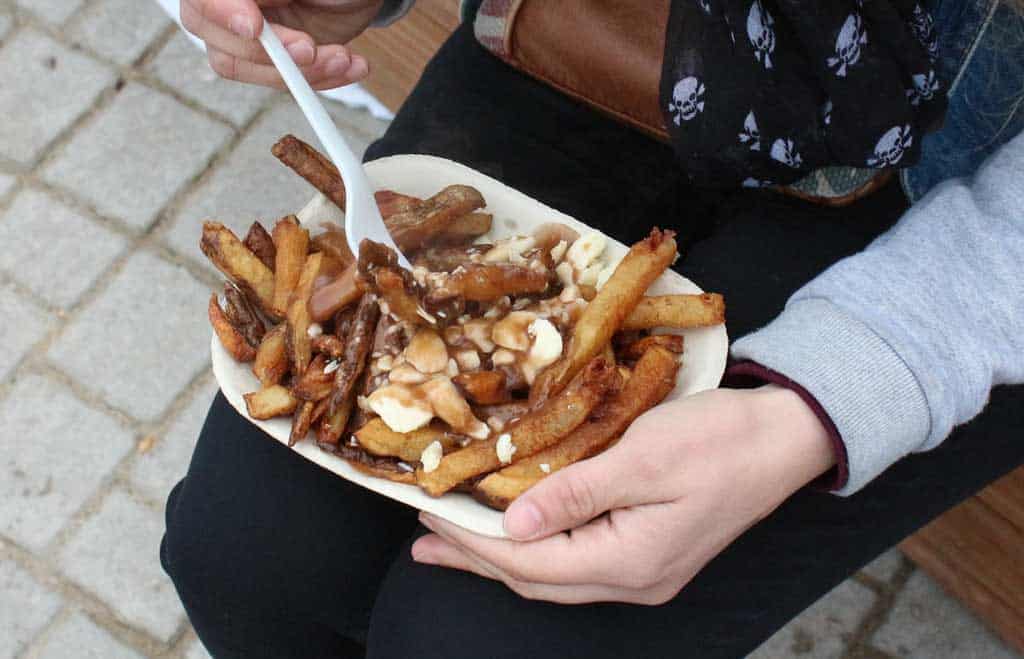
PLACES TO STAY IN CANADA
Canada is not exactly known for cheap accommodation. A highly developed country, rates can be relatively similar to those in Europe and the United States.
However, the prices vary and with advanced planning, you should be able to find a reasonably priced room.
Types of Accommodations
There are over 100 hostels spread out through dozens of cities across Canada. Staying in hostels is not only accepted, it is expected among budget travellers.
You can expect prices and amenities to be comparable to those in Europe. But remember many of the smaller towns and villages will not have hostels as an option.
Canada offers an abundance of hotels. These are typically the best option for travelers in a mid-range budget and are available in most cities and small towns and villages across the country.
Of course, prices range by location and amenities. And if you are travelling during the busier summer season be sure to book in advance.
Another good option for budget accommodation in Canada is Airbnb. In recent years Airbnb has been growing and there are more and more amazing places popping up in Canada to stay for very affordable prices every day.
As is typical in many destinations where Airbnb accommodations are available, you’ll likely find great value and a little more personal space with an Airbnb stay.
CANADA TRAVEL TIPS
Travel to Canada is more or less the same as travel to any country. But there are some subtle tips and tricks that will help make your visit safe, pleasant and more affordable.
GENERAL CANADA TRAVEL TIPS
While there are many basic travel tips we suggest you use when travelling to Canada, there are also plenty of Canada-specific tips that will make your visit the best it can be.
Here are a few we recommend you consider as you plan your trip to visit Canada:
- Pack (and dress) according to the weather. Depending on where and when you travel to Canada the weather can catch you off guard. From extreme heat to mind-boggling cold and everything in between, be sure to pack and wear what will keep you comfortable and safe.
- Have travel insurance. Canada has a fantastic health care system. But having travel insurance is always the best way to protect yourself financially from any mishaps on the road. Not sure you need it? Read this post .
- Be aware (and warned) of wildlife. Bear and moose look cute in pictures and videos. But they can be deadly in person. Canada abounds in wildlife so be mindful when you are out exploring.
- Know the emergency number. 911 is the same call for help in Canada as it is in the US. In some areas, 311 is also helpful for non-emergency situations.
- Tax and tipping are not included in meal prices. Know that tax will be added at the end of the meal and, while not required, tipping is customary at the 15-20% level.
- Pick up a little French. Depending on where you travel, it might be necessary. But you’ll find French is almost everywhere on signs and sometimes it will help to make local friends who can assist you in making the most of your trip to Canada.
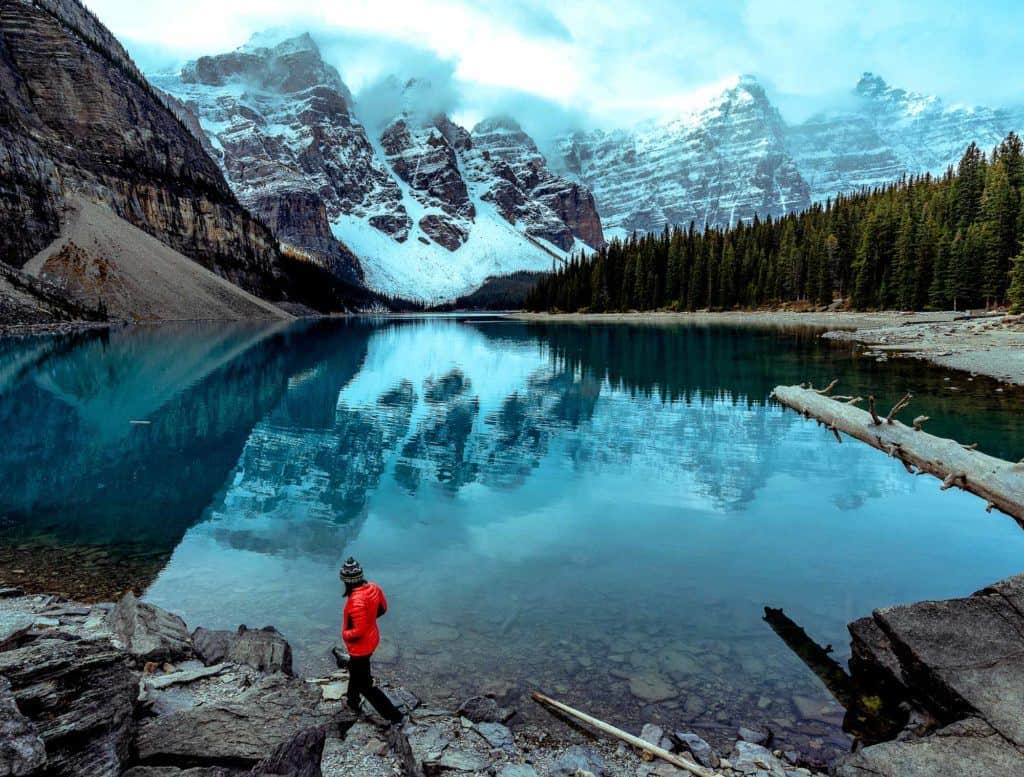
CANADA PACKING LIST
We always travel with a core packing list wherever we go. And when it comes to Canada, many factors will affect what else you need to bring along with you.
Check out our travel essentials and be sure to add any of the other additional items listed below.
Important Note! Before you book any international trip, we honestly recommend getting travel insurance. You never know when things will go wrong, and medical bills can add up quickly if you get sick or injure yourself overseas.
Our personal recommendation based on our own experience is World Nomads.
STAYING SAFE IN CANADA
Canada is a very safe country to visit. It has a very low crime rate and Canadian people are known for their hospitality and seem to always be willing to help someone in need.
Violent crime is basically non-existent in popular tourist spots.
Just like anywhere else in the world, there are some areas in big cities should be avoided. Ask the locals about those neighbourhoods so you can enjoy your trip in peace.
Also, take care of your personal belongings, since tourists are often victims of petty thefts.
Canada is also one of the safest countries for female travellers.
You shouldn’t have any problems if you’re travelling solo. Just keep in mind the same general safety tips you would use anywhere else in the world.
If you’re visiting the Canadian wilderness, watch out for the wild animals.
Every year tourists are attacked by bears, moose and bison. But this is usually due to not respecting the space of the animals and approaching too close to them.
Please mind the wildlife when you see it!
Your best option is to explore and area with someone familiar with it. But if that’s not possible, just be careful and study your maps, have bear spray, whistles and bells and know any regional laws or warnings when it comes to wildlife.
Check out our best travel tips to help you navigate around safely.
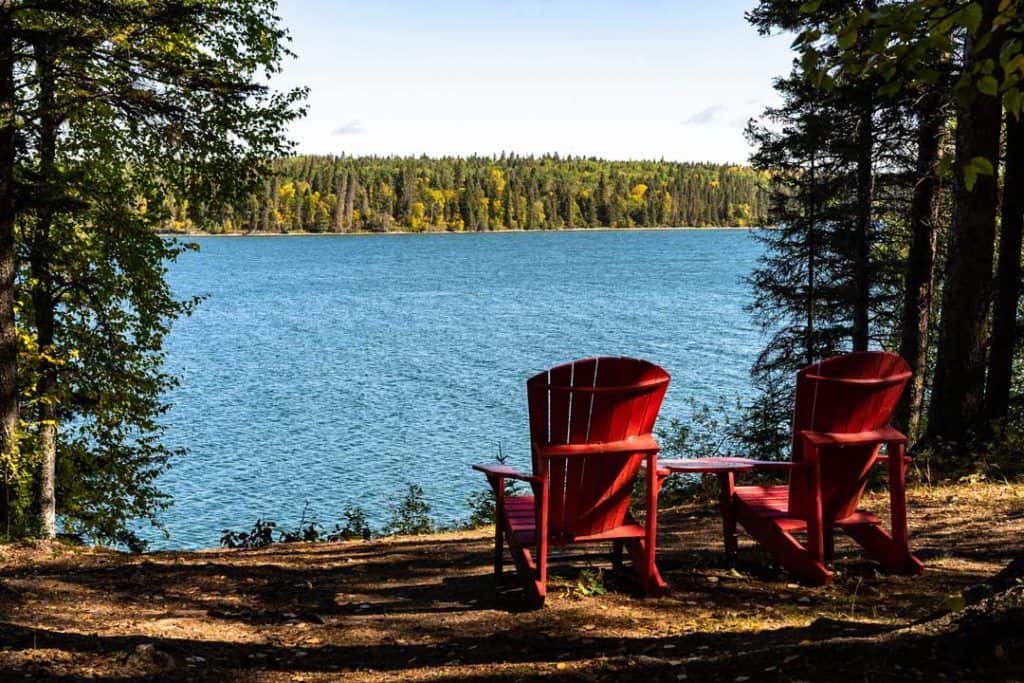
STAYING CONNECTED IN CANADA
Canada is a developed nation and staying connected while travelling in Canada is not very difficult. Of course, there are more remote places you can travel where cellular service will be limited.
And if you drive across the country you’ll experience long stretches of highway where you may have hit-or-miss cellular service.
In general, you can expect to connect to WiFi in a few ways for little to no cost. But we feel like your money will go a lot further if you consider a few other options.
Purchase a SIM Card
Purchasing a SIM card is one of the best ways to access local wireless networks in most countries.
In Canada, you can purchase a SIM card in any of the country’s 3 major carrier stores and at convenience stores and kiosks in major cities. Apply funds for prepaid service and purchase data as you need.
Then throw up a hot spot from your mobile device if you’d like to get online with your computer or tablet.
Rent a Portable WiFi Device
Portable WiFi devices are also readily available across Canada. Roam Mobile, WiFi Cube and MyWebspot Mi-Fi are just a few of the handful of options to look into if you don’t have a qualifying portable WiFi device of your own.
Access Free WiFI
Of course, the easiest and cheapest option to stay connected in Canada is to access free WiFi at a variety of places across the country.
Most hotels, hostels and Airbnb accommodations offer free WiFi.
And if you are out and about you can expect fast food and coffee restaurants such as Tim Hortons, McDonald’s and Starbucks to provide free WiFi as well.
BE A RESPONSIBLE TRAVELER IN CANADA
As is the case whenever you choose to visit and interact with people and places in a foreign land, Canada offers you the opportunity to be responsible in your journey.
Here are a few things to consider as you plan to travel to Canada:
- Leave the natural environment better than you found it. Pretty standard stuff here: pack out your trash, stick to the trails, pick up after yourself.
- Leave wild animals alone. Canada is full of wildlife encounters sure to change your life. But don’t touch, feed or otherwise harass wildlife.
- Be your own transportation as often as possible. Adding a bit of walking or biking to your travel plans reduces the impact of taking vehicles that contribute negatively to the environment.
- Support locals as often as possible. Sure the bigger cities will be full of big brands and mega shopping centres. But as you wander into more remote parts of the Great White North be sure to support smaller, independent businesses as often as possible – including merchants and tour operators.
BOOKS TO READ ABOUT CANADA
Maybe you already know everything about Canada. Chances are you don’t!
But even if you are well-read, here are a few suggestions that might be worth your time while you’re on the plane to Canada.
Canada (Mike Meyers) – Yes, Mike Meyers the comedian and actor has written a book that shows his take on his homeland from his hilarious, if not entirely quirky, perspective.
Alone Against the North (Adam Shoalt) – In a wild adventure that crowned him the “Canada’s Indiana Jones,” Shoalt embarks to explore the Again River in a way that shows that there are still parts of the world unexplored.
Why I Hate Canadians (Will Ferguson) – A humorous, satirical account of Canadian culture and history that sets out to show that opinions on Canada are best expressed through personal experience.
An Inconvenient Indian (Thomas King) – A serious, albeit darkly humorous, look at the Native American – White relationship that has taken place in Canada and throughout North America in search for ways for the collective culture to move forward in meaningful ways.
Read Our Canada Posts
Is dog sledding cruel the truth about dog mushing tours, the perfect banff itinerary you can’t miss (2024 guide), 25 awesome things to do in banff, canada, the ultimate guide to yoho national park in canada, the golden circle route – an epic yukon road trip itinerary, 17 awesome things to do in dawson city, yukon, the perfect 3 days in vancouver itinerary (2024 guide), 7 awesome day trips from montreal (2024 guide), the perfect 3 days in montreal itinerary, the 10 best day trips from toronto, 21 awesome things to do in toronto, canada [2024 guide], 11 fun things to do in hamilton, ontario.

Canada Travel Guide
Your ultimate canada travel guide, with tips, ideas on things to do, and best things to see in canada. great for first-time and returning travelers..
Why Canada ? Full of natural beauty and plenty of activities for fans of the outdoors, Canada is a great vacation spot.
From skiing and snowboarding to kayaking and canoeing, to spotting grizzly bears and the Northern Lights, there are many things to see and do in Canada.
Add in metropolitan cities like Montreal with its shops and exciting nightlife, and Canada has something for everyone.
This Canada travel guide will help you plan your next vacation.
To browse all our articles about Canada click here.
Popular City Guides
- Quebec City
Our Highlight
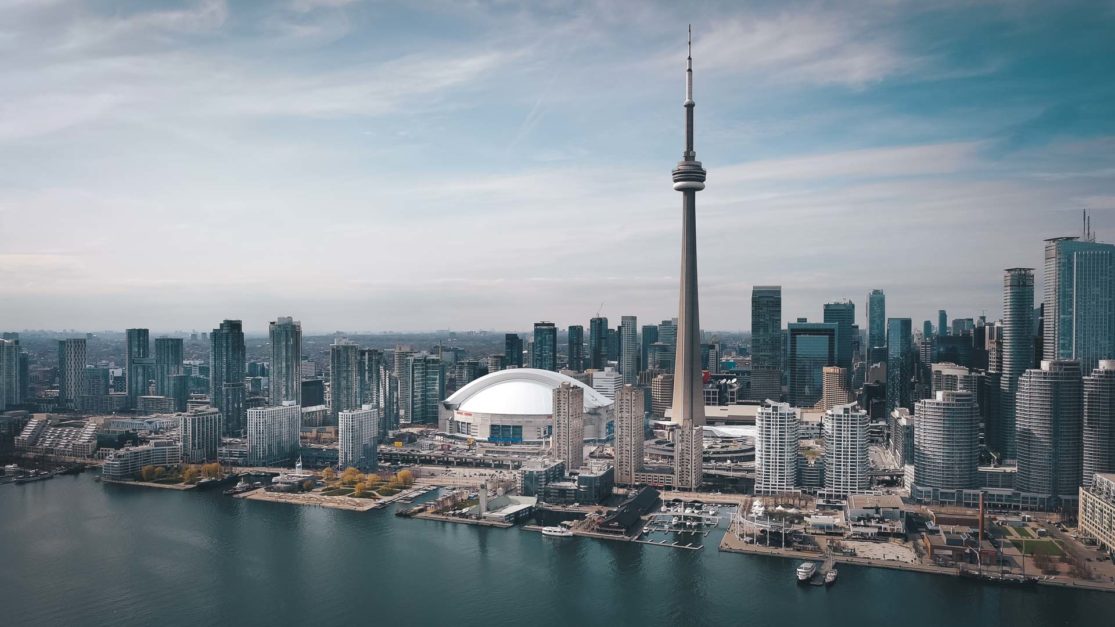
Table of contents
Table of Contents
Fast Facts about Canada
- Currency: The official currency is the Canadian Dollar and 1 Canadian Dollar is equal to 0.79 USD. American dollars are accepted in Canada, though change will be in Canadian Dollars.
- Power: Power voltage is 120V at 60 Hz.
- Entry: To enter, you will need a U.S. passport valid for at least 6 months after your departure date.
- Getting Around : The best way to get around is by public transport or renting a car but beware, Italians are hairy drivers!
- Sales tax : The provincial sales tax for goods and services is set at 7 – 8%, plus GST which is set at 5% which can bring the tax up to 15% depending on the provinces. For more information click here
- The Capital City of Canada is Ottawa – See the Best Things to do in Ottawa.
Things to See and Do in Canada
- Whistler, BC – Largest Ski Resort in the World, Hiking and Downhill Mountain biking, Bobsledding , snowmobiling , outdoor fun.
- Our particular favourite is snowboarding in Whistler or Lake Louise
- Walking with Polar Bears in Manitoba.
- Kayaking the Bay of Fundy in New Brunswick or Nova Scotia.
- Quebec City is Canada’s most European destination and one of the oldest cities in North America established way back in 1608
- Aboriginal Experience – Canada’s First Nations People are welcoming and are a fascinating culture to visit. There are many chances to immerse in aboriginal culture in Canada.
- Niagara Falls – The Canadian side of Niagara Falls is an amazing destination with magnificent views, nightlife and lots of things to do.
- Icefields Parkway – One of the world’s most beautiful drives is from Banff to Jasper and not to be missed.
- Cabot Trail – Incredible scenic drive on the East Coast with whale watching, lobster fishing and awesome views.
Canada Travel Guides
- Best Things to do in Toronto
- Best Things to do in Alberta
- Epic Things to do in Ontario
- Beautiful Places in Alberta
- Nova Scotia Road Trip
- Drive the Dempster Highway
- Best British Columbia Road Trip
- Things to do in Winnipeg
- Best of New Brunswick
- Things to do in Prince Edward Island (PEI)
Accommodation
Budget: You can find a number of budget hotels and hostels for around 20-65 Canadian Dollars. Enjoy dorm-styled or private rooms, common areas, shared kitchens, free Wi-Fi, and easy access to city or scenic locations.
Mid Range: For mid-range hotels, expect to pay 100 to 200 Canadian Dollars per night. Stay in hotels with private rooms, free Wi-Fi, a fitness center, complimentary breakfast, and a restaurant and bar.
High End: Upscale hotels will range from 230 to 500 Canadian Dollars, with the top hotels going up to over 1,000 Canadian Dollars per night. Take in the best with top-of-the-line hospitality and room service, upscale private guest rooms, spa services, indoor and outdoor pools, fitness centers, fine dining, and more. Certain hotels near the water also provide kayak services.
- If you are starting your trip in Toronto check out our suggestions for where to stay in Toronto
- Read: Where to Stay in Vancouver and Where to Stay in Montreal
- Check out our favorite booking platforms Booking.com , Tripadvisor and VRBO for the best deals on accommodation.
The food in Canada has a wide variety of influences, including French, English, Scottish, and First Nations cuisine.
Poutine (fries, gravy, and cheese curds) is a popular dish here, while Nova Scotian lobster rolls are another. If you’re looking for some snacks or desserts, try a Montreal bagel (a sweeter version of a New York bagel, usually topped with sesame or poppy seeds) or a butter tart (eggs, butter, and sugar baked in a pastry shell).
Canada has many great restaurants and cafes where you can try some Canadian food. Expect to pay around 65 Canadian Dollars for a day of food.
Canada’s national drink is the Bloody Caesar, it’s like a Bloody Mary but it is made with Clamato juice. Give it a try, you’ll love it.
The Best Ways to Get Around Canada
Getting to canada:.
The Toronto Pearson International Airport is the busiest airport in Canada and is just a 30-minute taxi ride to downtown or you can take the UpExpress leaving the airport every 15 minutes to downtown.
The Vancouver International Airport and the Montreal-Pierre Elliott Trudeau International Airports are two alternative options, especially when traveling to those cities.
You can check for the best flights to Canada on Skyscanner .
Transportation:
Canada is a massive country and if you want to get around from Province to Province, the best bet is to fly.
Trains are a fast way to get around, especially in larger cities but trains are more expensive in Canada compared to places like Europe and Asia.
If you want to go from Toronto to Vancouver at a more leisurely pace, take The Canadian, an 86-hour trip where you can enjoy beautiful scenic views, dine and sleep in a bed in your private cabin, and enjoy stops at Winnipeg, Edmonton , and Jasper.
Buses : Buses are a good way to get around. You can take the Greyhound or the Megabus and it is a cheap option to get from city to city.
Major cities have rapid transit and light rail systems to get you where you need to go quickly. A typical fare is 3.64 Canadian Dollars.
Taxis: Taxis are an alternative way to get around. Prices typically start at 3.50- 4 Canadian Dollars and increase 2 Canadian Dollars per kilometer traveled. Uber and Lyft are widely used in major Canadian cities.
Car Rental: To rent a car, you must be at least 21 years old and have a valid driver’s license. Check for prices and availability here.
When to go To Canada
- Canada has four seasons and there is no bad time to visit Canada if you are prepared for the weather.
- Summer (June to August) is a good time for road trips , canoeing, hiking, and exploring cities.
- Winter (November to February) is great for skiing, ice skating, and winter carnivals .
- Spring (late March to May) can be unpredictable with a mix of snow, rain and warm sunshine and the same can be said for Autumn (September/October) although Autumn is usually dry.
- September through November is considered the best time to go to Canada, as peak tourism has ended (meaning fewer crowds and lower hotel prices) and there are many beautiful autumn leaves to see. However, for those going to Canada for winter sports, January to March is when the snow conditions are at their peak and is a great time for skiing or snowboarding.
Where to Stay in Canada
Fairmont Lake Louise : Fairmont Lake Louise. I don’t know if there is another hotel in the world with a view like this. It’s worth the spurge to spend a night here when visiting Banff.
Ritz Carlton Toronto: The Ritz Carlton Toronto is in the heart of it all near the Entertainment District, Harborfront, and CN Tower. Pure Luxury in Canada’s Largest City
Prince George Hotel Halifax : Located in the heart of Halifax this grand hotel is pure luxury and within walking distance of everything.
Check out our favorite booking platforms Booking.com , Tripadvisor , and VRBO for the best deals on accommodation.
Canada Accommodation Guides
- Where to Stay in Toronto
- Where to Stay in Niagara Falls
- 24 Fantastic Things to do in Saint John New Brunswick
- Where to Stay in Vancouver – Best Hotels & Vacation Rentals By Area
- Things to do in Calgary, Alberta
- Where to Stay in Montreal
- Where to Stay in Nova Scotia
- 15 Best Things to do in Saskatoon, Saskatchewan
- Where to Stay in Banff
- Things to do in Jasper
- 14 Things to do in Winnipeg – Plus Other Hidden Gems
- The Best Things to do in Toronto – A Guide to the Top Attractions
What to Pack for Canada
If you travel to cities like Toronto, Vancouver, or Montreal in the summer, it’s hot and you can dress as you would in any major metropolis around the world. For winter travel in Canada, expect extremely cold weather. Canada has winter, period.
If you are going to the Rocky Mountains, the North or East Coasts, it can be cool any time of year so pack in layers. Nights can get cool even in the middle of summer in all provinces.
- Hiking Boots: Keep your feet comfortable with a sturdy pair of hiking boots.
- Layers: Be prepared no matter the weather by bringing clothes with layers.
- Waterproof Coat: As it can rain, a waterproof coat is a good item to bring.
- For winter travel to Canada, check out our tips for how to survive the winter deep freeze.
- Dress in layers and be prepared for cool nights, (even in the summer and especially in the mountains.
- How to Pack for a winter vacation read – Travel Tips for Winter Packing
Canada Travel Guide: Best Booking Resources
Whenever we travel to we make sure to start with these companies. We have tried a lot of different ones over the years and all of these have consistently proven to be the best when it comes to offering great prices.
We have used every one of these personally and continue to do so.
- Booking.com : This is our go site to when comparing prices for accommodation. It usually has the cheapest prices, especially in Europe and we love their interface. Not to mention you get free cancellation and you are guaranteed the best price.
- Trip Advisor : What we like about Trip Advisor is that we can look at all the reviews and then book our accommodation. TripAdvisor is where we go when we want to compare prices with multiple accommodation providers.
- VRBO : is the main search engine we use when we are looking for a home or apartment rental. It can sometimes be cheaper than hotels and it is the best way to stay in areas that offer a more local feel.
- Hostelworld : With one of the largest databases of hostels in the world, Hostelworld is the go-to site when you are looking for budget accommodation.
- Skyscanner : This is the first place we check for flights. It consistently comes back with the cheapest and best options. It allows us to compare a lot of airlines to get the best price.
- Rome 2 Rio : If you want to see how to get somewhere by plane, train, bus, ferry or car Rome2Rio lays it all out for you as well as related costs.I love how they show it all to you on a Google Map and it works offline.
- Get Your Guide: For all your day trip and city guide needs, we use Get Your Guide. It has the world’s largest collection of things to do with more than 30,000 activities in 7500 destinations.
- World Nomads Insurance: When traveling to Italy you should always have travel insurance. We have found the best bang for your buck is by far World Nomads.
Canada Travel Guide: Related Articles
To browse all our articles and guides about Canada click here.
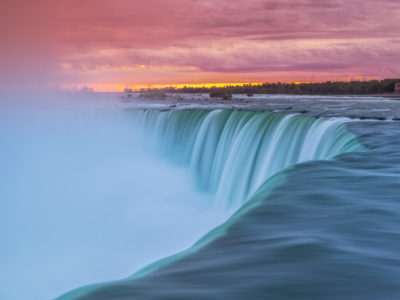
25 Best Things to Do in Niagara Falls, Canada in 2024
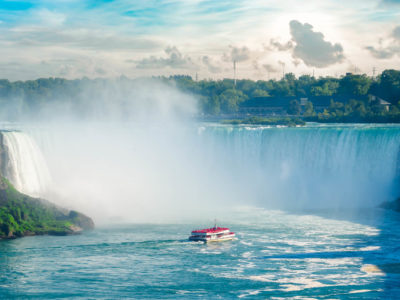
The Perfect 48 Hours in Niagara Falls Canada
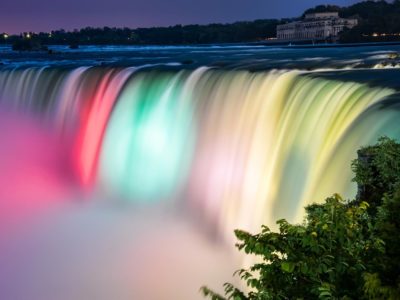
12 Fun Things to Do in Niagara Falls at Night

6 Epic Canada Itineraries for The Perfect Adventure
Explore Canada – the Great White North – with these inspirational Canada travel itineraries. Whether it’s an adventure in the Rockies or a deep-dive into Quebec, plan your trip with this epic guide.
When I’m daydreaming about Canada , the wild outdoor landscape and warm locals are often the first two things I think of. In fact, it’s why I’ve been back a fair amount over the past few years.
Because it’s one of the largest countries in the world (the second by land mass), there are a lot of ways you can plan a trip to this exciting stretch of oceanfront, mountains and valleys at the top of North America . Bring your appetite and sense of adventure because no matter where you go – you’ll find surprises around every trail and cobbled street.
But how can you plan the perfect Canada itinerary? Get your suitcase packed – we’re going to take a jaunt through the best Canadian vacations – all mapped out for your next holiday.
Canada Itineraries
Best of canada in one month itinerary.
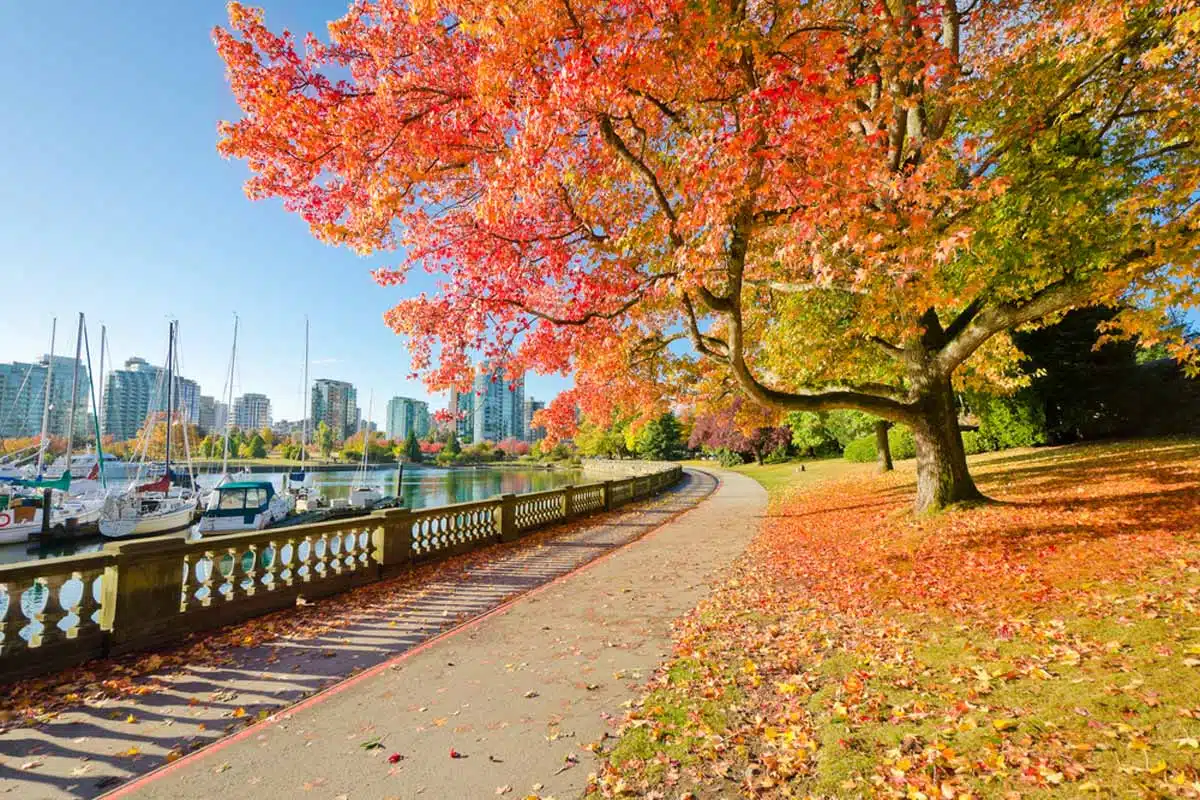
Ok, so seeing all of the best of Canada in a month is no easy feat. But I’m confident this 30-day Canada itinerary will show you enough of the country to scratch that itch for adventure in the north.
This Canada itinerary moves from the West Coast to the East Coast, stopping by the most famous cities, cultural landmarks, and national parks along the way. It’s a whirlwind tour that covers a lot of ground (around 3,000 miles), but you’ll have plenty of time to explore and learn more about each location over the course of a full month.
Route Summary
Vancouver >> Calgary >> Banff and Lake Louise >> Jasper >> Toronto >> Montreal >> Old Quebec
Distance: 3,000 miles (4,800 km)
Length of Trip: 1 Month
How to Do It: Planes and Cars
Highlights of the Trip
Walking around vancouver.
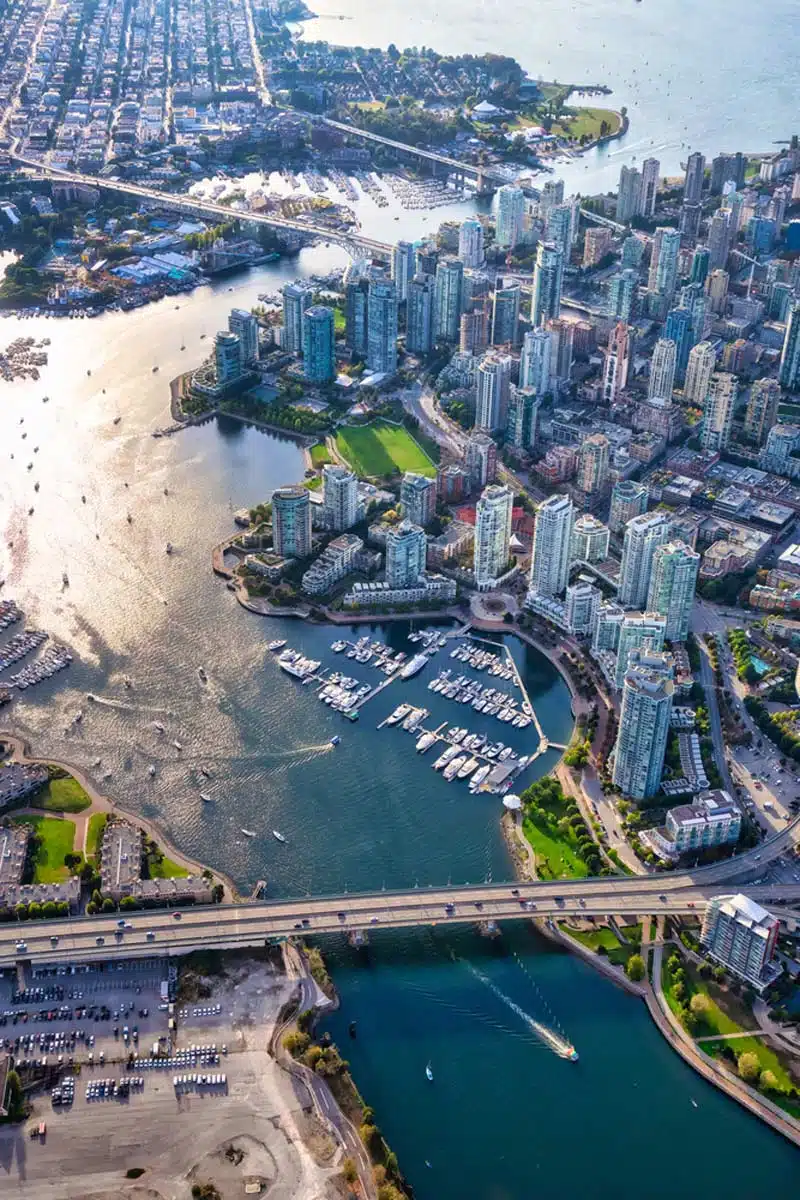
Set aside time to explore, Vancouver is an excellent walking city. Visit Stanley Park and VanDusen Botanical Garden to see some of the most beautiful green spaces in the city. Schedule a visit to Capilano Suspension Bridge Park to walk the long, towering bridge in the rainforest.
Suggested Stay: Level Downtown – Howe
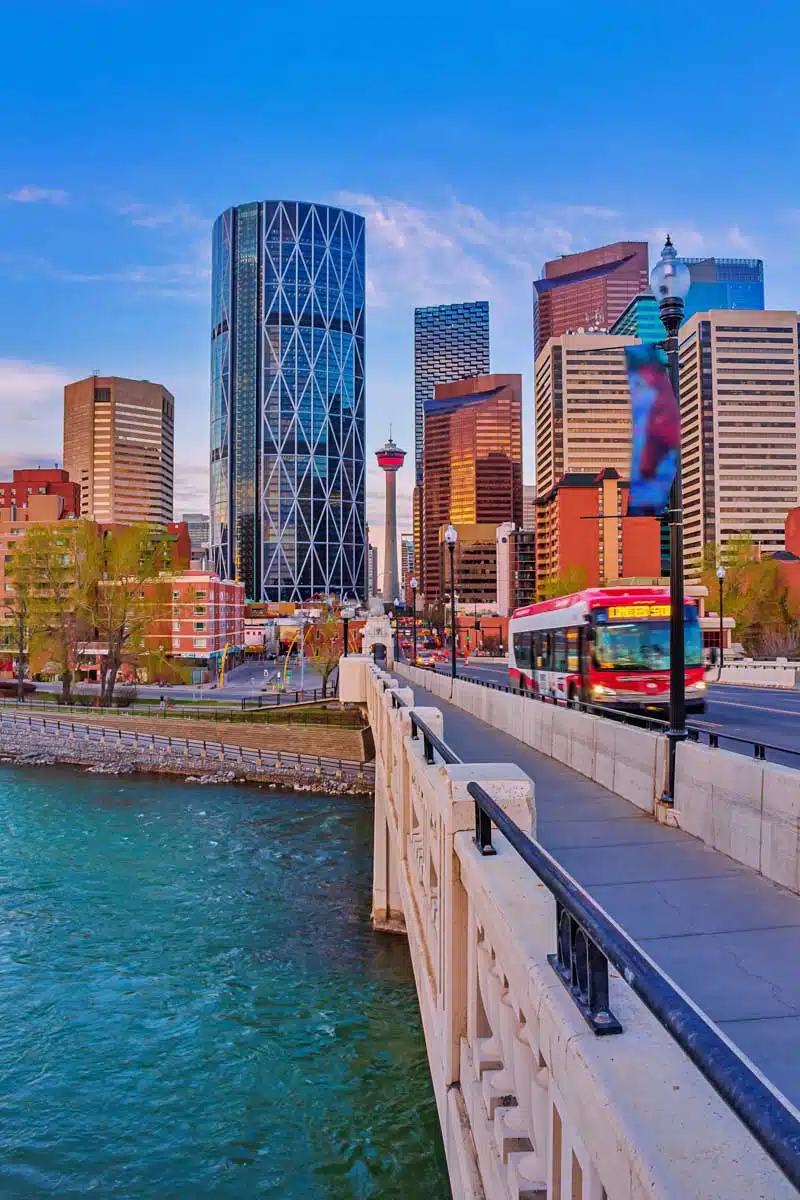
Calgary is a great home base to explore the Rocky Mountain National Parks. But there’s also plenty to do within city limits. Make time to try a Caesar cocktail (a bloody mary made with clamato) at the Westin – where the legendary Canadian cocktail was born. Then spend an afternoon chilling by Bow River at Prince’s Island Park or head inside the atmospheric Wednesday Room and order a plate of “dirty fries,” which is not your mother’s plate of poutine.
Suggested Stay: Le Germain Hotel Calgary
Banff & Lake Louise
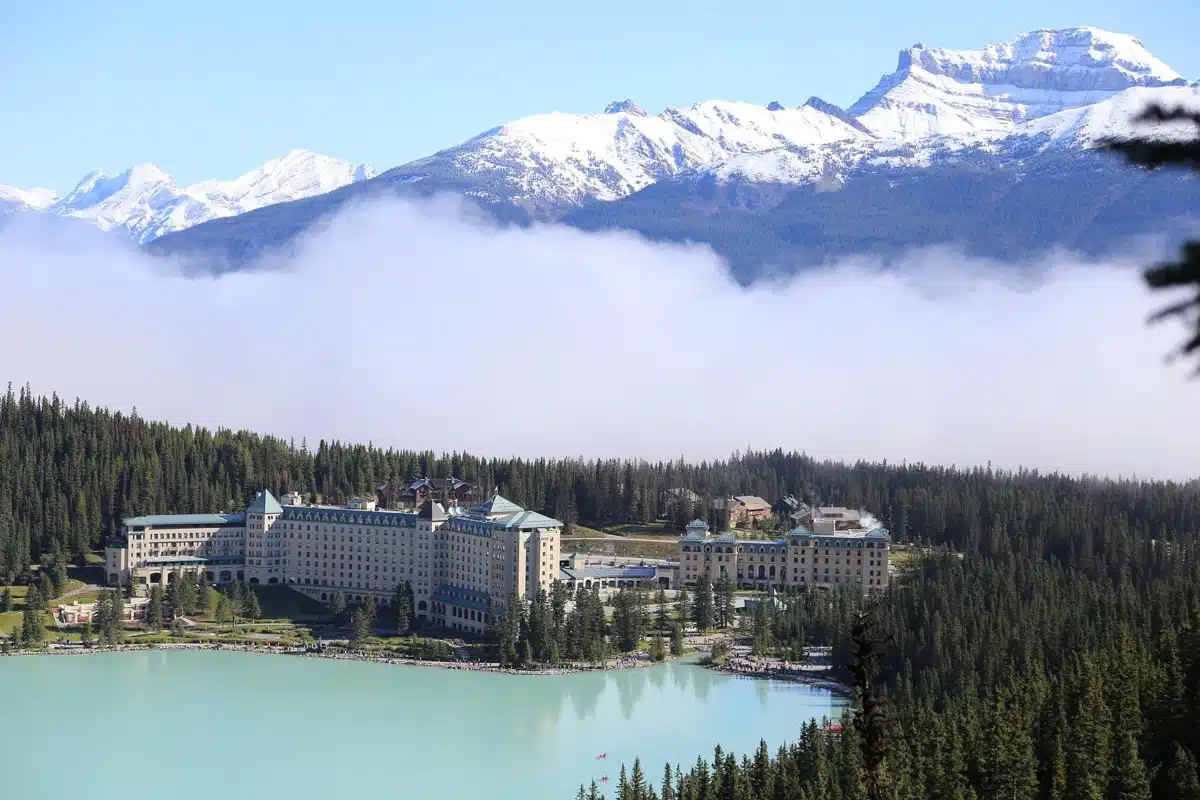
No first trip to Canada is complete without a trip to the Canadian Rocky Mountains. Bring your hiking boots to capture the best views of the unreal blue waters of Lake Louise, the towering peak of Mount Rundle, and glacial trails along the Icefields Parkway in Banff .
Suggested Stay: The Rimrock Resort Hotel
Hiking in Jasper
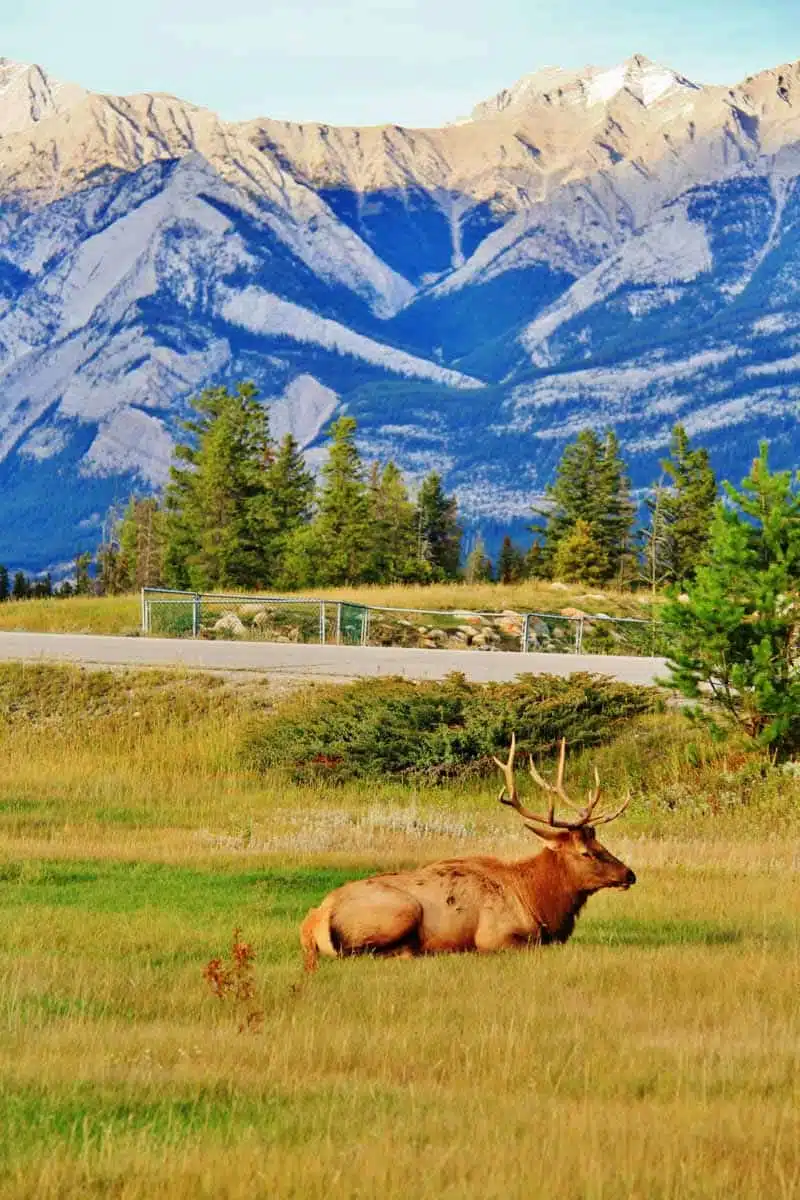
More hiking? Yes. Jasper National Park is the ultimate Canadian Rockies trip, with hikes like the Valley of the Five Lakes perfectly showcasing the beautiful blue waters and rugged mountains. Bring your backpacking gear if you really want to dive into local scenery on epic trails like Tonquin Valley.
Suggested Stay: Fairmont Jasper Park Lodge
Toronto Sightseeing
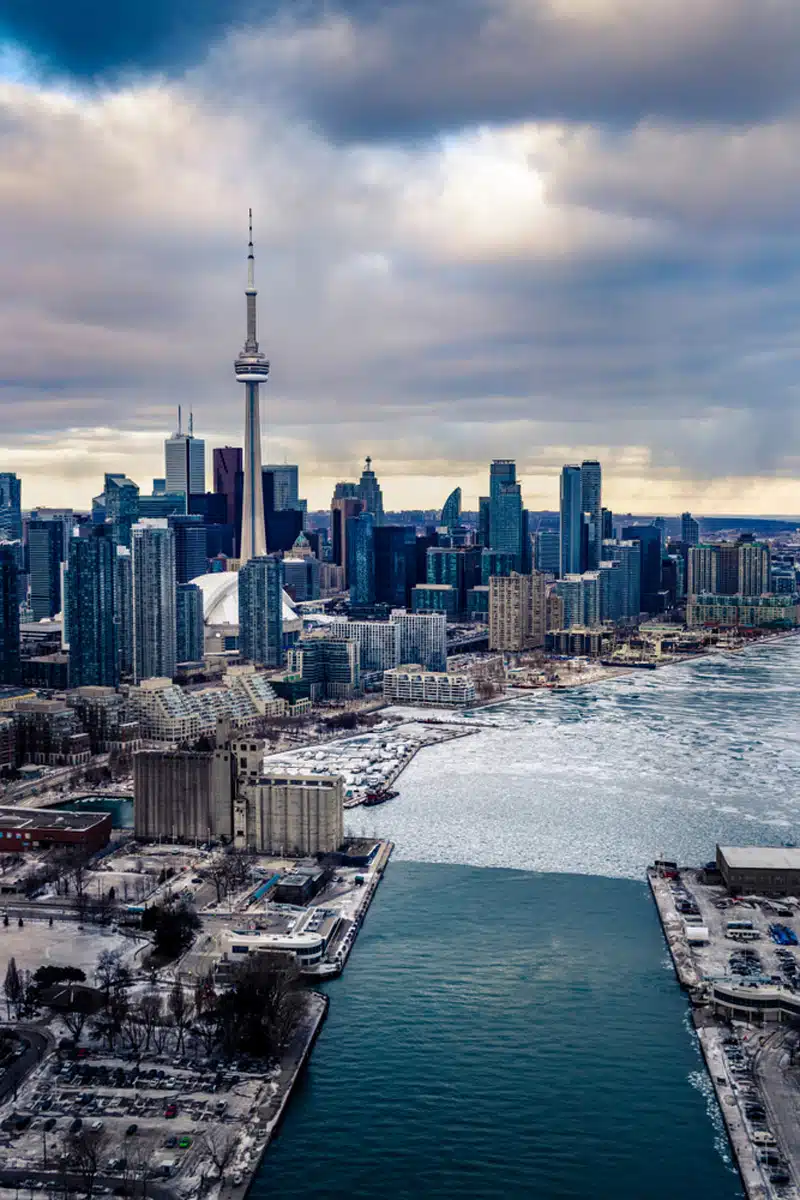
Now that you’ve spent some time in the great outdoors, head to Canada’s largest city, Toronto, where you can explore the bustling St. Lawrence Market before exploring the vast art collection at the Royal Ontario Museum and capturing panoramic views at the CN Tower.
Suggested Stay: Ace Hotel Toronto
Shopping in Montreal
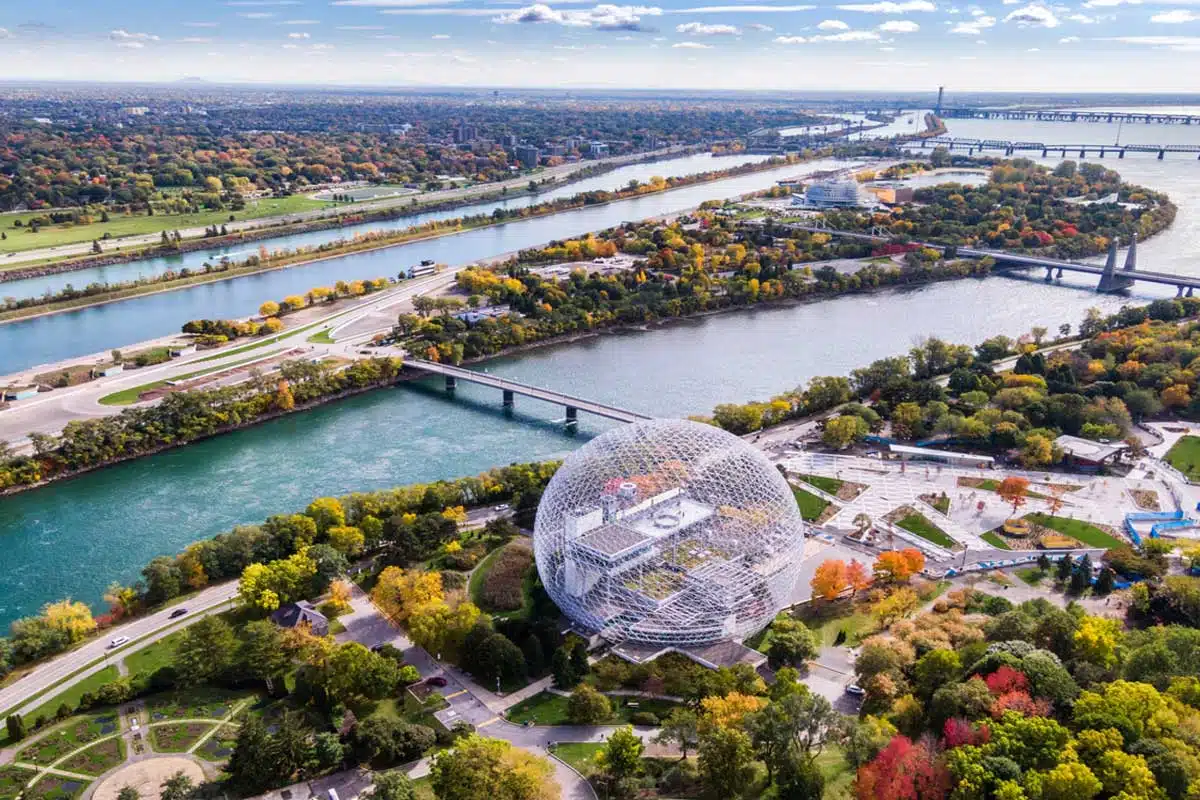
Grab a hearty breakfast at St-Viateur Bagel before vinyl hunting at Cheap Thrills and exploring an ocean of denim at Jeans, Jeans, Jeans . Check out the incredible Marché de Noël Signé Local Christmas Market if you’re there in December.
Suggested Stay: Le Mount Stephen
Architecture in Old Quebec
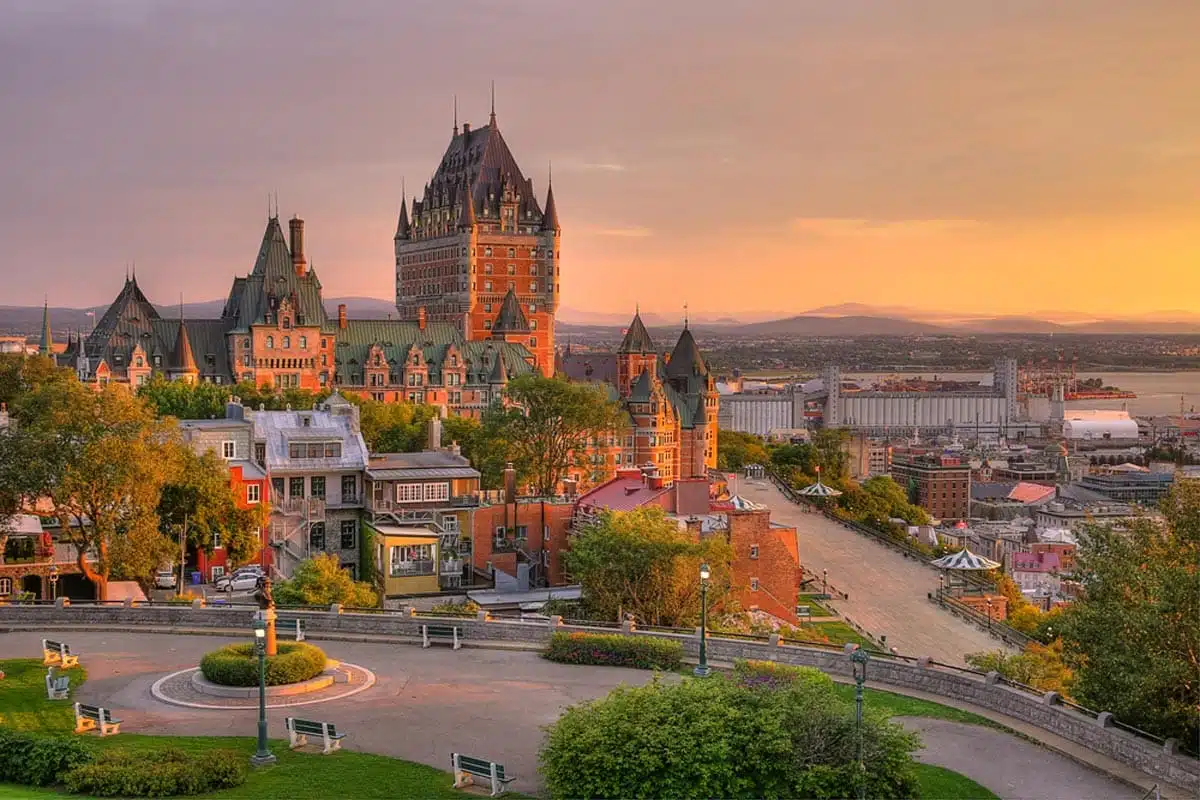
From the Neoclassical La Citadelle de Québec to the Second Empire style of L’Hôtel du Parlement, you’ll see some of the most impressive French colonial-style buildings anywhere in the world.
Suggested Stay: Auberge du Trésor
Canadian Rockies Itinerary
Want the perfect 10-day Canada itinerary to see the fabled Rocky Mountain parks ? Head to Alberta, where you can see some of the most insanely beautiful landscapes anywhere in Canada.
If you’re dreaming up a colour palate of the bluest of blue waters, pine-laden mountainsides, and endless wildlife as far as the eye can see – you’re spot on.
Set aside at least a week for this one, but we think a Canada itinerary of 10 days is necessary to check out the outdoor adventure and luxury resorts in this iconic stretch of Wilderness in the north.
Canmore >> Banff >> Jasper >> Yoho >> Kootenay
Distance: 410 miles (660 km)
Length of Trip: 10 Days
How to Do It: Car
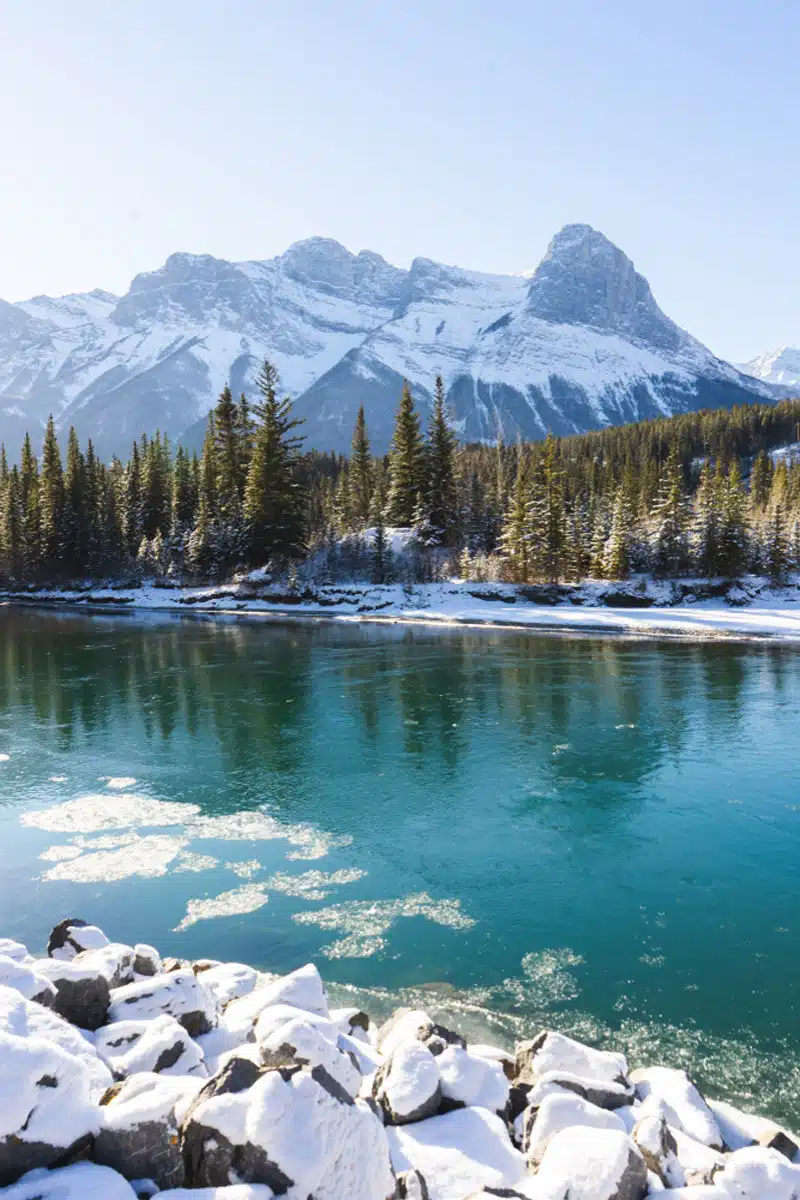
Looking for an underrated Rocky Mountain park? Hit up Canmore for some of the most epic hiking trails and scenic views anywhere in the Rockies. Enjoy a leisurely walk at Quarry Lake, or tackle Mount Yamnuska to take Canmore Peak head-on.
Suggested Stay: The Georgetown Inn
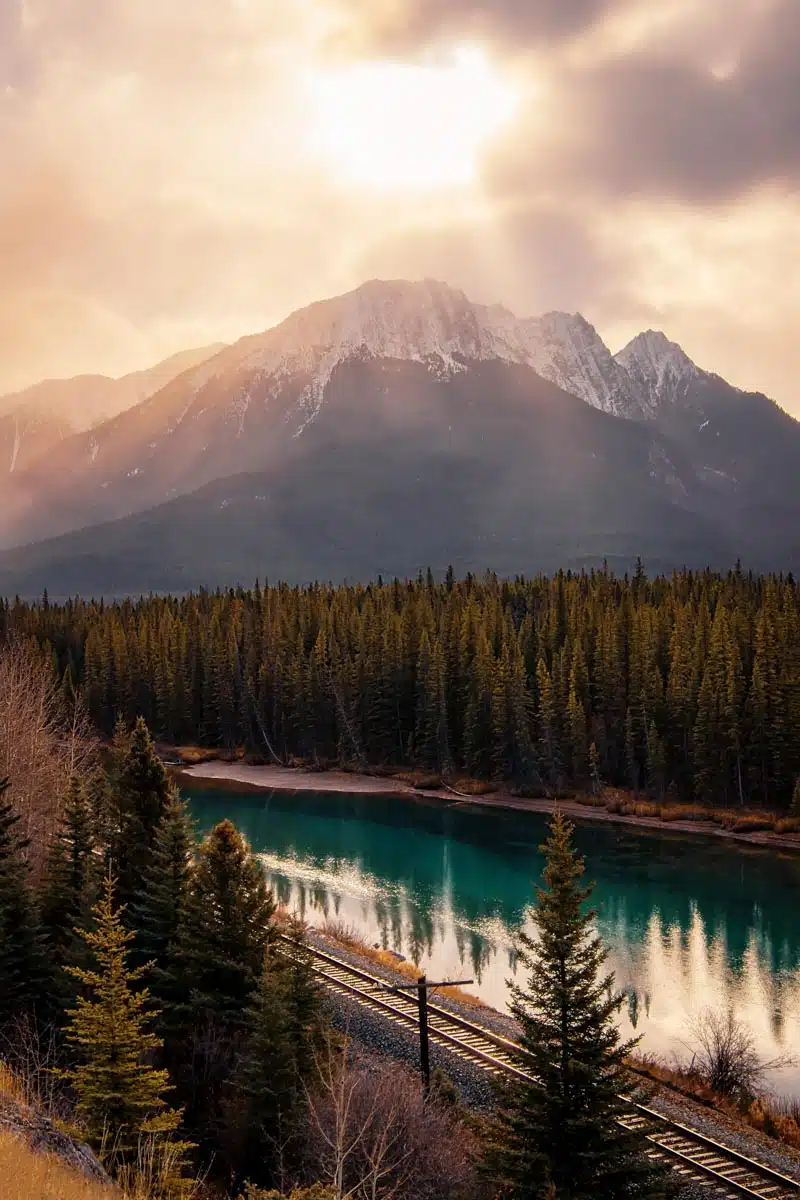
Spend some time in Banff Town shopping, dining at Park Distillery , or riding the Banff Gondola before exploring one of the most scenic parks in the country. Get ready for sights like the legendary Lake Louise and the lush valley overlooking the Rockies at Cascade Amphitheater.
Suggested Stay: Fairmont Banff Springs
Icefields Parkway
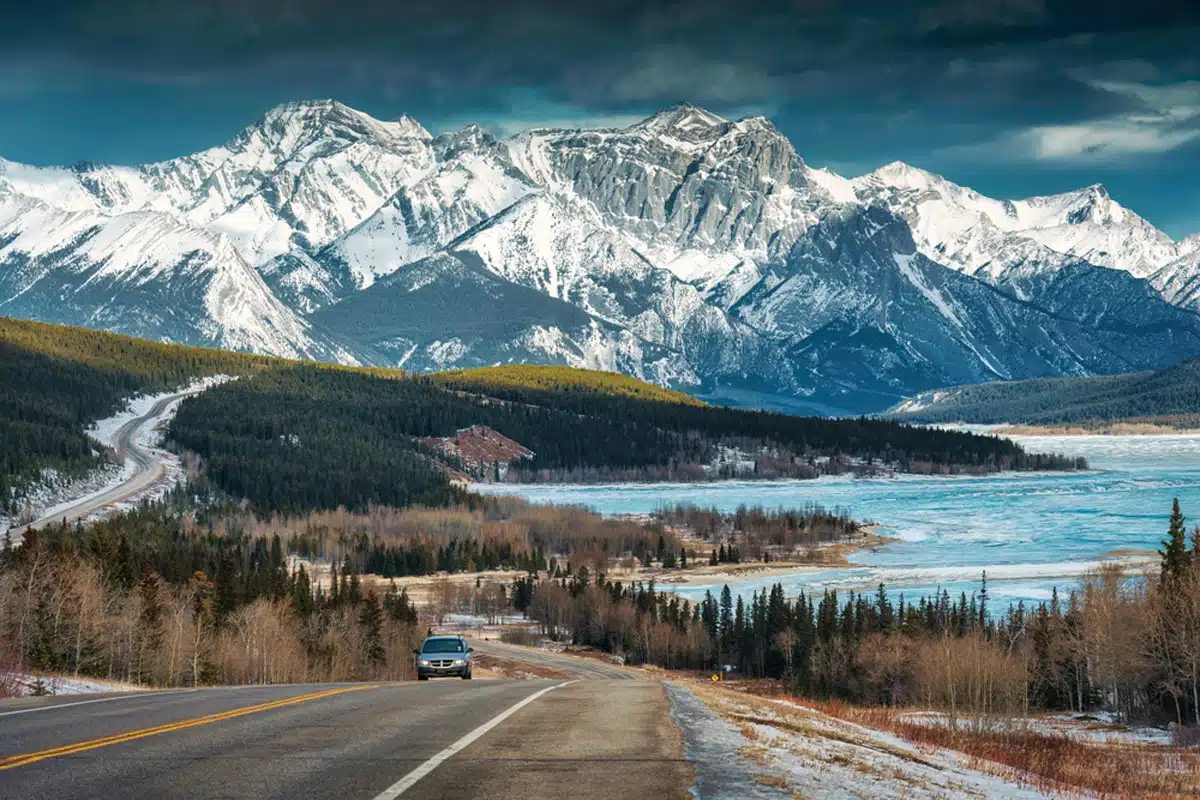
Drive the iconic Icefields Parkway to Jasper, being sure to stop at the Glacier Skywalk on the way. Break up your drive with an Athabasca Glacier Tour or a shorter hike at Mistaya Canyon, where you’ll take in the beauty of the Canadian Rockies waterfalls and mountains.
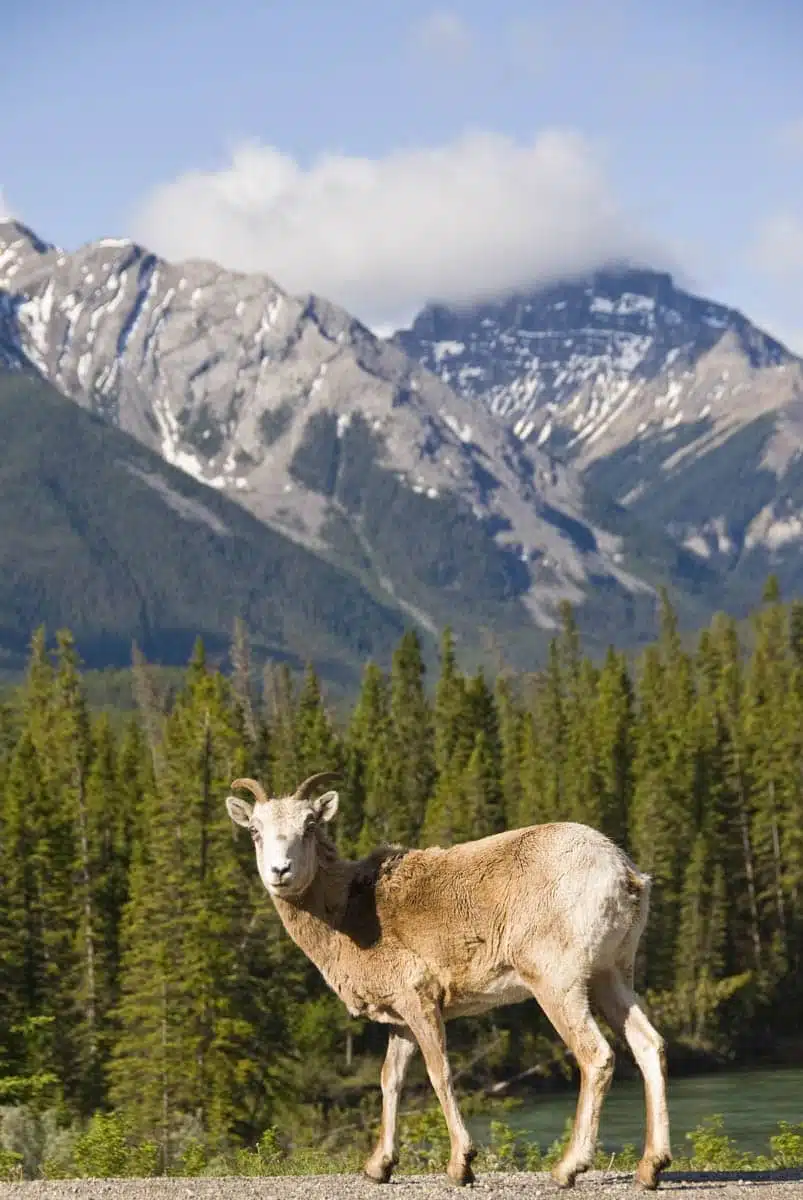
Explore the hanging glaciers at Edith Cavell Meadows and scenic mountain waters at the Valley of the Five Lakes or Pyramid Lake before shopping in Jasper Town and grabbing an authentic Canadian dinner at Maligne Canyon Wilderness Kitchen .
Suggested Stay: Pyramid Lake Resort
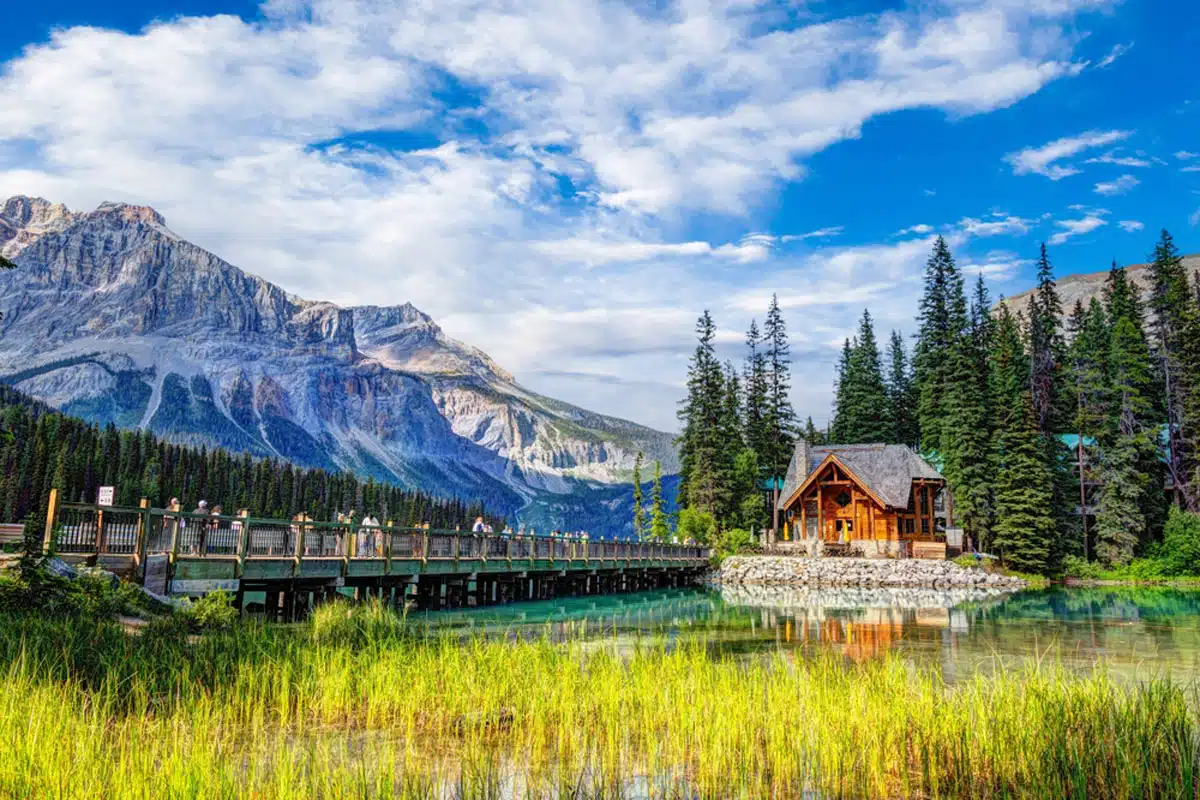
Visit one of the tallest waterfalls in Canada at Takakkaw Falls, see the surreal blue-green waters at Emerald Lake and Lake O’Hara, and check out the stunning Natural Bridge over the Kicking Horse River.
Suggested Stay: Canadian Rockies Inn
Kootenay National Park
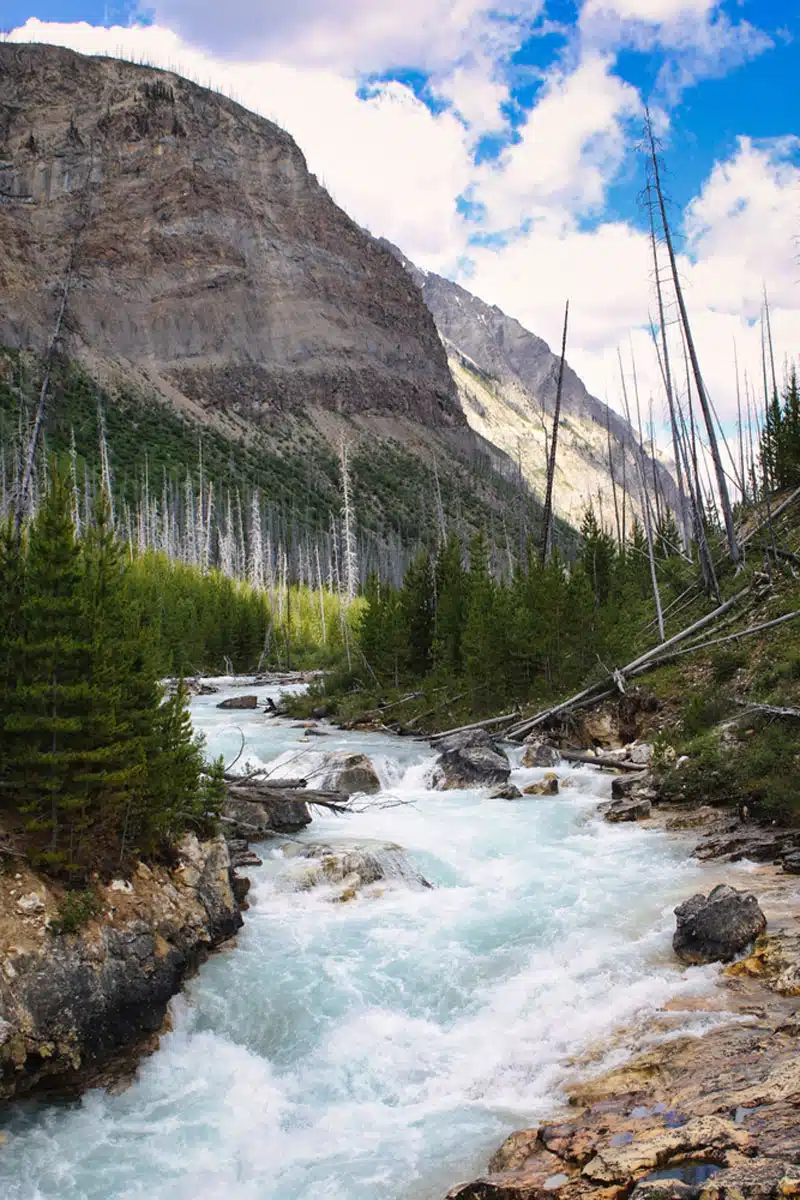
Explore the wild side of the Rockies with one of the lesser-visited parks in the area. You may see grizzly bears, bighorn sheep, and wildcats along the many hiking trails at this underrated stop on your Canada vacation itinerary.
Suggested Stay: Kootenay Lakeview Resort BW Signature Collection
Plan the Ultimate Canadian Rockies Adventure with this Step by Step Itinerary
Niagara Falls to Algonquin Provincial Park
Another 10-day trip to Canada itinerary starts at the iconic Niagara Falls before exploring two of Canada’s most iconic cities. I love this Canada itinerary because it has the perfect mix of rugged nature and urban splendour, and it also features some of Canada’s most under-the-radar locations. Get ready for vibrant cuisine, breathtaking waterfalls, and luxury accommodations on this fabulous 10-day Canada itinerary.
Niagara Falls >> Toronto >> Ottawa >> Algonquin Provincial Park
Distance: 340 miles (550 km)
How to Do It: Bus, Train, and Car
Niagara Falls
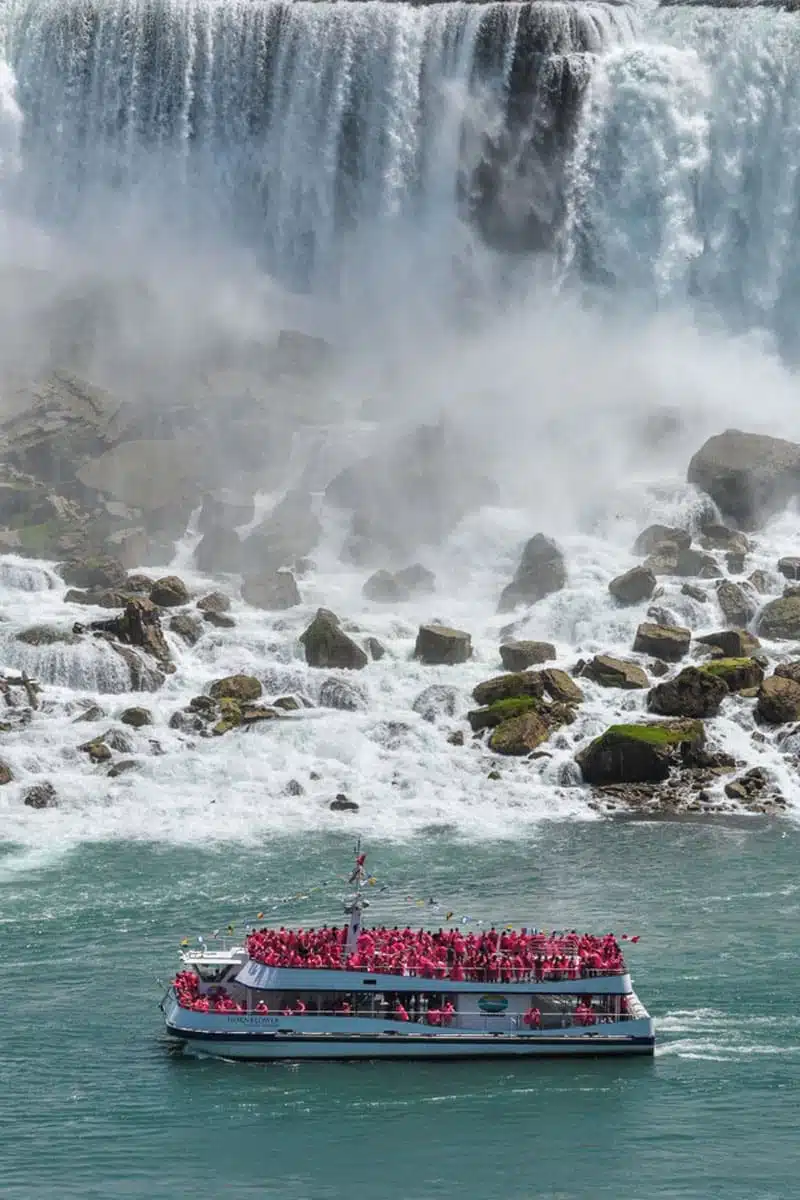
Take one look at Horseshoe Falls, and you’ll be awe-struck by the sheer force behind the falls at one of the most iconic landmarks in Canada. Be sure to see the falls from famous vantage points like the Cave of the Winds, where you can catch great views of Bridal Veil Falls.
Suggested Stay: Hilton Niagara Falls/ Fallsview Hotel and Suites
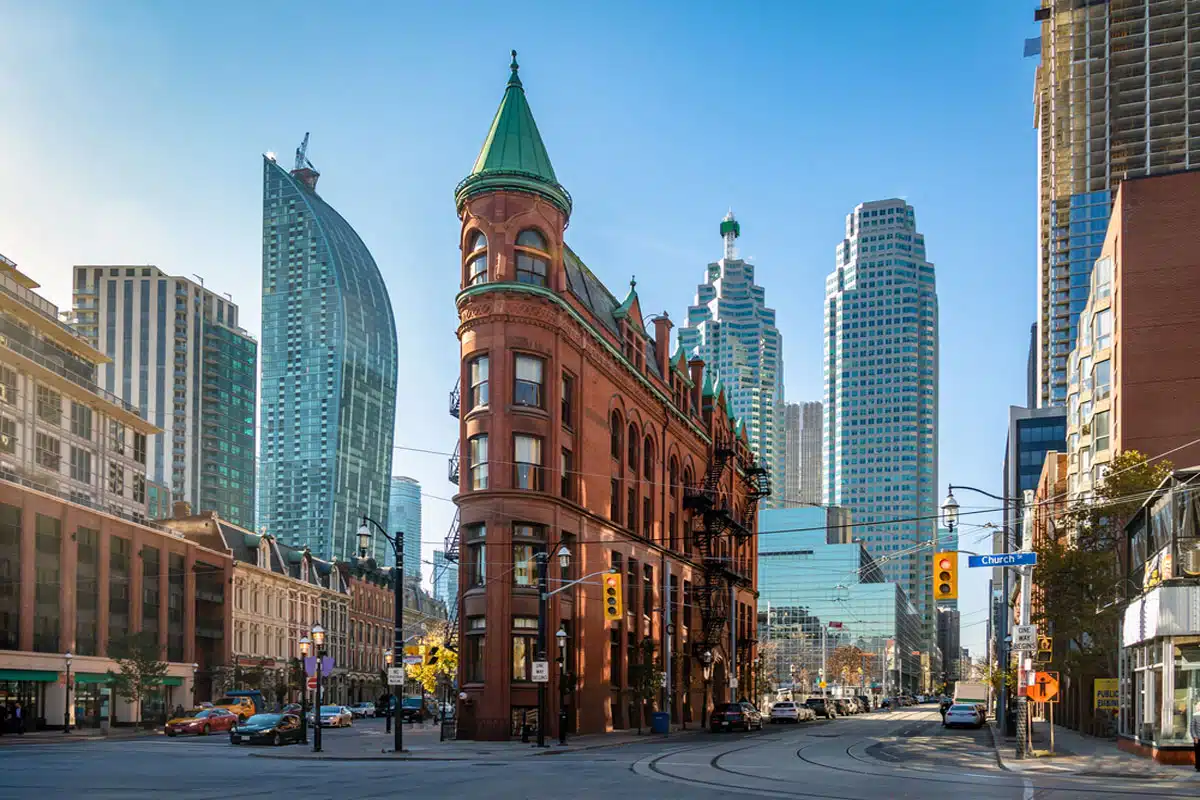
If you’re a city person (raising my hand), you’ll fall in love with Toronto the minute you land in the metropolitan city along Lake Ontario. Checking out the downtown views from the CN Tower or seeing it from a cruise of the Toronto Harbour are must-adds to your Canada itinerary. Also, make time for the incredible museums ( Royal Ontario is the most popular) and try delicious cuisine at restaurants like the chic Byblos Downtown .
Suggested Stay: The Hazelton Hotel
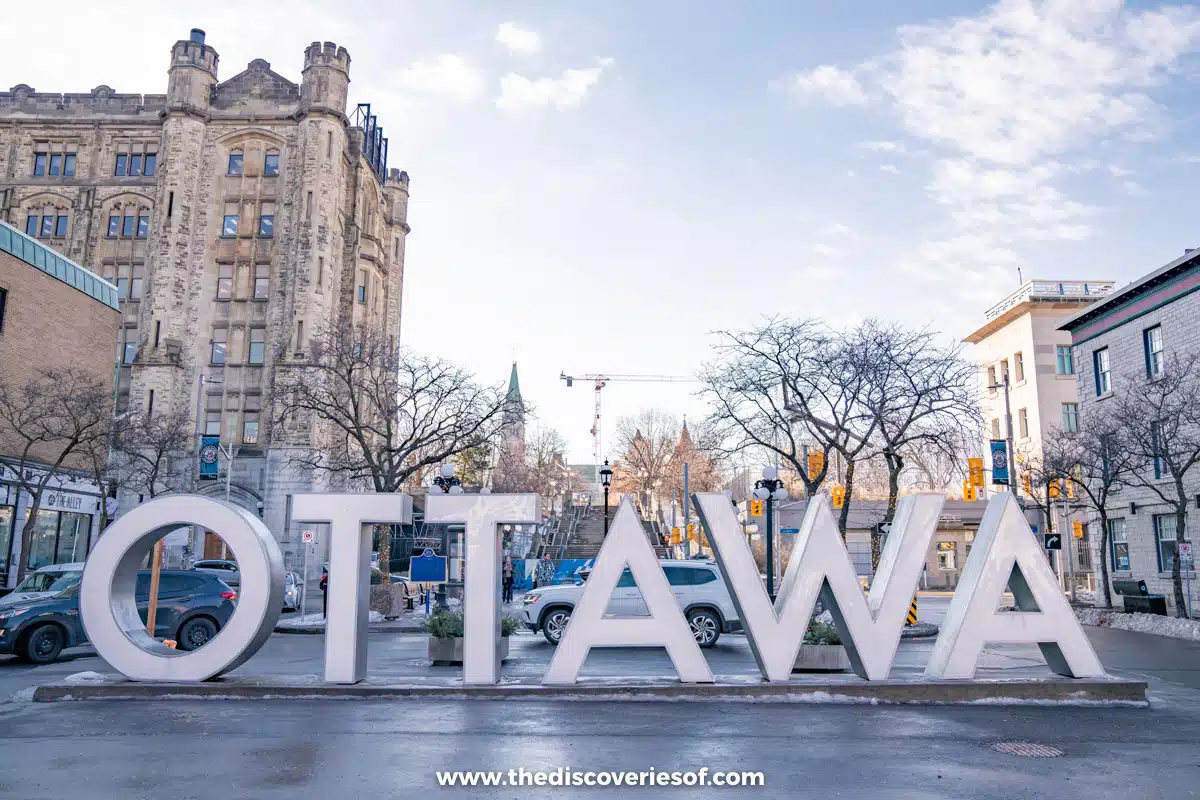
You might not see it on every travel blog, but the best Canada travel itinerary should include Ottawa . Why? The capital of Canada is full of amazing things to do, like the Canadian Museum of Nature and a boat ride (or ice skating) on the Rideau Canal. Don’t miss the Notre Dame Cathedral, which hosts some of the most mesmerising Gothic architecture you’ll ever see.
Suggested Stay: The Metcalfe by Gray Collection
Algonquin Provincial Park
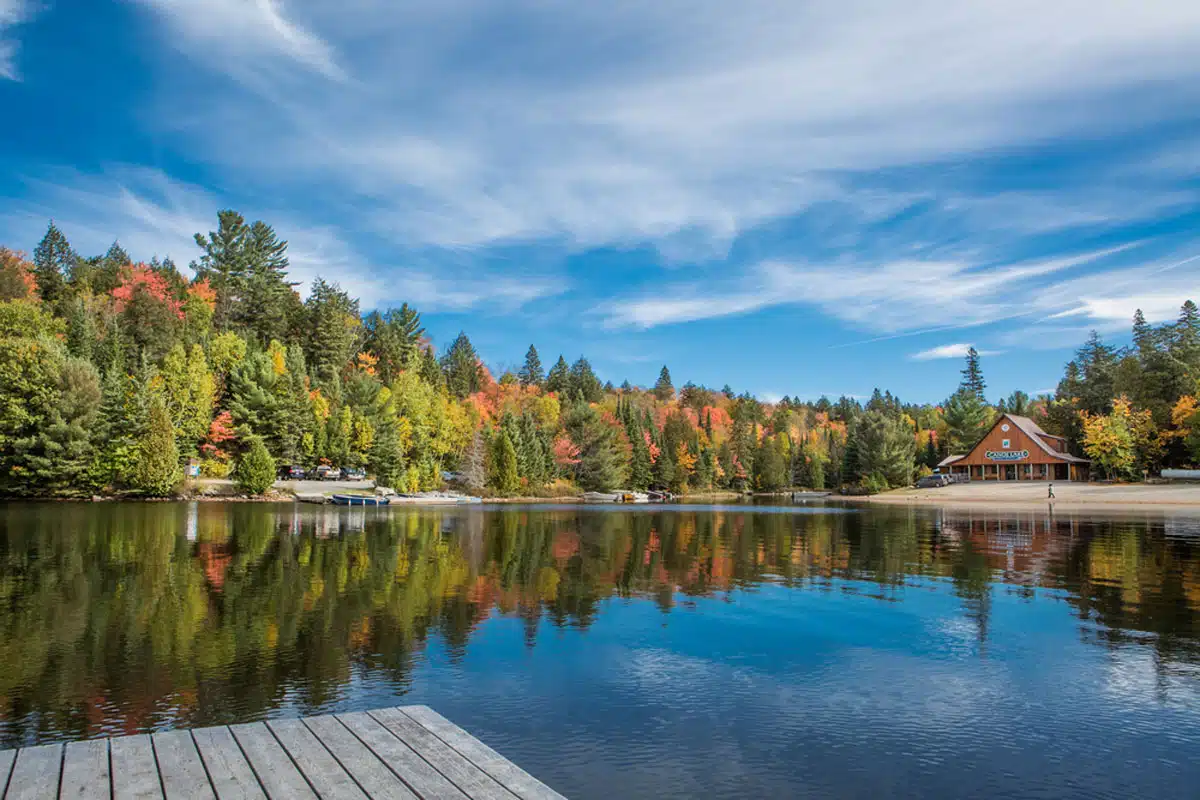
Any Canada road trip itinerary must include some time in nature. It’s non-negotiable, really.But I’ll give you the best outdoor locale you’ve never heard of – Algonquin Provincial Park. Spend 2-3 days exploring the rolling hills, Pinetree-painted river bluffs, and miles of hiking trails in Ontario’s best nature reserve.
Suggested Stay: Killarney Lodge
Quebec Itinerary
Visiting the province of Quebec on your holiday offers you one of the most incredible experiences in North America. A 7-day Canada itinerary including Montreal, Quebec City, and Saguenay-St-Lawrence Marine Park allows you plenty of time to explore the gorgeous French province of Canada. You’ll find cobbled streets, colonial architecture, and beautiful scenery around every corner. End your trip with a scenic train ride to Saguenay-St-Lawrence Marine Park, where you’ll enjoy some of the most impressive whale-watching anywhere.
How long should you spend here? I think a Quebec, Canada itinerary in 7 days is the perfect amount of time to dive into everything this Northeastern Canadian city has to offer.
Downtown Montreal >> Old Montreal >> Quebec City >> Old Quebec >> Saguenay-St-Lawrence Marine Park
Distance: 290 miles (470 km)
Length of Trip: 1 week
How to Do It: Train
Food and Shopping in Montreal

Shopping and dining in Montreal are among the best you’ll find on any Canada travel itinerary. You’ll discover surprising men’s and women’s fashion gems like Boutique Tozzi and near-perfect neighbourhood restaurants like Le Pégase, where you can sample incredible French cuisine on the cheap (and it’s BYOB).
Explore Architecture in Quebec City
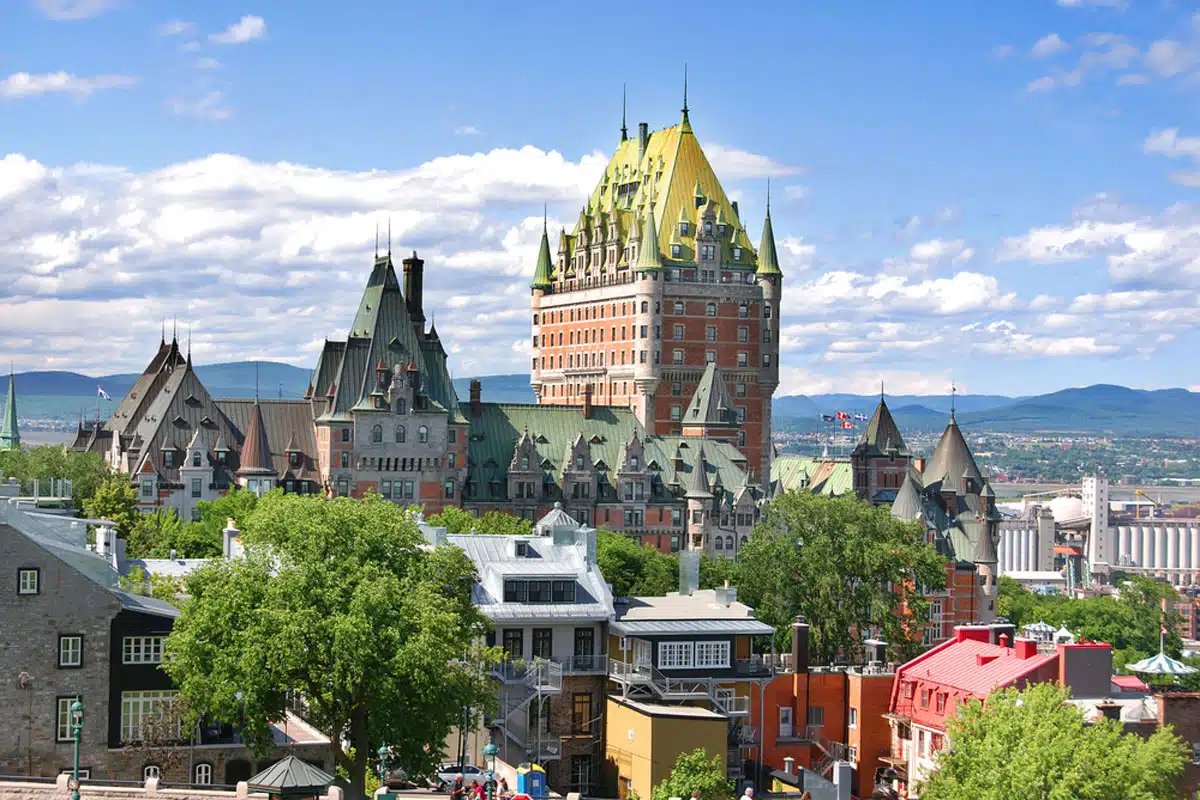
Whether you’re marvelling at the fortress-like walls at Fairmont Le Château Frontenac , the actual fortress of La Citadelle de Québec, or the storybook town centre of Place Royale – Quebec City is easily the most charming historic downtown that you’ll find on your Canada itinerary.
Saguenay-St-Lawrence Marine Park
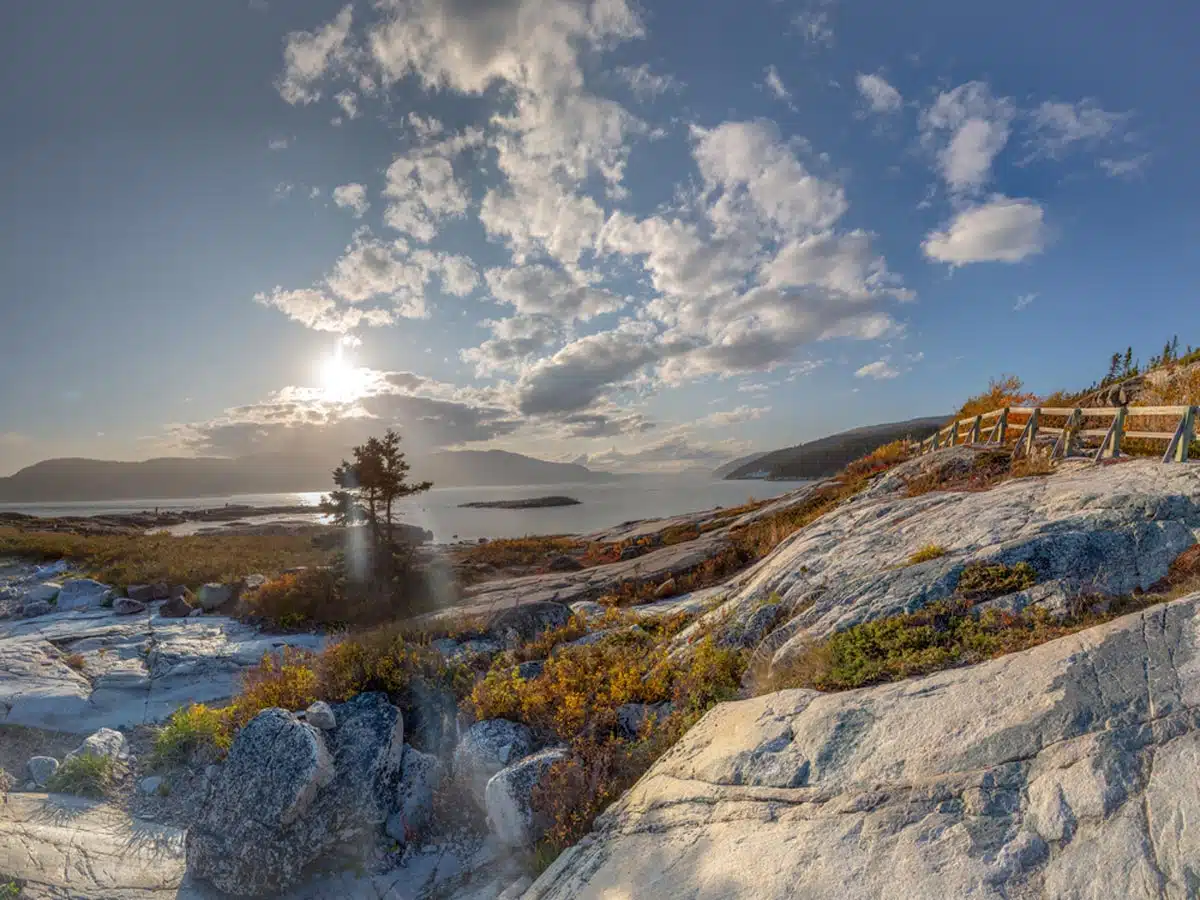
At the intersection of the Saguenay and the Saint Lawrence Rivers, Saguenay-St-Lawrence Marine Park offers some of the best whale-watching in Canada, if not all of North America. Take a guided tour down the Saguenay to see over a dozen whale species along the fjords and river banks of Eastern Canada.
Suggested Stay: Chateau Murdock Gite et Esthétique 1950
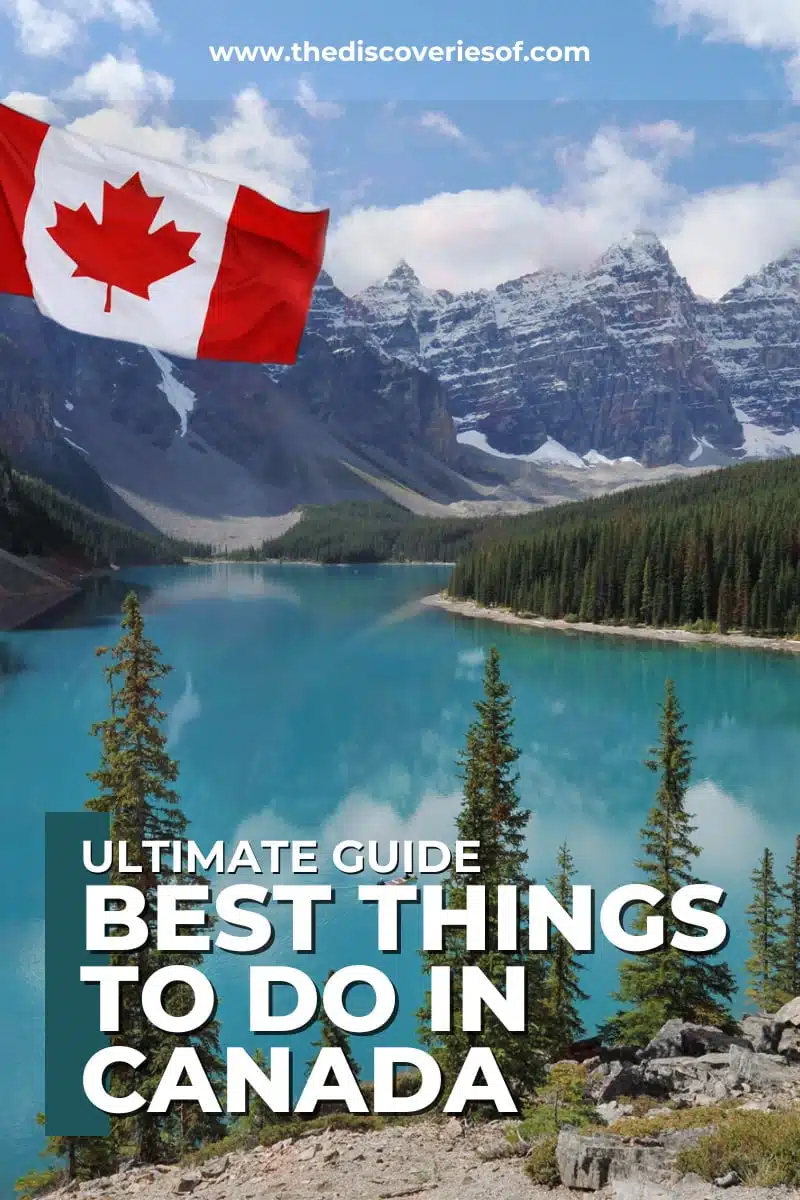
Saskatchewan to Alberta
This is the national park tour you won’t want to miss on a 14-day Canada itinerary. Moving from the idyllic prairies and dark night skies in Saskatchewan to the towering Rocky Mountains and turquoise lakes of Alberta, you’ll see the best of the best nature, wildlife, and stargazing on this sweeping 2 week Canada road trip itinerary. You’ll spend a lot of time on the road, but you’ll discover some of the best of rural and urban Canada on this epic adventure.
Winnipeg >> Moose Mountain Provincial Park >> Grasslands National Park >> Saskatoon >> Edmonton >> Rocky Mountain National Parks
Distance: 1,500 miles (2,500 km)
Length of Trip: 2 weeks
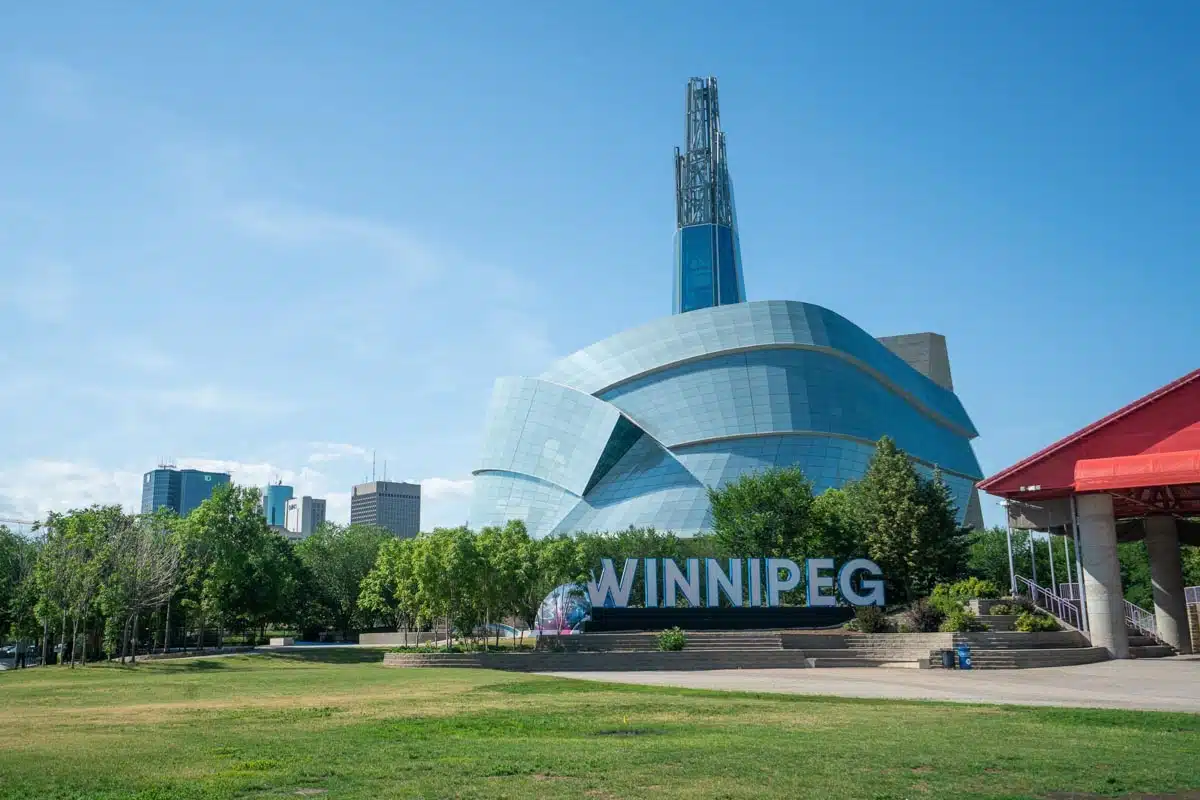
Check out surprise finds like The Forks Market, a daily marketplace and food hall near the Red and Assiniboine Rivers downtown. Or, explore the charming Assiniboine Park, where you can see live entertainment or just stroll through the park on the weekends.
Suggested Stay: Inn at the Forks
Moose Mountain Provincial Park
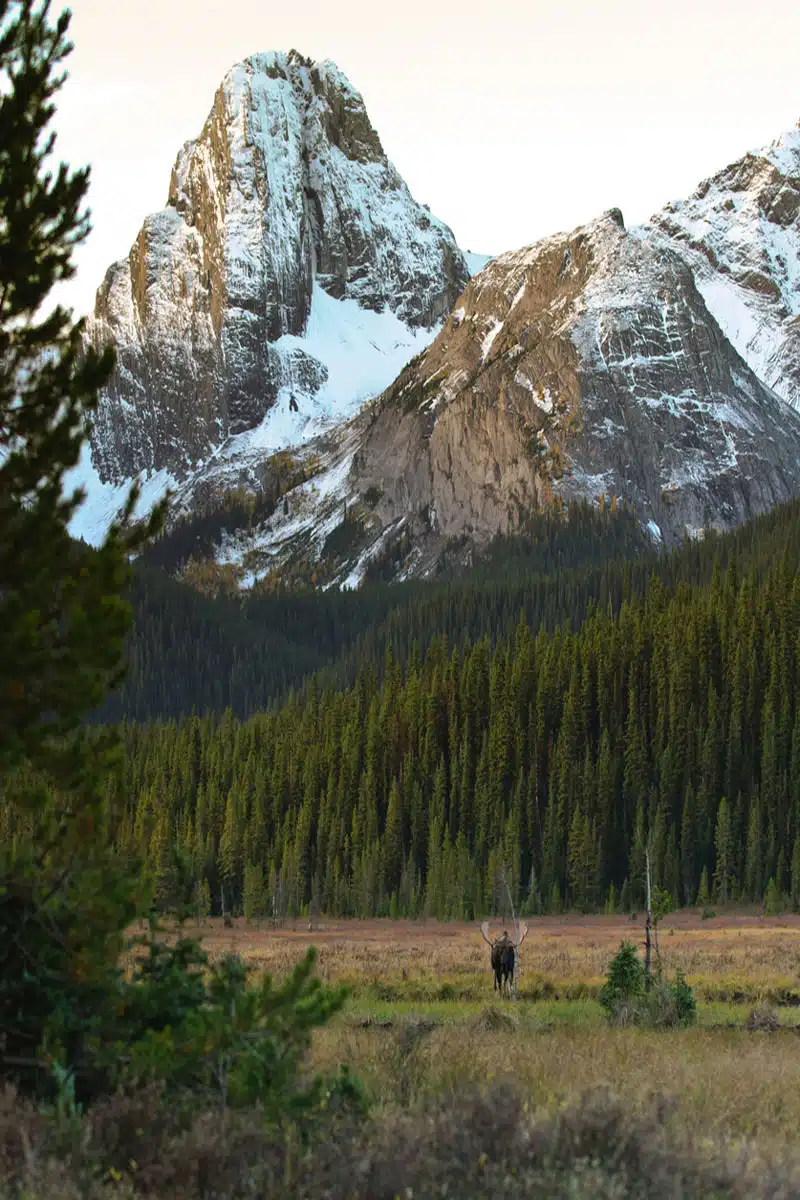
Bring your sense of adventure to this scenic stretch of Saskatchewan Forest that’s perfect for biking, hiking, or camping for a few nights.
Suggested Stay: Bear Claw Casino & Hotel
Grasslands National Park
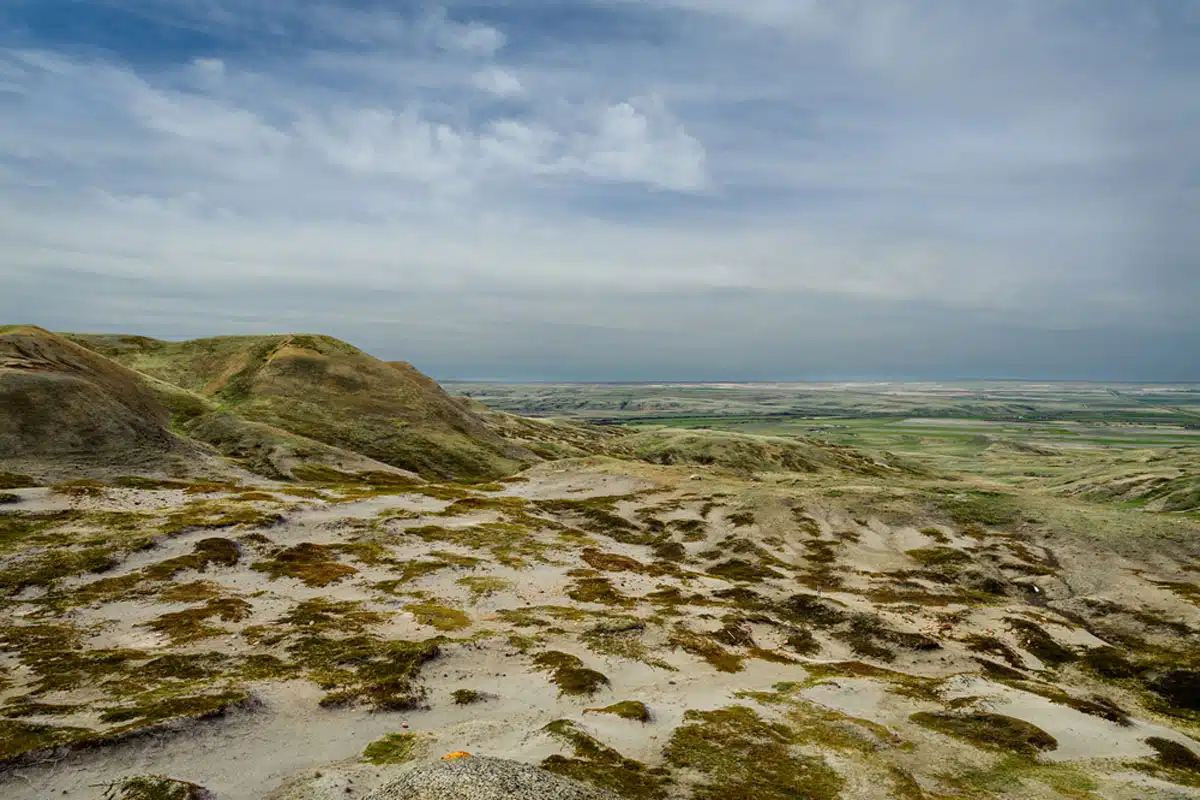
Maybe the most underrated of any national park in the country, you can see incredible wildlife like bison, coyotes, and rattlesnakes (gulp). But it’s stargazing and a chance to see the Northern Lights that really sets this park in the Saskatchewan prairies apart – check out Frenchman Valley Campground for some of the best views.
Suggested Stay: Sky Story Bed and Breakfast
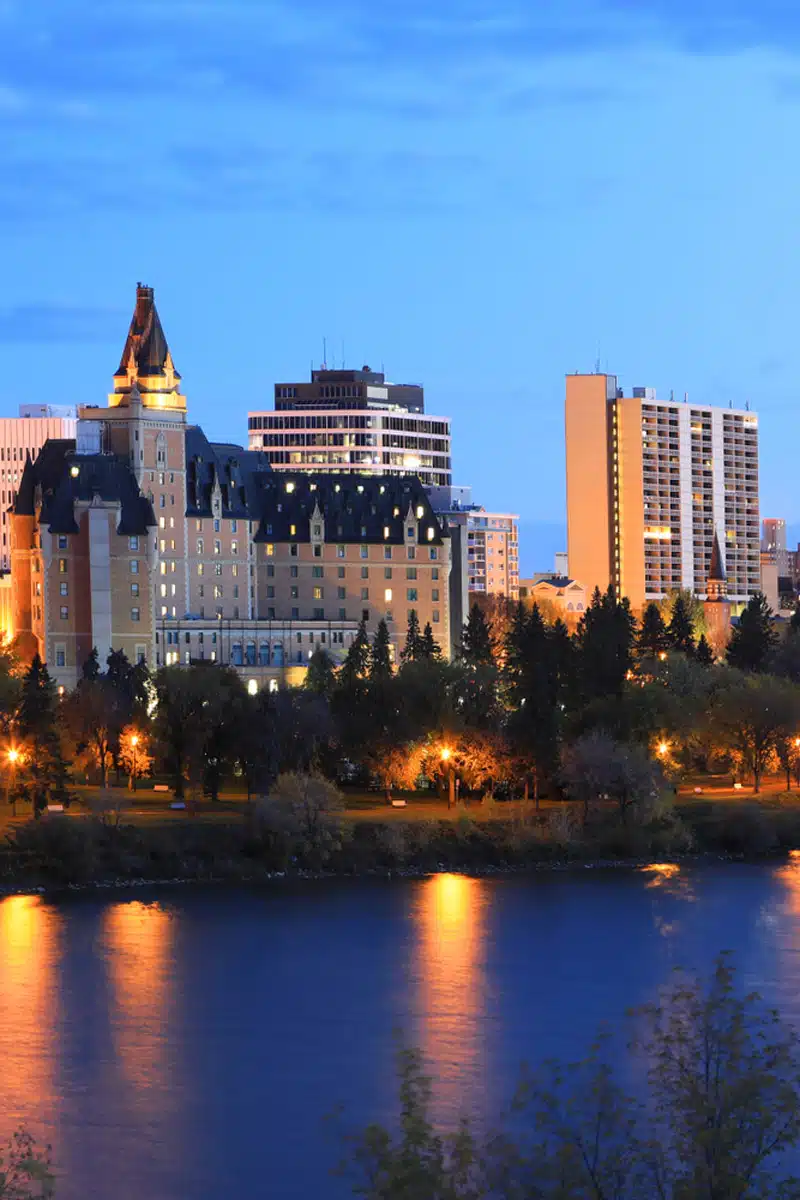
Saskatoon is an ice halfway point between Grasslands and Edmonton, but there’s plenty to see in town. Check out the local Farmer’s Markets on Wednesdays, Saturdays, and Sundays, or visit a museum like the Remai Modern , which features a comprehensive collection of linocut prints from Pablo Picasso.
Suggested Stay: Delta Hotels by Marriott Bessborough
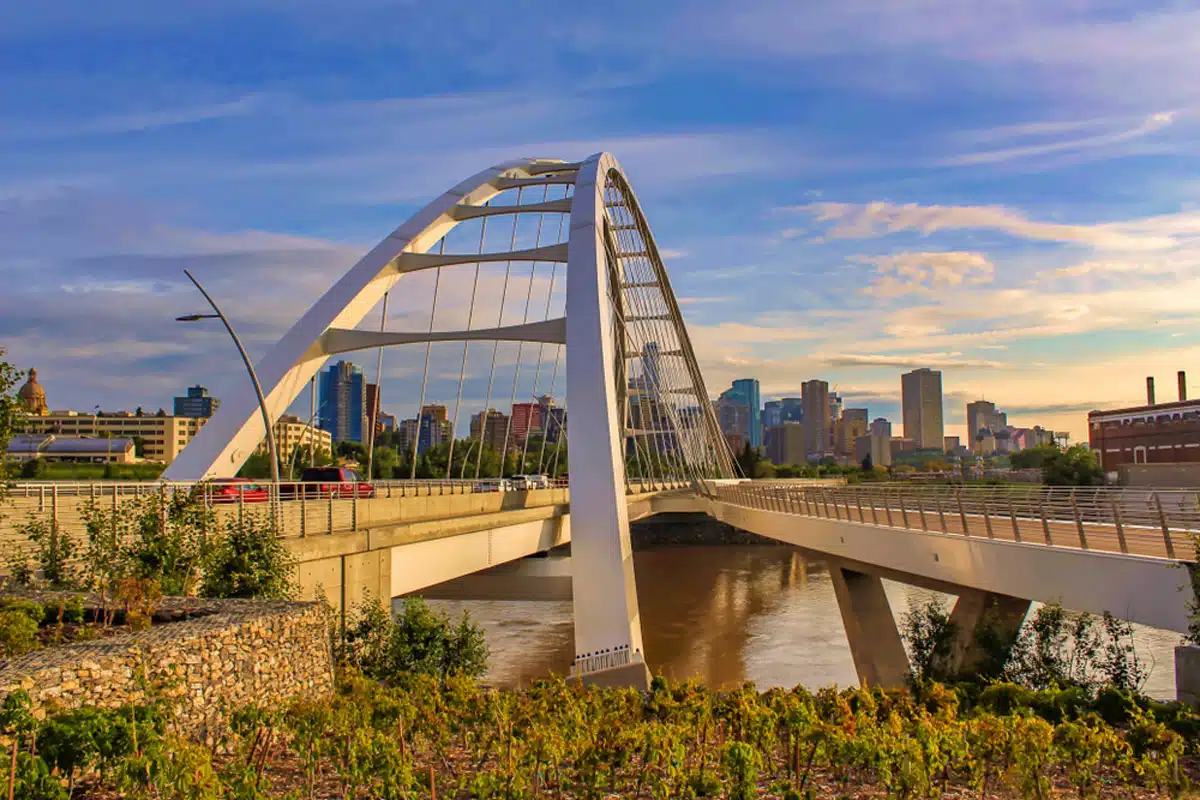
Edmonton is a standout on this Canada travel itinerary over 2 weeks for its gorgeous botanical garden (Muttart Conservatory), Neon Sign Museum, and delicious dim sum at Fu’s Repair Shop .
Suggested Stay: JW Marriott Edmonton ICE District
Canadian Rocky Mountain Parks
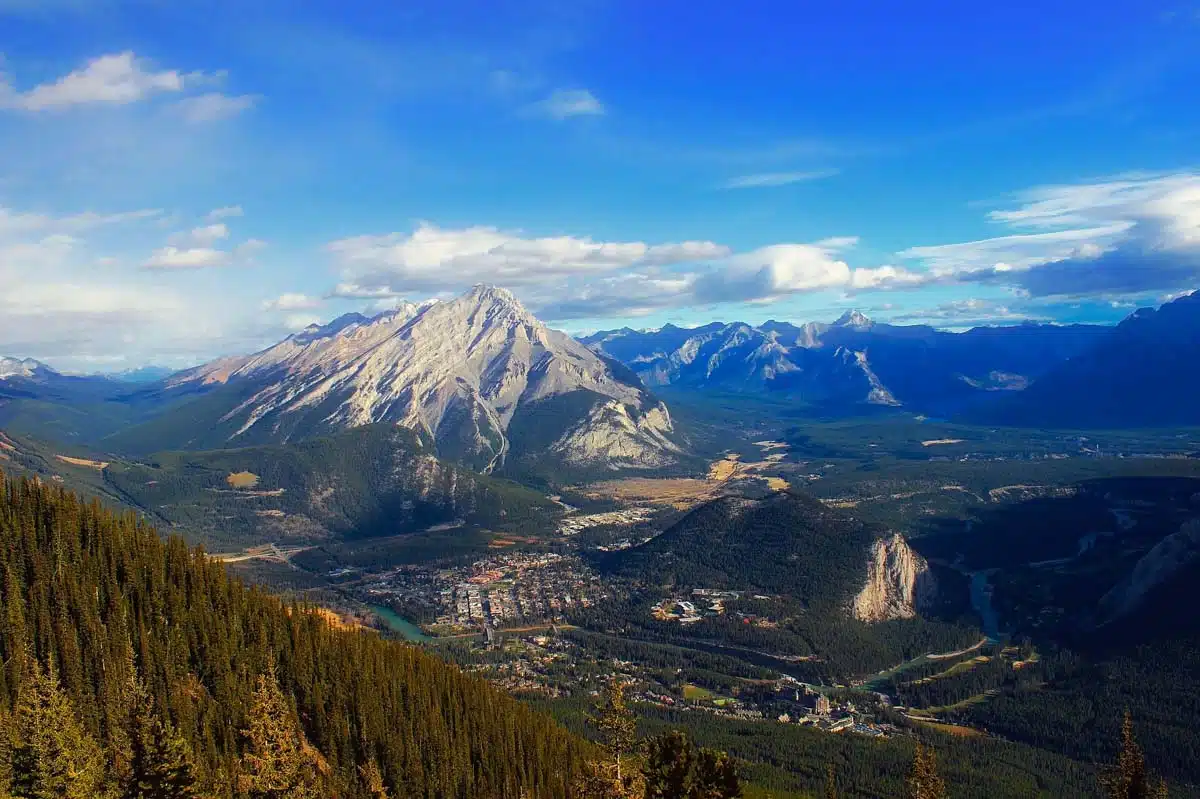
Visit the UNESCO World Heritage Site , home to 7 stunning national and state parks. I think visiting Jasper and Banff will give you a well-rounded preview of the cyan lakes and snow-capped mountains, but if you can add Yoho and Canmore, you won’t be disappoint
The Rimrock Resort Hotel , Banff | Fairmont Jasper Park Lodge , Jasper
Prince Edward Island to the Bay of Fundy
To explore some of the rocky shores and dramatic tides of eastern Canada, you’ll want to head over to Prince Edward Island and the Bay of Fundy. It’s a treasure trove for people who love the ocean, but you won’t need your swimsuit for many months of the year.
Instead, you’ll want to bring your hiking boots, archeology books, and appetite, as the coastal shores are famous for dramatic vistas, dinosaur fossils, and some of the best seafood in North America.
Prince Edward Island >> Joggins Fossil Cliffs >> Halifax >> Annapolis Valley
Distance: 385 miles (620 km)
Length of Trip: 1 Week
How to Do It: Car
Prince Edward Island
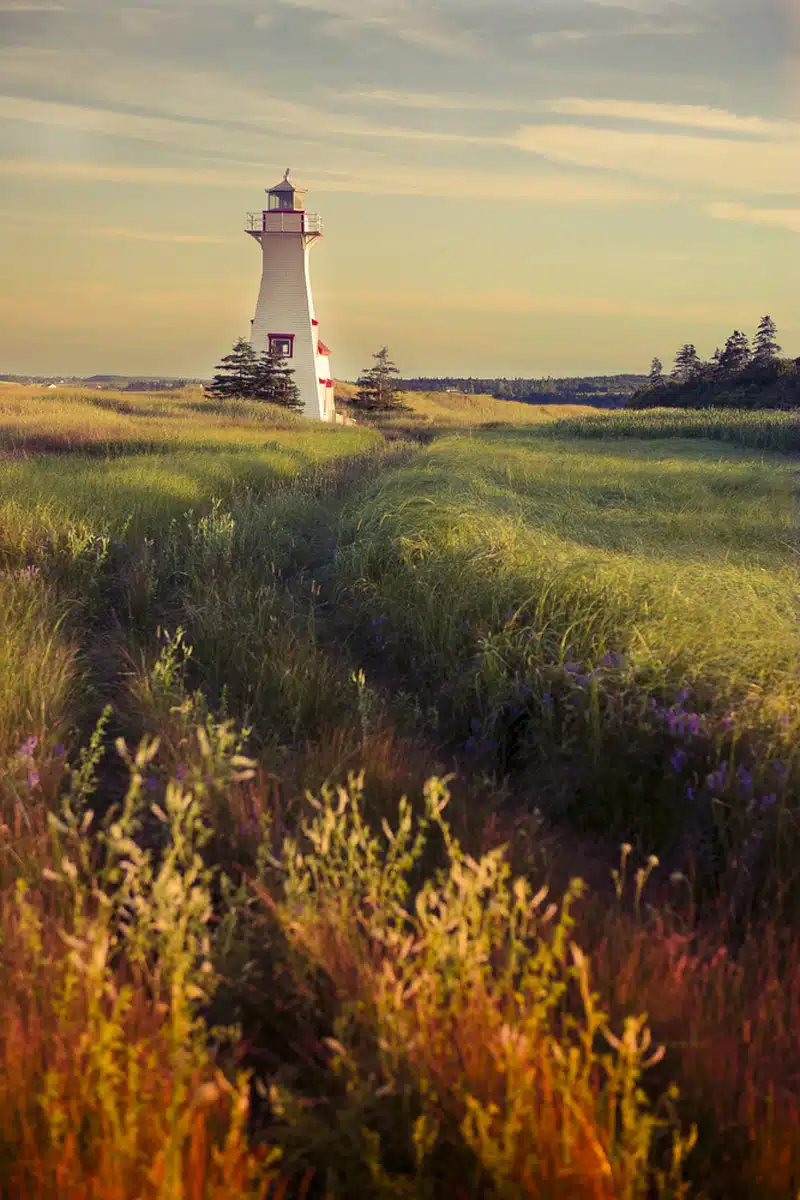
The charming towns, centuries-old lighthouses, and delicious seafood make Prince Edward Island a must-stop on any Canada itinerary for 5 to 7 days in Nova Scotia and New Brunswick. Be sure to check out the Victorian Gothic architecture in Charlottetown at Dunstan’s Basilica and incredible seafood caught just off the Gulf of St. Lawrence shores at the Merchantman Fresh Seafood & Oyster Bar .
Suggested Stay: Sydney Boutique Inn & Suites
Joggins Fossil Cliffs
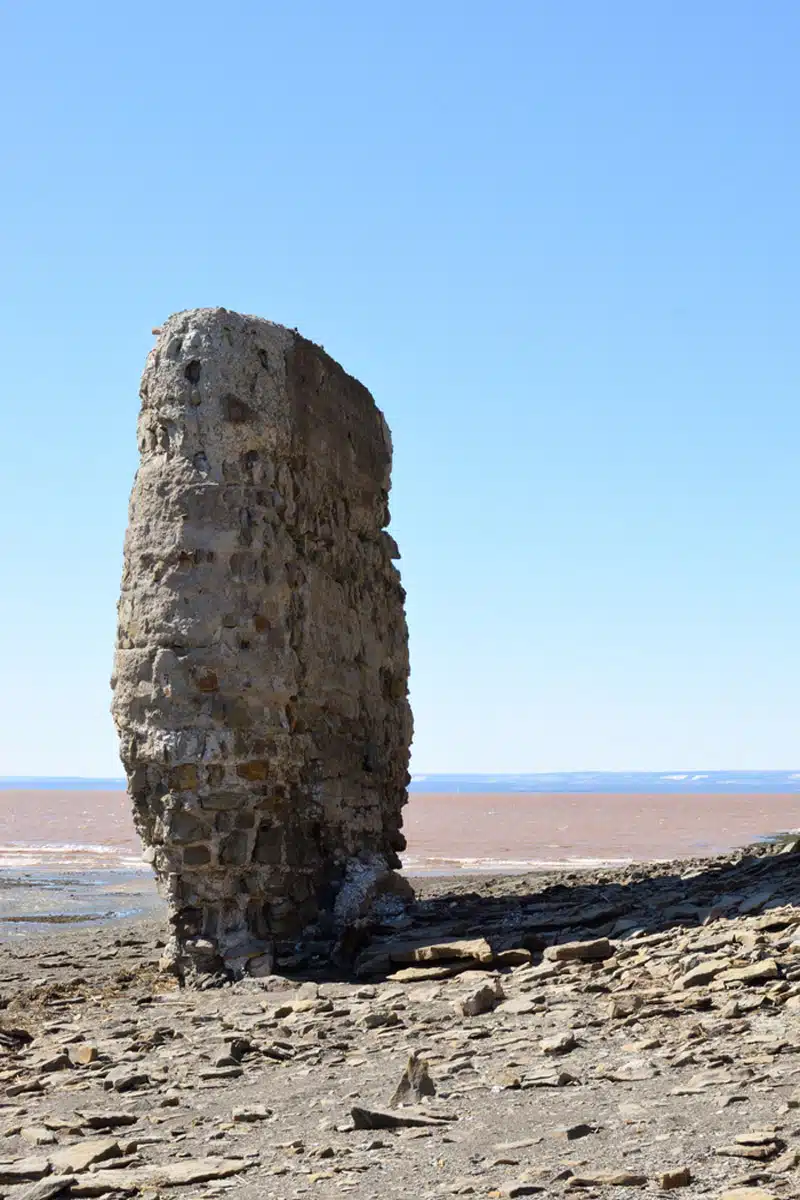
The famous high tides near the Bay of Fundy help form one of the most dramatic and mysterious coastal landscapes anywhere in the world. If you head out during low tide, you can uncover dinosaur fossils from millions of years ago.
Suggested Stay: Maplehurst Manor Bed and Breakfast
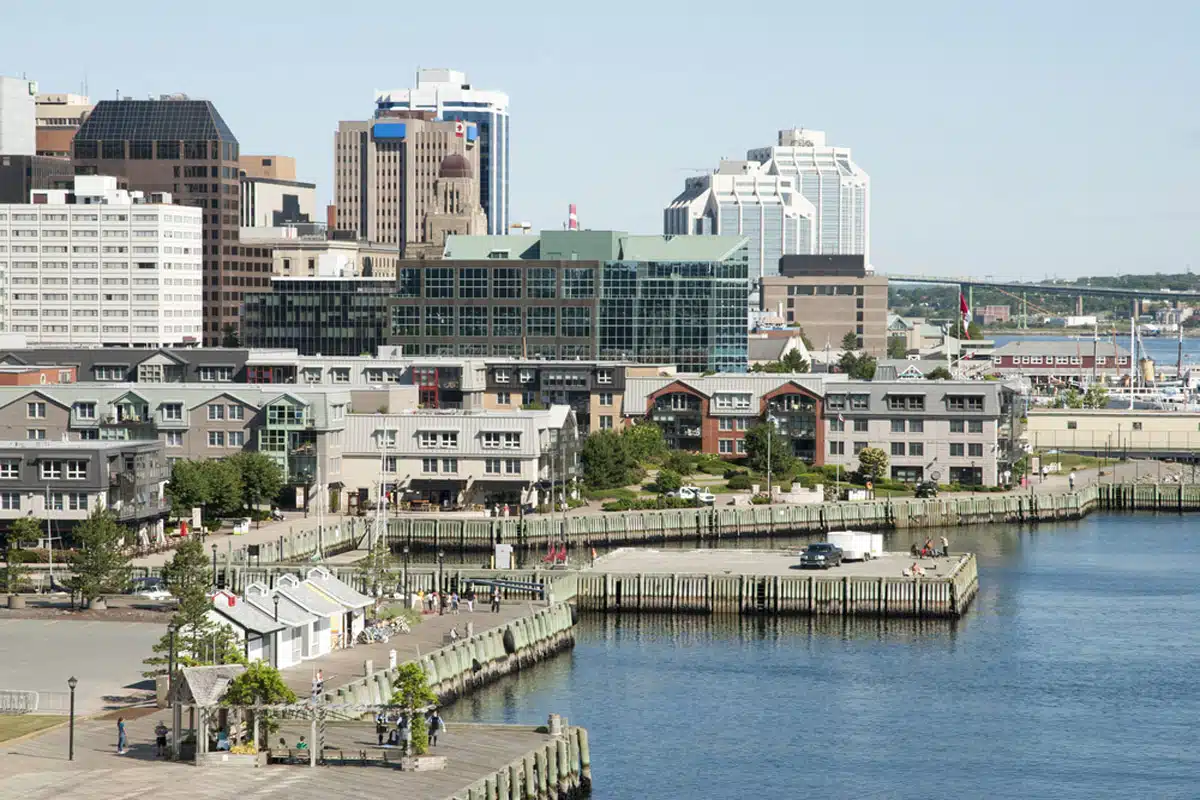
Get a taste of one of Nova Scotia’s gorgeous Atlantic towns when you stay in Halifax. Check out the Maritime Museum and Point Pleasant Park to learn more about the seafaring history in coastal Canada. Visit Halifax Seaport Farmers’ Market for a chance to see the nearly 300-year-old farmer’s market selling anything from craft beer to artisanal soaps and jewellery.
Suggested Stay: Halifax Marriott Harbourfront Hotel
Annapolis Valley
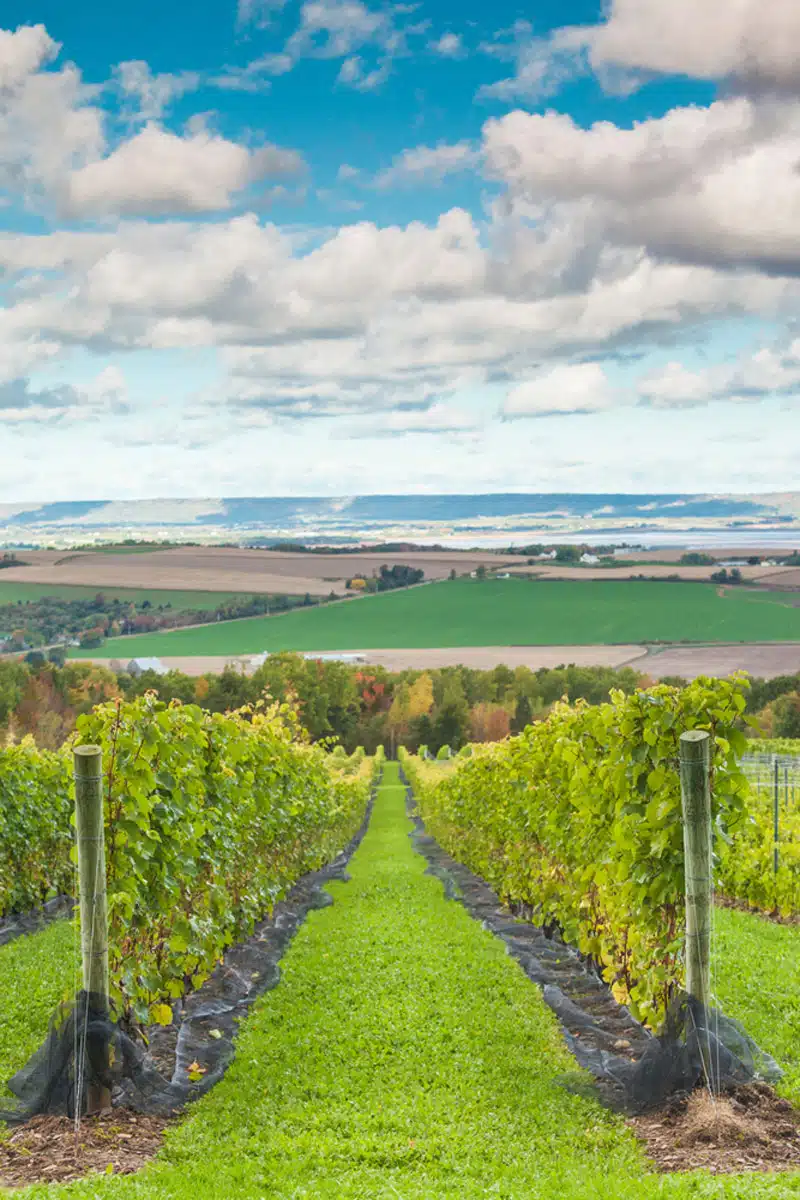
Maybe the most underrated region in Canada, the Annapolis Valley is home to incredible autumn colours, world-class vineyards like Lightfoot & Wolfville , and the collection of flora and fauna at Annapolis Royal Historic Gardens .
Suggested Stay: Queen Anne Inn
Canada Itinerary: Practical Tips for Planning Your Trip
- Hotel options are limited in areas like the Canadian Rocky Mountain Parks – book immediately after deciding where you plan to go.
- You can get a good look at a specific region over a 5 to 7-day Canada itinerary, but I’d recommend staying longer to explore more than one area.
- The weather in Canada is unpredictable and often extreme. Be sure to check out my packing list if you’re visiting the Canadian Rockies or any region of Canada prone to cold temperatures (read most of the country).
- If you’re planning a cross-continental itinerary, I would add a flight or two into your travel plans from one area to another to maximise your time.
Canada Travel Itineraries: Map

Add These to Your Canada Itinerary
- Canada Travel Guide – What You Need to Know Before You Book Your Trip
- Canadian Rockies Itinerary
- How to Plan the Perfect 2 Days in Banff
- 2 Days in Ottawa: A Step-by-Step Itinerary
- Why You Need to Visit Ottawa in Winter
Love This? Save and Share on Pinterest
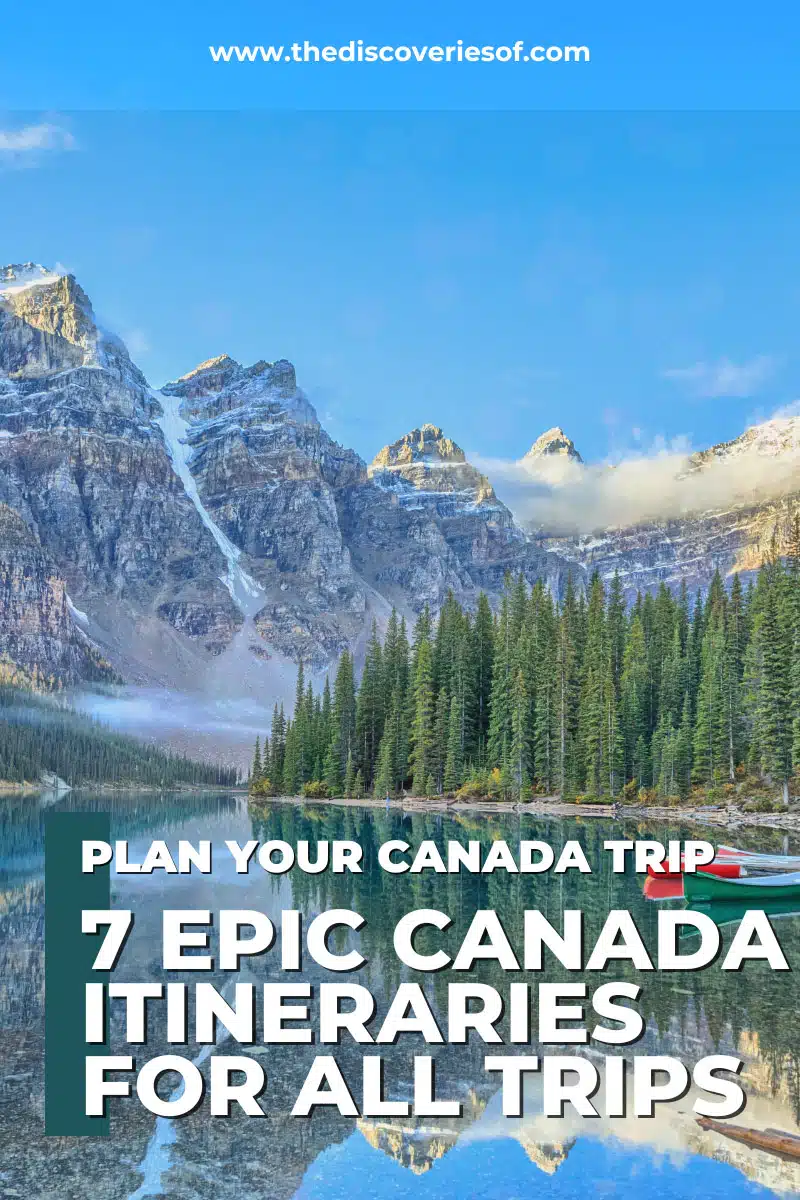
I’m Julianna Barnaby - a professional travel writer and geek extraordinaire. I started The Discoveries Of to help you to discover the best of new destinations from around the world.
Discovering new places is a thrill - whether it’s close to home, a new country or continent, I write to help you explore more and explore differently.
Related Posts
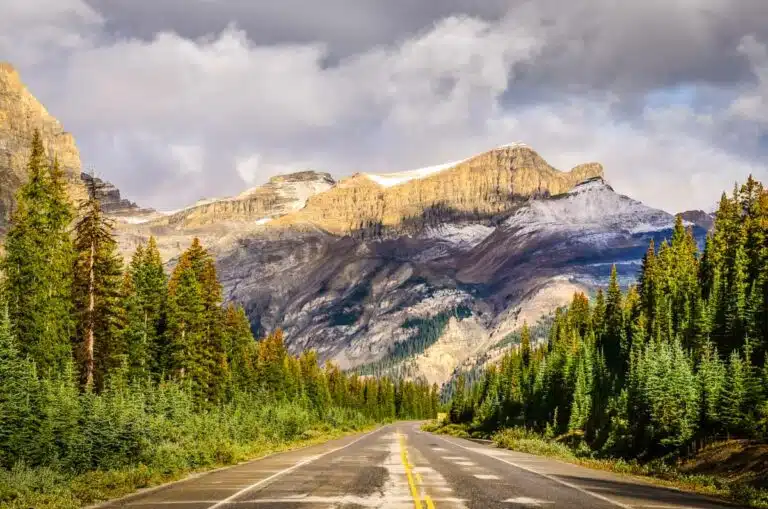
10 Days in the Canadian Rockies: The Ultimate Road Trip Itinerary
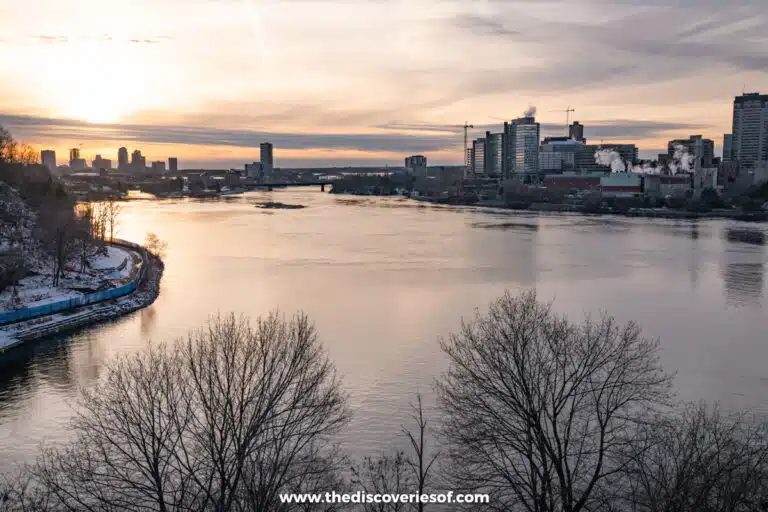
A Guide to Ottawa in Winter: Fun Things to Do on the Perfect Winter Trip
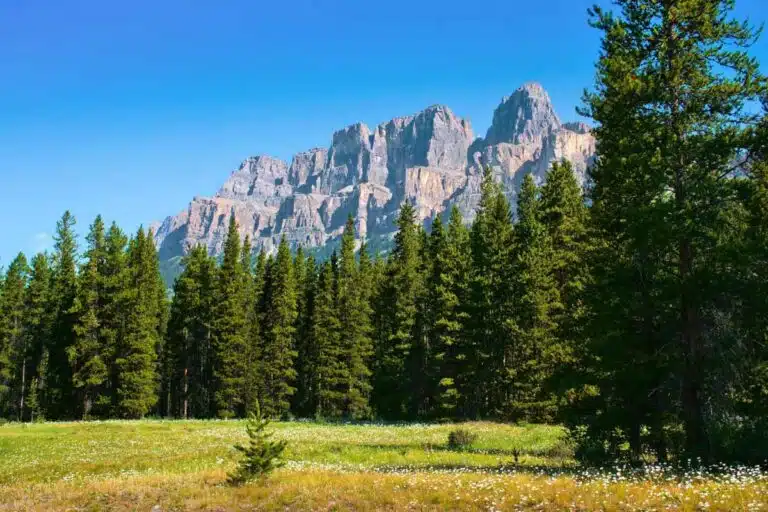
The Best Things to do in Canada: 27 Unique Adventures Up North
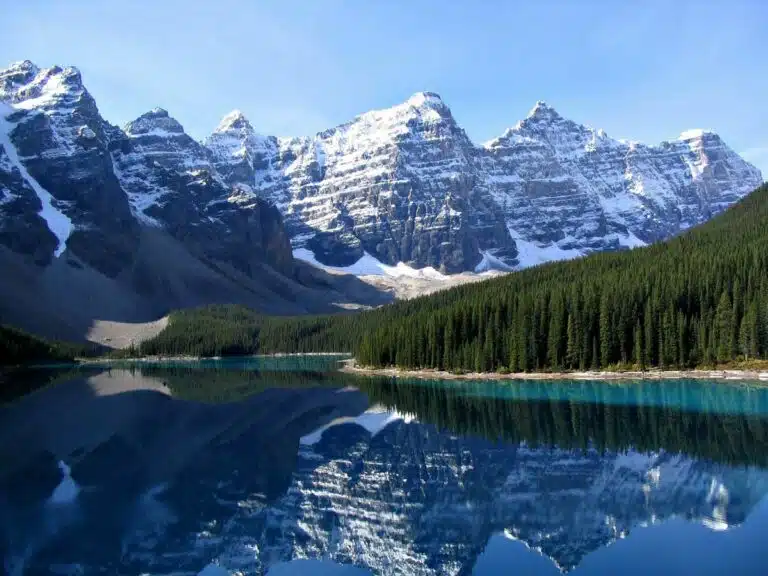
23 Incredible Things to do in Banff – Discover the Jewel of the Canadian Rockies

Follow me on Instagram for travel inspiration, tips, and guides.
Travel Guide Canada
Book your individual trip , stress-free with local travel experts
Select Month
- roughguides.com
- North America
- Travel guide
- Itineraries
- Travel Advice
- Accommodation
Plan your tailor-made trip with a local expert
Book securely with money-back guarantee
Travel stress-free with local assistance and 24/7 support
The home of ice hockey, the Niagara Falls, Mounties and maple syrup – not to mention Ryan Gosling, Céline Dion, Drake and of course, Justin Bieber – almost everyone on the planet knows something about Canada. Yet first-time visitors should expect some surprises, beginning with the immense size of the country, hard to appreciate until you get here.
Where to go in Canada
Aboriginal peoples, outdoor activities, the national parks, bears, cougars and snakes, the best parks to ….
Canada’s cities – enchanting Québec, trendy Vancouver, cosmopolitan Toronto and stylish Montréal among them – are rich with historical and cultural treasures, but above all Canada is a land of stunningly beautiful landscapes, from the spectacular fjord-slashed coastlines of Newfoundland and the Maritimes, to the Rockies’ glittering lakes and majestic peaks, and the rippling prairie expanse with all the sky for a ceiling in between.
The second largest country in the world (after Russia), Canada covers an area the United Kingdom could fit into 41 times over. Much of this expanse is sparsely inhabited and the majority of the 35 million Canadians live in its southern half, relatively close to the US border. Like its neighbour to the south, Canada is a spectrum of cultures, a hotchpotch of immigrant groups who supplanted the continent’s many Aboriginal peoples.
For the visitor, the mix that results from this mostly exemplary tolerance is an exhilarating experience, offering such widely differing cultural, artistic and culinary experiences as Vancouver’s huge Chinatown, the Inuit heartlands of the far north, the austere religious enclaves of Manitoba or the Celtic-tinged warmth of the Maritimes.
Yet – in stark contrast to their southern neighbours – some Canadians are often troubled by the lack of a clear self-image, tending to emphasize the ways in which their country is different from the US as a means of self-description (one of their strange foods, jellied moose nose , probably best sums this up). But the question “What is a Canadian?” continues to linger, with the on-again, off-again and always acrimonious debate over Québec’s secession, but ultimately there can be no simple characterization of a people whose country is not so much a single nation as it is a committee on a continental scale. Pierre Berton, one of Canada’s finest writers, wisely ducked the issue: “A Canadian”, he quipped, is “someone who knows how to make love in a canoe”.
Despite this balancing act, one thing is clear: Canadians have an overwhelming sense of pride in their history, their culture and the mesmerizing beauty of their land. Indeed, Canada embraces all this – as well as its own clichés – with an energy that’s irresistible.
Ontario contains not only the country’s manufacturing heart and its largest city, Toronto, but also Niagara Falls, the premier tourist sight. North of Toronto there’s Georgian Bay, a beautiful waterscape of pine-studded islets set against crystal-blue waters. The bay is also accessible from the Canadian capital, Ottawa – not as dynamic as Toronto, but still well worth a stay for its galleries, museums and handful of superb restaurants.
Québec, set apart by the depth of its French culture, is anchored by its biggest city, Montréal, which is for many people the most vibrant place in the country, a fascinating mix of old-world style and commercial dynamism. The pace of life is more relaxed in the historic provincial capital Québec City, and more easygoing still in the villages dotted along the St Lawrence lowlands, where glittering spires attest to the enduring influence of the Catholic Church.
Across the mouth of the St Lawrence River, the pastoral Gaspé Peninsula – the easternmost part of Québec – borders New Brunswick, a densely forested introduction to the three Maritime Provinces, whose people have long been dependent on timber and the sea for their livelihood. Here, the tapering Bay of Fundy boasts mind-blowing tides – rising and falling by 9m or more – and superb maritime landscapes, while the region’s tiny fishing villages are at their most beguiling near Halifax, the busy capital of Nova Scotia. Even prettier are the land and seascapes of Cape Breton Island, whose rugged topography anticipates that of the island of Newfoundland to the north. Newfoundland’s isolation has spawned a distinctive culture that’s at its most lively in St John’s, where the local folk music scene is Canada’s best. The island also boasts some of the Atlantic seaboard’s finest landscapes, particularly the flat-topped peaks and glacier-gouged lakes of Gros Morne National Park.
Back on the mainland, the Prairie Provinces of Manitoba and Saskatchewan have a reputation for dullness that’s unfair: even in the flat southern parts there’s the diversion of Winnipeg, whose traces of its early days make it a good place to break a trans-Canadian journey. Numerous lakes and gigantic forests offer magnificent canoeing and hiking, and in the far north, beside Hudson Bay, Churchill – remote, but accessible by train – is famous for its polar bears, beluga whales and easy viewing of the Northern Lights. Moving west, the wheatfields of Alberta ripple into ranching country on the approach to the province’s two main cities, Edmonton and Calgary, grown fat on the region’s oil and gas fields. Calgary is especially known for its cowboys, rodeos and sumptuous steaks. Both cities provide useful springboards for trips into the Canadian Rockies – most popularly to the resorts of Banff, Lake Louise and Jasper – and the most spectacular scenery in the country, from mighty glaciers to the serene beauty of Moraine Lake and the rugged wilderness of Icefields Parkway.
Further west, British Columbia is a land of snow-capped summits, rivers and forests, pioneer villages, gold-rush ghost towns, and some of the greatest hiking, skiing, fishing and canoeing in the world. Its urban focus, Vancouver, is the country’s third largest city, known for its spectacular natural setting, fabulous food and a laidback West Coast hedonism. Off the coast lies Vancouver Island, a microcosm of the province’s immense natural riches and home to Victoria, a devotedly anglophile little city. It’s also well worth journeying over to the island’s west coast to take in the rugged beauty of Pacific Rim National Park’s Long Beach, Clayoquot Sound and surf town of Tofino.
North of British Columbia, wedged alongside Alaska, is the Yukon Territory, half grandiose mountains, half subarctic tundra, and full of evocative echoes of the Klondike gold rush. Whitehorse, its capital, and Dawson City, a gold-rush relic, are the major towns here, each accessed by dramatic frontier highways. The Northwest Territories and Nunavut, covering the Canadian Arctic, are an immensity of forest, lakes, tundra and ice, the realm of Dene and Inuit Aboriginal peoples. Roads are virtually nonexistent in the deep north, and only the frontier city of Yellowknife, plus a handful of ramshackle villages, offer the air links and resources necessary to explore this wilderness.
Discover more places in Canada

- Ontario Travel Guide
- The Prairie Provinces Travel Guide
- Québec City and Northern Québec Travel Guide
- The Maritime Provinces Travel Guide
- The BC Interior Travel Guide
- Vancouver and Vancouver Island Travel Guide
- Toronto Travel Guide
The British and French were latecomers to Canada, a country that for thousands of years was home to a vast aboriginal population (or “First Nations”). Today, almost a million Canadians claim descent from these first peoples, from the so-called “Indians” of the central and western heartlands, to the Inuit, inhabitants of the great sweep of Canada’s north. A third group, the Métis – descendants of mixed unions of white and aboriginal people – also have a distinct identity, part of a rich cultural, social and artistic mosaic that provides a beguiling complement to the mainstream. You’ll find evidence of Canada’s former aboriginal life in many museums and galleries, and plenty of areas nurturing living aboriginal cultures, though there’s no escaping the fact that many aboriginal people are among the most marginalized of Canadians.
• Canada has the 11th largest economy in the world; the country’s richest person is David Thomson (chairman
of Thomson Reuters), worth around $30 billion.
• It’s true: the Canadian province of Québec is by far the largest producer of maple syrup in the world (accounting for three-quarters of global output).
• Established in 1964, Tim Hortons is a Canadian icon, with over 3000 doughnut and “double-double” (coffee with two sugars and two creams) stores nationwide.
• Unbeknown to most Americans, Hollywood is crammed with Canadians: Michael Cera, Ryan Gosling, Evangeline Lily, Rachel McAdams, Mike Myers, Ellen Page, Keanu Reeves, Ryan Reynolds, Seth Rogen, Kiefer Sutherland and William Shatner (Captain Kirk!) among them.
• Since 1952, Saturday nights have been home to “Hockey Night in Canada” on CBC, when thousands are glued to the TV to pay homage to the national sport.
Canada’s mountains, lakes, rivers and forests offer the opportunity to indulge in a vast range of outdoor pursuits. We’ve concentrated on fishing, hiking, skiing and canoeing – four of Canada’s most popular activities – and on the national parks, which have been established to preserve and make accessible the best of the Canadian landscape.
Other popular activities such as whale-watching, riding and rafting are covered in some detail in the main text. Once in Canada you can rely on finding outfitters, equipment rental, charters, tours and guides to help you in most areas; tourist offices invariably carry full details or contact numbers.
Canada’s 37 national parks and eight national park reserves are administered by Parks Canada ( w pc.gc.ca ), and local staff based at park information centres . Visit these to pick up special permits if you intend to fish or camp in the backcountry, and for information and -audiovisual displays on flora, fauna and outdoor activities. Many offer talks and nature walks presented by park naturalists, as well as reports on snow, weather and recent bear sightings. The national parks system also administers 168 National Historic Sites – important historical sites dotted around the country.
Supplementing the national parks is a network of provincial parks in every province in the country. Entry to these parks is sometimes free, though often you’ll have to pay a small fee of around $5. You’ll also have to pay for fishing and hunting permits as well as campgrounds on top of this; specifics vary from province to province.
National park permits
All those entering Canada’s national sites and parks require a park permit , regardless of their mode of transport, though permits are usually sold to cover all those entering in a particular vehicle from a roadside booth on the park boundary. This costs around $7.80 to $9.80 per person per day with concessions for the young and old. If you intend to visit a number of national parks and sites, it might be worth investing in an annual Discovery Pass, which provides one adult unlimited admission to all parks and national historic sites for $67.70; family or group passes, covering a whole car-load of people, cost around double.
Additional permits are also required to fish (see Bears, cougars and snakes) and backcountry camp in national parks: both are generally available from park information centres.
Canada boasts some of North America’s finest hiking , and whatever your ability or ambition you’ll find a walk to suit almost anywhere in the country. All the national and many provincial parks have well-marked and well-maintained trails, and a visit to any park centre or local tourist office will furnish you with adequate maps of the usually very easily followed local paths. If you’re venturing into the backcountry try to obtain the appropriate 1:50,000 sheet from the Canadian Topographical Series. For key hiking areas we’ve given a brief summary of the best trails in the appropriate parts of the Guide, though with over 1500km of paths in Banff National Park alone, these recommendations only scratch the surface. Park staff can advise on other good walks, and detailed trail guides are widely available for most popular regions.
Before setting off on anything more than a short stroll be properly informed of local conditions and be properly equipped . Hiking at lower elevations should present few problems, though swarms of blackflies in the spring and mosquitoes near water can drive you crazy; anything containing DEET should be a fairly reliable repellent. For more on specific health problems.
Main hiking areas
The most extensive and rewarding hiking-trail networks are in the Rockies national parks of Alberta and BC. Thousands of kilometres of well-kept and well-tramped paths crisscross the four main parks – Banff, Jasper, Yoho and Kootenay – as well as the smaller enclaves of Glacier, Revelstoke and Waterton Lakes. Scope for hiking of all descriptions is almost limitless. More modest areas dotted all over BC boast walking possibilities out of all proportion to their size: we pay less attention to these, but by most relative standards hiking here is still among the best in North America.
In Manitoba , the Riding Mountain National Park offers about thirty hiking trails, but though there’s plenty of upland walking to be had in the prairie provinces, you have to move east to Québec ’s Mauricie, Forillon and Gatineau parks for a taste of mountains comparable to the western provinces. In Ontario , Lake Superior Provincial Park and Algonquin Park are the most challenging terrains. New Brunswick ’s Fundy National Park offers coastal walks, while Newfoundland ’s hiking centres on its two national parks: Terra Nova on the East Coast, and the high plateau and fjords of the West Coast’s Gros Morne. For the truly bold, however, nothing can match the Arctic extremes of Baffin Island, whose principal trail lies over an icecap that never melts.
Long-distance trails
In areas with highly developed trail networks, seasoned backpackers can blaze their own long-distance walking routes by stringing together several longer trails. Recognized long-haul paths are relatively rare, though more are being designated yearly. One of the best is the Chilkoot Trail from Dyea in Alaska to Bennett in BC, a 53km hike that closely follows the path of prospectors en route to the Yukon during the 1898 gold rush. The most popular is probably Vancouver Island’s demanding West Coast Trail , which runs for 75km along the edge of the Pacific Rim National Park.
More far-reaching walks include the Rideau Trail , which follows paths and minor roads for 386km from Kingston to Ottawa ( w rideautrail.org ); the 690km Bruce Trail from Queenston, on the Niagara River, to Tobermory on the Bruce Peninsula ( w brucetrail.org ); and the Voyageur Trail along the north shores of lakes Superior and Huron, which is the longest and most rugged route in the province ( w voyageurtrail.ca ). In the Maritimes, the Confederation Trail cuts a bucolic path across PEI, while the Fundy Trail in New Brunswick and, in particular, the East Coast Trail in Newfoundland offer a more rugged experience.
Wherever there’s good hiking in Canada, there’s also usually skiing . The increasingly popular resorts of the Rockies and BC are the main areas and the country’s leading resorts are at Whistler, Banff and Lake Louise. But there’s also great skiing in Québec, and a few good runs at the minor day resorts that dot the other provinces. Most cities are also close to excellent cross-country trail networks.
Canadian ski packages are available from travel agents worldwide, but it’s perfectly feasible to organize your own trips, as long as you book well ahead if you’re hoping to stay in some of the better-known resorts. Costs for food, accommodation and ski passes are still fairly modest by US and European standards: expect to pay $50–75 per day (depending on the quality and popularity of the resort) for lift passes, plus another $30 or more per day to rent equipment.
Canada is fishing nirvana. While each region has its specialities, from the Arctic char of the Northwest Territories to the Pacific salmon of BC, excellent fishing can be found in most of the country’s abundant lakes, rivers and coastal waters. Many towns have a fishing shop for equipment, and any spot with fishing possibilities is likely to have companies running boats and charters. Most provinces publish detailed booklets on everything that swims within the area of their jurisdiction.
Fishing is governed by a range of regulations that vary between provinces and are usually baffling at first glance, but usually boil down to the need for a nonresident permit for freshwater fishing, and another for saltwater fishing. These are increasingly available online (search the provincial government websites) or from most local fishing or sports shops for $60 and up, and are valid for a year. Short-term (one- or six-day) licences are also available in some provinces ($15–30). For nonresidents, fishing in Ontario requires an Outdoors Card for $11.94 (valid for three years; if you plan to fish for one day only, you can skip this), plus a fishing licence: one year is $85.53, while one day is $25.27 (call t 1 800 387 7011). Alberta fishing licences are $70.90 (one year) and $28 (one day); Northwest Territories charges $40 per season and $30 for three days; while BC charges a whopping $80 annually ($20 for one day). Newfoundland licences are required for salmon ($53 per season) and trout ($8 per season), with seasons strictly regulated. Additional permits are required to fish in national parks (where fishing is allowed); available from park administration centres, these cost around $34.30 annually or $9.80 daily. There may well be quotas on the types and numbers of fish you can catch, which you can find out when you buy a permit.
Opportunities for canoeing are limited only by problems of access and expertise: some of the rapids and portages on the country’s more challenging routes are for real pros only. The most straightforward regions to canoe are in Ontario , with its estimated 250,000 lakes and 35,000km of waterways, some 25,000km of which have been documented as practical canoe routes. The key areas are the Algonquin, Killarney and Quetico provincial parks, though the single most popular run is the 190km Rideau Canal, a tame stretch from Kingston to Ottawa.
The rivers of BC offer generally more demanding whitewater routes, though the lake canoeing – in Wells Gray Provincial Park, for example – is among the country’s most beautiful. One of the province’s other recognized classics is the 120km trip near Barkerville on the Cariboo River and the lakes of the Bowron Lakes Provincial Park. More challenging still are the immense backcountry lakes and rivers of the Mackenzie River system and the Barrenlands of the Northwest Territories , where you can find one of the continent’s ultimate river challenges – the 300km stretch of the South Nahanni River near Fort Simpson. Growing in popularity, partly because of improved road access, are trips on and around the Yukon River system, particularly the South Macmillan River east of Pelly Crossing. Other areas that will test the resources of any canoeist are to be found in Manitoba and Labrador – all detailed in this guide.
Once you’ve decided on an area, provincial tourist offices can provide full lists of outfitters . These will rent out equipment, organize boat and plane drop-offs, and arrange provisions for longer trips. Costs range from $150 to $250 for weekly canoe rental.
Realistically, your biggest irritations while hiking are likely to be mosquitoes, flies and blackflies and hiking in the Canadian wilderness is far safer than wandering around most cities, but make no mistake, bears are potentially very dangerous, and most people blow a whistle while walking in bear country to warn them off. If confronted don’t run, make loud noises or sudden movements, all of which are likely to provoke an attack.
Cougars pose a somewhat lesser threat, with most attacks occurring in BC – unlike bears, the best strategy with cougars is to try and fight them off (they usually avoid groups altogether).
Snake bites are more common in some parts of Canada (there are rattlesnakes in Georgian Bay Islands National Park for example), but even then only a handful are reported each year and fatalities are rare – wear proper boots and if you do disturb a snake back away so that it has room to move freely. Even the most venomous bites can be treated successfully if you receive immediate medical attention (call t 911 or notify park staff).
It’s pure paddling pleasure in Ontario, with Point Pelee National Park’s winding freshwater marshes and Algonquin Provincial Park’s network of lakes.
The islets of Québec’s Mingan Archipelago or BC’s lush Gulf Islands are both national park reserves.
Jasper’s Icefields Parkway is a superlative mountain drive, but the Cabot Trail in Nova Scotia’s Cape Breton Highlands is a fine maritime alternative.
Banff’s credentials can’t be denied, but to escape the crowds, head to Gros Morne National Park, Newfoundland.
Radium or Banff Upper hot springs in the Rockies: both offer steaming waters to soothe the tired traveller.
Nahanni National Park in the Northwest Territories just edges Jasper for wild whitewater thrills.
Travel advice for Canada
From travel safety to visa requirements, discover the best tips for traveling to Canada
- Spectator sports
- Travel Tips Canada for planning and on the go
- Eating and drinking in Canada
- How to get to Canada
- Getting around Canada: Transportation Tips
- Best time to visit Canada
The Rough Guides to Canada and related travel guides
In-depth, easy-to-use travel guides filled with expert advice.
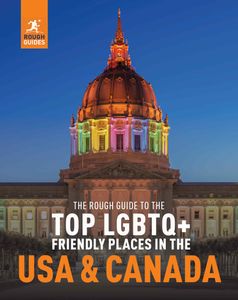
Find even more inspiration here

Planning your own trip? Prepare for your trip
Use Rough Guides' trusted partners for great rates
written by Rough Guides Editors
updated 26.05.2021
Ready to travel and discover Canada?
Get support from our local experts for stress-free planning & worry-free travels.
- Travel advice
- Where to stay
- Skip to main content
- Skip to footer
Must Do Canada
The Best Things to Do in Canada
Main Content
YOUR ULTIMATE TRAVEL GUIDE TO CANADA
We help you do canada right with the best canadian travel guides and videos., want fun weekly canada travel news.
Join 70,000 travellers and get our weekly travel newsletter with new Canada travel guides, videos, travel news, and more!
Things to Do in Canada
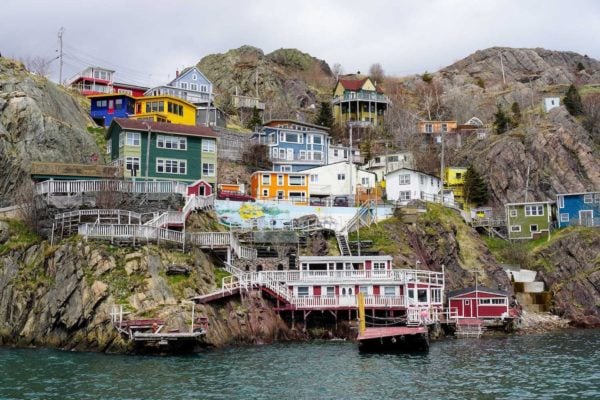
After years of exploring the world, including 42 countries and 6 continents, Matt and Karla decided to focus on their home country of Canada.
For Canada's 150th birthday in 2017, they drove coast to coast to coast for 150-days to create a mini travel series about Canada and a mini-documentary about what makes Canada special.
Since then, they've become experts on travelling in Canada and share all their tips, stories, and advice through videos, travel guides, social media, and more!
Our most popular articles
Muir hotel: luxury hotels in halifax that truly inspire, 22 of the best things to do in kelowna, the best things to do in banff, alberta, 25 of the best things to do in winnipeg, the best parks for camping in lake superior, best cafes in montreal with great third wave coffee, best sushi in ottawa, relax and unwind: finding the best spa in ottawa for ultimate tranquility, best massage in calgary, mexican restaurants in calgary, we’ve been featured on.

Youtube Canada: Videos about Canada Travel
After driving across Canada for 150 days to create a 12-part travel series about travel in Canada, the Must Do Canada Youtube channel took off. Matt and Karla now produce travel vlogs about Canada all year, focusing on Canadian cities, towns, and off-the-beaten track destinations from coast to coast to coast.

Latest From The Blog

Road to 150
To celebrate Canada's 150th birthday in 2017, we jumped in an SUV and drove across Canada for 150 days to experience some of the best things to do in Canada while interviewing people about what makes Canada special. We drove coast to coast to coast, starting in Newfoundland, going all the way up to the Arctic Ocean, down to the Pacific, and back to our home province of Alberta. It was spectacular and we'd love to show you what it was like in our videos.

© 2022 Must Do Canada. All Rights Reserved.
- Privacy Policy
- Work With Us
- Get in Touch
- Facts about Canada
- Canadian Languages
- Canadian Money
- Canada Flags
- Things to Do in Calgary
- Best Canada Road Trips
- Best Road Trip Essentials
- Fall in Canada
- Travel Resources

Travel Tuesday – Order Your FREE Canadian Travel Guides
This is the time of year that many provinces are sending out their free travel guides. If you are planning a trip or just want to explore your home province, these guides are a fabulous resource.
Yes, all the info is available online, but I find when planning out my days or longer trips, having the paper guide to browse, is much more pleasant. I then use my phone or laptop to research details, like visiting websites for accommodations, restaurants, and activities.
Here are some links to guides in Canada:
The 2022 Travel Guide will be available this spring at major entry points to the province, as well as Visitor Information Centres , Circle K and Irving stores, and other select locations within the province during the summer season.

New Brunswick Tourism Information, HERE. (2022 no guide available at this time)
Prince Edward Island is just the right size to allow you the opportunity to have a relaxing island vacation and still have time for experiences that will inspire life-long memories. We have miles of sandy beaches, wonderful foodie experiences, top-rated golf courses, ceilidhs and music halls all over the island, unique craft shops, and Authentic PEI Experiences that you simply have to try!

Request your Prince Edward Island Guide, HERE . (2022 guide available)
Doers and Dreamers Travel Guide This comprehensive planning tool is complete with contact information, accommodations details, and top attractions; driving map included. Discover where to go and what to see on your next Nova Scotia adventure.

Request your Nova Scotia Tourism Guide, HERE. (2022 guide available)
Get lost and found. Our Traveller’s Guide can help you with both.

Order your free Newfoundland & Labrador Travel Guide, HERE . (2022 Guide Available)

Order your Yukon Travel Guide, HERE . (2022 Guides Available)
More info guides to view and plan on the following sites, for each province.
- Quebec Travel Guides
- Ontario Guides
- Manitoba Guides
- Saskatchewan Travel Guides
- Alberta Tourism Guides
- British Columbia ( maps , HelloBC site )
- Nunavut ( tourism page )
- North West Territories

Share this:
- Click to share on Twitter (Opens in new window)
- Click to share on Pinterest (Opens in new window)
- Click to share on Facebook (Opens in new window)
4 thoughts on “Travel Tuesday – Order Your FREE Canadian Travel Guides”
I would like Paper guides for Ontario as well as B. C. but are only available to download. I can’t drive to Canada to get a free copies as it seems to be the only way. How can i get these.
Bobbi, I would suggest contacting the tourism website for each province and requesting the guide through their “contact us” page.
Can you please send me scenic drives and parks to visit near winnepeg. Judy knoll. 7734 tomahawk ln. Kingston. Ok. 73439
Pretty flowers and City
Leave a Comment
Notify me of follow-up comments by email.
Notify me of new posts by email.
This site uses Akismet to reduce spam. Learn how your comment data is processed .

The Ultimate Canada Travel Guide
C anada has been the spotlight of the travel community this year, and with good reason. Lonely Planet ranked it 2017's top country for travel, and Canada has been the word ever since. The icing on the cake? This year only, Canada is offering free admission to all national parks and historic sites . No better time to visit, eh!
Despite the recent hype, Canada's beauty has been long renowned. Our snow-smeared mountains resemble the cosiest of snow globe scenes, and the glacial lakes are as brightly emerald as photos portray. And our overly polite reputation? Well sorry , but I'm afraid that's true too.
As thrifty Canadians ourselves, a thorough guide to our home country is long overdue. We've driven across Canada via a 1-cent per day RV relocation , explored both sea-soaked coasts, and ventured the far North in search of the Yukon's aurora. Here's our ultimate travel guide to seeing Canada affordably!
- 1 How much does a trip to Canada cost?
- 2 When to Go
- 3 Where to Go
- 4 Transportation
- 5 Accommodation
- 6 Activities & Tours
- 7 Food & Drink
- 8 The Thrifty Gist
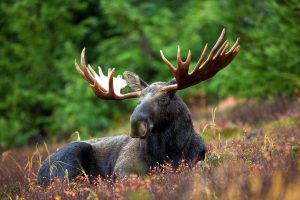
How much does a trip to Canada cost?
First things first, Canada isn't cheap. Food, accommodation, and activities are fairly comparable to Europe or Australia. Tax is not included for nearly all food and goods, so prices can be deceiving. In addition to tax, tipping 15-18% is expected for drinking, dining, and tours.
But don't be dismayed – there are plenty of ways to reduce your costs here. A conservative travel budget for Canada would be $80 USD per day to cover accommodation (e.g. dorms and humble AirBNBs ), food, and potentially activities. This depends largely on how basic your accommodation is, and whether you choose free entertainment versus day tours. A mid-range amount would be $80-$200 USD, again, varying hugely based on your pace of travel, activities, mode of transport, and more.
Most Canadians would tout that our country is beautiful year-round – and we can't argue with that. Ultimately, trip timing should be based on what you want to see. Each season has its own festivals, foods, and unique natural displays. Travellers are spoilt for choice here!
Winter (November – February)
Winter in Canada is snowy, other-worldly, and of course, cold . Our already incredulous landscapes of mountains, rivers, and forests become more majestic when draped in a fluffy layer of snow. Take note that the west coast tends to have milder, rainier winters. Top winter highlights include:
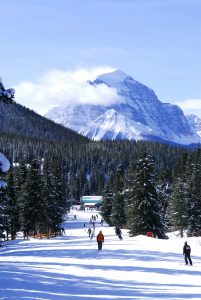
- Snow-smothered mountains and landscapes (British Columbia, Alberta, Yukon, Northwest Territories are great for this). Winter sports are popular country-wide, including skiing, sledding, snow-shoeing, and ice skating.
- A wonderfully winter-y Québec , the French-influenced province with delightful European vibes. Montréal and Quebec City are pure magic in the winter months – check our Montréal winter bucket list here .
- A frozen Niagara Falls (if the temps are cold enough!), colourfully lit during the Fallsview Winter Festival of Lights.
- Delectable winter eats like maple taffy (maple syrup drizzled on snow, twirled onto a popsicle stick). A cup of mulled wine is also great for frigid fingers!
- Infinite winter festivals – a quick Google search will reveal local events. Popular ones include the Quebec Winter Carnival (Carnaval de Québec), Winterlude in Ottawa, and Montreal's Festival of Lights (Montréal en Lumière).
Spring (March to June)
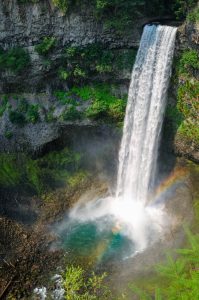
Springtime is bloom time, and is also the shoulder season of travel. This means less festivals and events, but far less tourists too. The snow has melted (or is melt ing ), animals emerge from hibernation, and greenery reappears. Spring also brings lots of rain, so prep for wet days. Springtime highlights include:
- Spotting 10,000 year old glaciers floating through the ocean. In April to late June, Newfoundland and Labrador providers optimal viewing in “Iceberg Alley”. You can even kayak right up to them!
- Outdoor activities like white water rafting gain popularity with increased river flow from snow melt-off in early spring.
- Vancouver's Cherry Blossom Festival is one of Canada's few major spring festivals. This event celebrates the city's perfumed blossoms, which embellish the city in hues of pink.
Summer (June to September)
Summer is a favourite, albeit fleeting, season for Canadians. Temps average between 20 and 30 degrees depending on where you are (our weather is generally erratic). A hurried energy fills in the air as people squeeze in as much sunshine as possible. Summer highlights include:
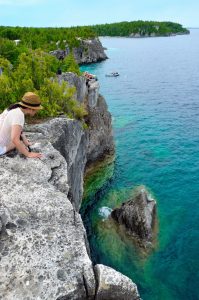
- Wildlife spotting via hiking or camping . With our elusive animals being more active, the chance to spot moose, bears, deer, beavers, and other wildlife increases.
- Festival season! Summer is packed with events across the country, from music and art, to food and wine. Some of the big ones include Calgary Stampede (Alberta), Celebration of Light (Vancouver), Montreal Jazz Festival (Québec), and Just for Laughs (nationwide, originates from Montréal).
- Infinite backyard barbecues . Connect with some locals and experience a classic Canadian summer's night with BBQ'd food, bonfires, and good company.
- Outdoor sports – kayaking, canoeing, and the ultra Canadian choice – portaging. Portaging is an alternation between canoeing and carrying your canoe overland for water and land-based exploring. Not for the weak-armed!
Fall (September to November)
Fall is another top contender for most-loved season. Canadian autumn is world famous for the spectacular leaf colour changes that occur as temperatures drop. This paints mountains and forests in rustic shades of orange, yellow, and red. Fall highlights include:
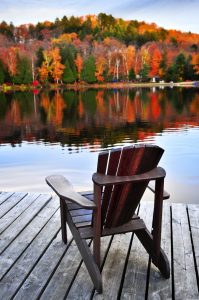
- Polar bear spotting . These creatures are incredibly out of the way and require expensive tours to see, but once you do, it's worth every effort. From October to November polar bears (and beluga whales) are spottable at Churchill, Manitoba and Baffin Island, Nunavut as they fatten up for winter. Tours are mandatory, and are available either as a day tour , or a package trip through TourRadar , G Adventures or Viator .
- Spirit bear watching . Spirit bears are a rare subspecies of black bears (not albino). These mystic creatures are spottable in fall as they fatten up for hibernation. They are best viewed on the west coast from August to September. The Spirit Bear Lodge is a dedicated lodging tour operator for spirit bear spotting.
- Finding fabulous trails, drives, and lookouts for changing leaves changing is a staple activity for Canadian autumn. Each province has leaf change tracking websites (e.g. here for Ontario) to track the where/when of colour changes.
- Toronto's wonderfully quirky Nuit Blanche takes place each October. This eclectic all-night arts event speckles immersive pieces and experiences across the entire city.
- Canadian Thanksgiving takes on the second Monday of October every year. This involves a huge feast of roast turkey drizzled in spices, served with mashed potatoes, roasted vegetables, gravy, and more. If you cannot find a local family to dine with (try searching BonAppetour ), try to find a restaurant putting on a Thanksgiving roast.
Where to Go
Canada is massive – in fact, it's the second biggest country on the planet! Even if you're long-term travelling, scratching its surface is an enormous task.
To start, choose one or two regions to cover. It's best to determine what kind of scenery and activities you want to narrow down your choices. If you're covering a few areas, it is likely you'll need to connect your trip with flights.
Need inspiration? We have a great roundup of some of Canada's best national parks here , and some epic driving routes here to get the Canadian wanderlust flowing.
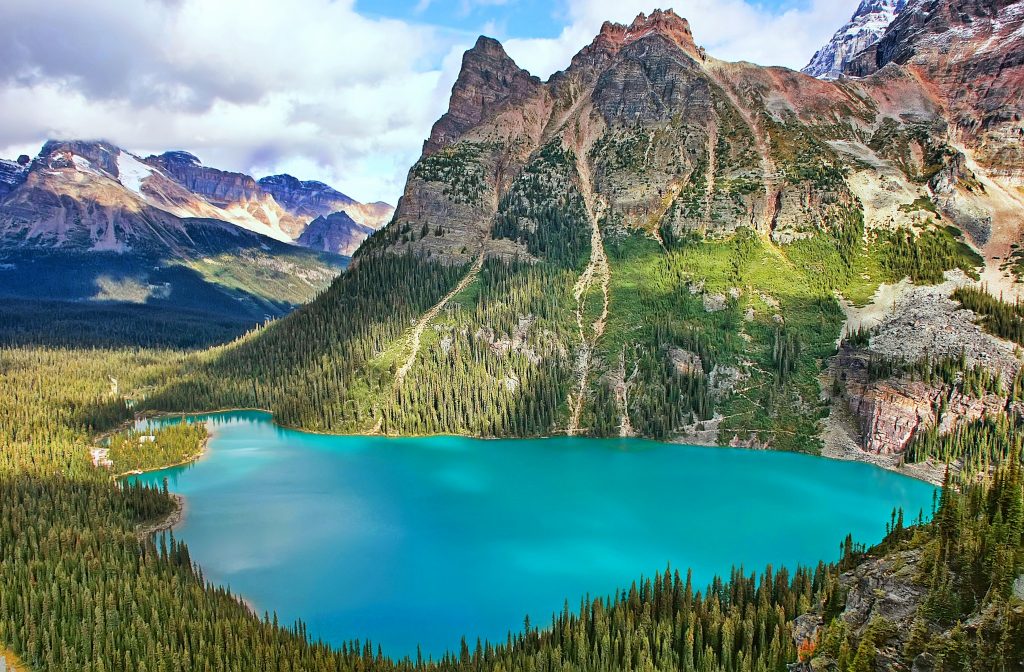
“West Coast, best coast” is a phrase touted by residents of Canada's westernmost province, British Columbia (B.C.). This province, along with its neighbour Alberta, are a popular combo for first-time visitors. Much of Canada's quintessential wildlife and scenery can be found here, amidst lots of other highlights including:
- Mountainous scenery and mountain-based activities . The famous Canadian Rockies wind through both B.C. and Alberta. Many mountains here boast glacial lakes whose neon hue will suck the “wow” right out of you. Skiing and mountain sports are hugely popular here and Whistler – home to the 2010 winter Olympics – begs a visit in summer or winter, whether hitting the powder or hovering the mountains by gondola.
- Beautiful and accessible nature . If visiting Vancouver, Stanley Park is not to be skipped. Arguably the most beautiful city park in the world, Stanley has oceanside views, towering forestry, and the delectable scent of cedar, fir, and spruce trees hanging in the air.
- Quintessential Canadian wildlife . Keen to see bears, moose, beavers, elk, and more? B.C. is one of the best places to view them. Whistler is perhaps the most accessible from Vancouver, but the province's parks are also a great place to search for wildlife.
- An iconic city and skyline . Vancouver has an unbeatable skyline – its modern, shiny downtown sits perched along the Pacific Ocean, while a backdrop of snow-drizzled mountains tower behind. Trendy bars and restaurants abound, as well as plenty of nearby hikes and biking trails to escape the city bustle.
The Great White North
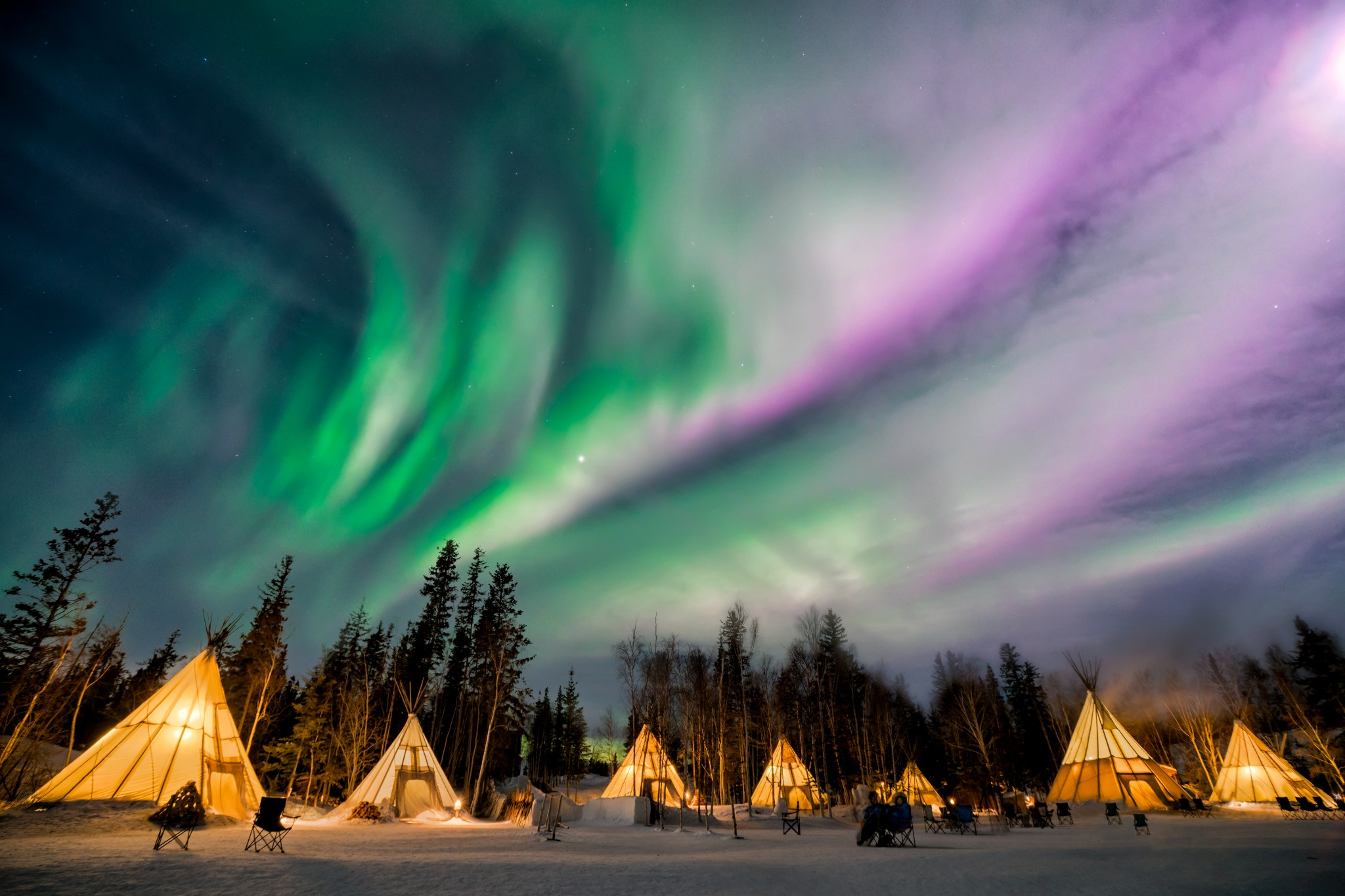
The true great North is a rugged venture to get to, but it is well worth every effort (and penny!) once you've made it. The “North” is comprised of Yukon, Northwest Territories, and Nunavut. Of the three, Yukon is perhaps most accessible as it can be most affordably combined with a visit to B.C. Here's what's the Great White North has in store for its visitors:
- Aurora (Northern Lights) spotting . Whitehorse, Yukon and Yellowknife, Northwest Territories are the most accessible places for spotting the incredulous Northern Lights. September to March is the best time for viewing. To avoid the coldest months, Sept-Nov and Feb-March are best. The cheapest times are tourist shoulder season, around September and March. You can compare viewing tours along with reviews on Viator .
- Epic road tripping . The remote landscapes here feel that much more otherworldly when you jump in a car and explore them. A great drive is to do a figure-eight loop through the Yukon and Alaska (outlined in this post). You'll pretty much be guaranteed bear sightings and a visual feast of mountainous scenery.
- Remote national parks . The North has several stunning national parks including Kluane National Park (Yukon), Auyuittuq National Park (Nunavut), and Nahanni National Park Reserve (Northwest Territories). Camping or cabin-hopping here is a must !
The Prairies
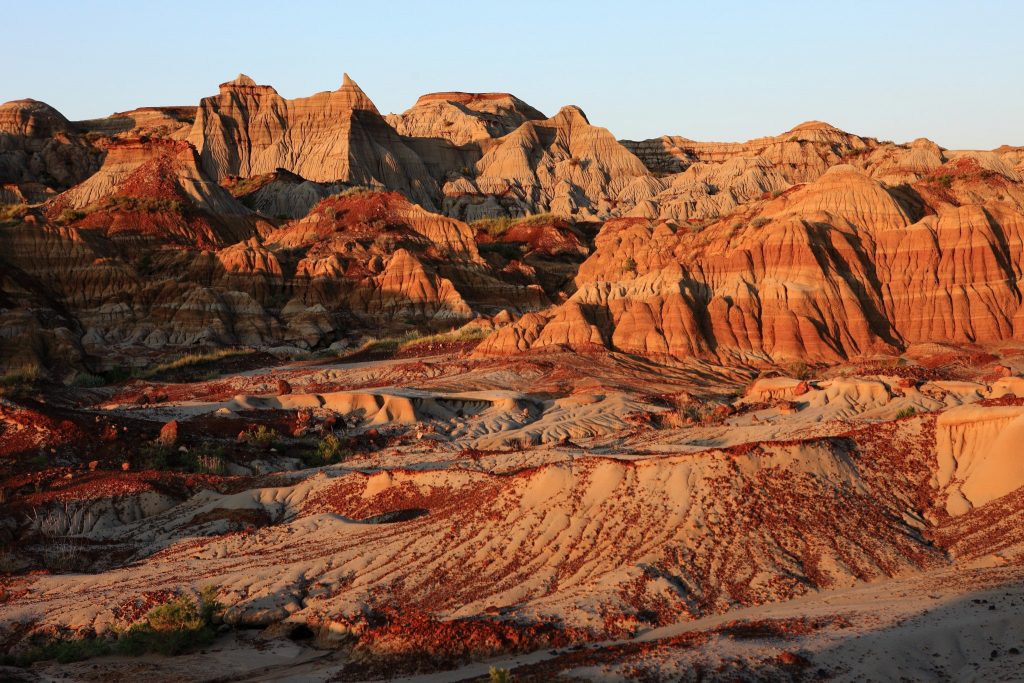
Besides Alberta, Canada's prairies are one of the nation's lesser visited regions. But don't be mistaken, this area is teaming with unexpected treasures. While much of this region is well, prairies , which harvest a large supply of the world's wheat, don't miss out on any of these gems:
- Polar bear spotting . Churchill, Manitoba is remote and expensive to get to, but is one of the best places on earth to for polar bear watching. Tours are required (trust us, you wouldn't want to watch these notoriously aggressive beasts without one!).
- The freshest steak in the country. Alberta produces nearly 3% of the world's beef – this is the place to sink your teeth into some! Calgary has many acclaimed steak restaurants – the best steak we ever had was at Model Milk . Be sure to try the “Fat Kid Cake 2.0” if you have room for dessert!
- Cowboy culture and country livin' . The world famous Calgary Stampede displays Canada's “cowboy” culture in July each year. Featuring a rodeo, concerts, acrobatics shows, and more, there's plenty to see and do!
- Spectacular mountain ranges and national parks . As mentioned in this post, Jasper and Banff National Park are some of Canada's most visited national parks, and justifiably so. Both parks offer prime opportunities for wildlife spotting and a breathtaking selection of mountains and lakes.
- Visit the world's oldest, biggest dinosaur fossils . Dinos in Canada? Yep, we've got 'em (or their fossils at least!). The Alberta Badlands are home to tens of thousands of dinosaur fossils. You can view them in sediment at Dinosaur Provincial Park , or see the biggies on display at the Royal Tyrell Museum.
Central Canada
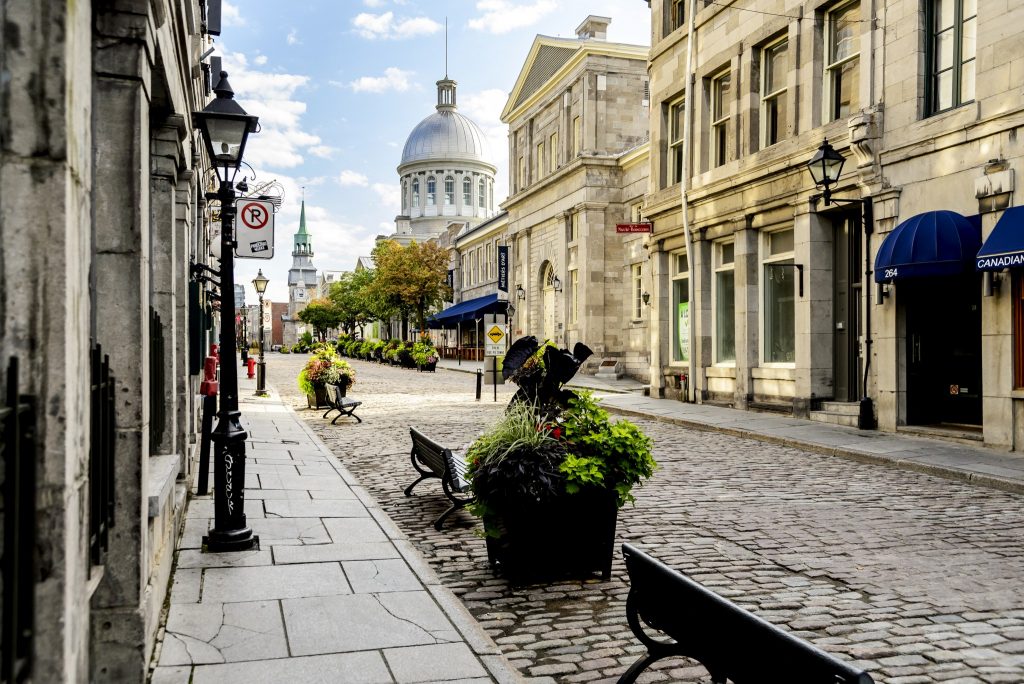
Central Canada is home to some of the nation's biggest cities, as well a delightful array of national and provincial parks. The terrain here is flatter (no towering mountains), but houses an abundance of gorgeous lakes and forests. Here's what the centre of the country has to offer:
- Historic sites and parliamentary buildings . Ottawa is home to parliamentary buildings, quaint historic streets, and the picturesque Rideau Canal (which you can skate on in winter). Québec is teeming with historic sites and cobblestoned streets – Québec City and Montréal being the best to wander.
- Trendy cities, eclectic art, and buzzing nightlife . Toronto and Montréal are rich in music, arts, and festivals. Both cities have plentiful bars and clubs for those seeking booze or a boogie. The Art Gallery of Ontario (AGO) in Toronto is a must for art lovers, as is Montréal's Museum of Fine Arts. Toronto's CityPASS and Montreal's Passporte MTL are great ways to see some of the top attractions in each city at a deep discount.
- Visit the world-famous Niagara Falls . 1.5 hours north of Toronto lies Niagara Falls. Each second, thousands of tonnes of turqouise water spills over Niagara's cliffs. Be warned, the entire immediate vicinity surrounding the falls is the epiphany of tourist tacky. Casinos, buffets, and the biggest selection of mini putt you've ever seen – you get the idea. That said, if you know what to expect, you can still have a tacky great time! A huge number of day tours from Toronto and within the Niagara region can be instantly booked on Viator and GetYourGuide .
- Taste and explore Niagara wine region . Counteracting the tackiness that is Niagara Falls is the splendidly serene Niagara wine region. Niagara-on-the-lake is a quaint Canadian town speckled with fudge shops, homemade goods like quilts and scarves, and adorable cafes. It's also a great base for exploring the region's plentiful vineyards. We recommend exploring with a wine tour so that you can safely taste all the wine you want without worrying about driving or getting from one winery to the next. If visiting wineries independently, a car or bike is recommended – local buses exist, but are sporadic. Here is also one of the few places on earth producing ice wine – a sweet, syrupy dessert beverage made from frozen grapes. It is divine!
- A taste of France in Canada . Québec was colonized by the French hundreds of years ago, and their influence has led to a uniquely French Canadian flair ever since. Montréal is a captivating city, and feels foreign even to resident Canadians with its cobblestoned streets and French cuisine (poutine and crepes are a must !). If visiting Montréal in winter, be sure to check our bucket list items here .

Canada's East is made up of New Brunswick, P.E.I., Nova Scotia, and Newfoundland and Labrador (the latter two names being a single province). A bite-sized east coast trip would include New Brunswick, P.E.I., and Nova Scotia. Newfoundland and Labrador is stunning, but more remote and pricier to get to and explore. This side of Canada offers red sand beaches, fresh seafood, and classic Canadian wildlife like moose and deer. Other eastern must-do's are:
- Witness the world's highest tidal change . The Bay of Fundy (in New Brunswick) is home to the world's highest change of tide – up to 17 metres (56 feet) tidal change takes place here. During each 12 hour tidal change, 115 billion tonnes of water flow in and out of the bay. This is also a good region for whale watching .
- Wander genuine viking settlements . An unknown fact to many is that Canada was in fact a settlement place for vikings as far back as 1,000 A.D. These can be visited in L'Anse aux Meadows, Newfoundland.
- Watch 10,000 year old icebergs bobble and crash . Newfoundland and Labrador are primely located south of the Arctic. Each spring, icebergs break off of ancient glaciers and hobble down what's known as “Iceberg Alley”. One can take tours to see them up close by boat.
- Visit fjord and waterfall filled national parks . Arguably reminiscent of Iceland, Newfoundland's Gros Morne National Park is a must-visit for this region. Endless stretches of fjords, fields, and stomach-churning cliffs are just some of the delights in this remote slice of Canada.
- Embark on one of Canada's best coastal drives . Nova Scotia's Cabot Trail is one of Canada's most impressive drives. The trail winds through Cape Breton National Park, alternating between oceanside stretches and moose-ladenl forests.
- Indulge in Canada's Gaelic culture . Having been inhabited by refugees from the Scottish Highlights centuries ago, Canada's east has a strong Gaelic influence that is still alive today. Watching a local Ceilidh (a show of string music and traditional dancing) is an absolute must.
Transportation
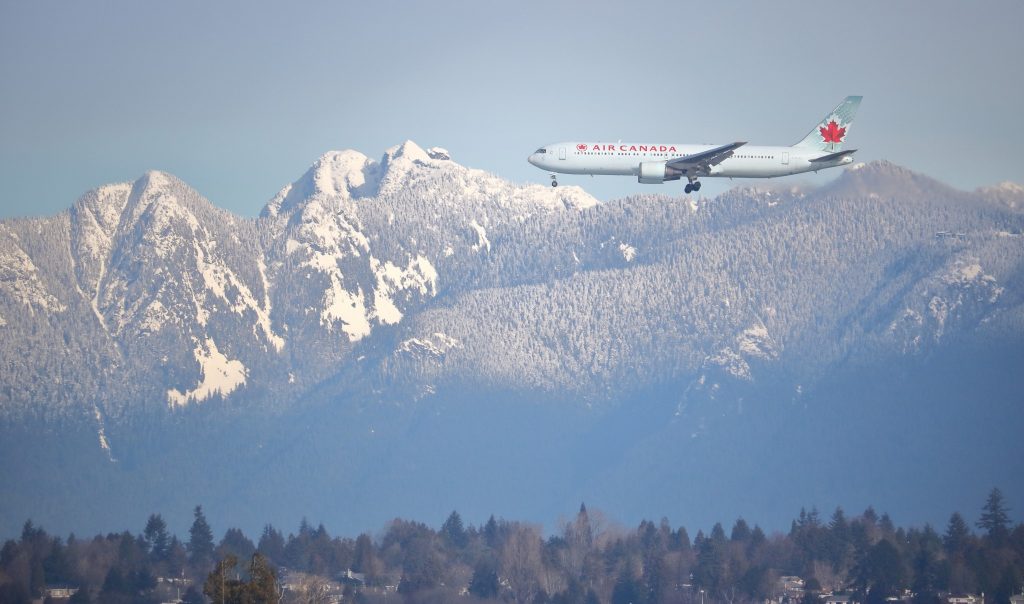
Flights to and within Canada are generally not cheap. We do not have budget airlines, and our airline taxes make tickets wildly expensive compared to other countries. Sale and error fares to/from Canada do exist – including to/from the United States – but this requires flexibility. Some international budget airlines, such as Spirit and WOW Air , are now offering international flights into Canada.
Where you fly into will depend on your route. Here's a quick breadown:
- West coast (i.e. “mountainous” Pacific region) : Start and end in Vancouver (British Columbia) or Calgary (Alberta).
- The Prairies : either Calgary (Alberta), Saskatoon (Saskatchewan), or Winnipeg (Manitoba).
- The North and Arctic Canada : Whitehorse (Yukon) is a great base for exploring both the Yukon and Alaska, as well as aurora spotting. Fly into Iqaluit (Nunavut) to explore the arctic. Yellowknife is best for explore the Northwest Territories and also aurora spotting, though most of these flights will require a connection via Calgary or Vancouver.
- Central Canada: Fly into Toronto (Ontario), which is also a good base for visiting Niagara Falls (can be done as a 1-2 day trip). Toronto is also a departure point for driving or flying to Ottawa, the nation's capital. For Canada's “European” region of Quebec, fly into Montreal.
- The East Coast (i.e. Atlantic): fly into Charlottetown (P.E.I.), Halifax (Nova Scotia), or St. John's (Newfoundland and Labrador). These may require connections if flying internationally.
If you're doing a big Canada trip, it could be cost-effective to book an open-jaw flight. If making several stops, Kiwi is great for constructing complex, multi-leg itineraries. To identify the cheapest dates to fly, we recommend Skyscanner and selecting “whole month” to visualize the month's pricing. For more tips, check our other flight booking hacks here .
Domestic Flights
Canada is well connected by (overpriced) flights. The somewhat “budget” airlines include Porter , Flair , and Air Canada's Jazz , though true bargain fares are rare.
If you are visiting more remote regions (e.g. Northern British Columbia, Yukon, etc.), these areas often have smaller, regional airlines only. As such, these do not always show up in major airline search engines, so be sure to always Google search for local airlines (e.g. “Yukon local airline”).
Car, Campervan, or RV Rental
Canada is one of the best places to explore by car. When planning a road trip, be generous with driving times and allocating days in your itinerary . The distances are long and the scenic stops plenty . If your days are too packed with no time for whimsical stops, you won't feel like you've really “seen” much of Canada at all!
Car rental pricing varies by season and demand. Upwards of $25 USD per day is standard for a compact vehicle. You're wise to book in advance (especially in summer) to at least “hold” a good rate if cancellation is free. We recommend BookingBuddy , which lets you compare many car rental sites in a single search. For more car rental hacks, check our other tips here .
An RV or campervan is an excellent mode of transport, given that it doubles as accommodation. This can be a major saver in tourist hotspots like Banff and Jasper (where many of Canada's famous glacial lakes and mountains are pictured). Keep in mind that bigger, grander RVs guzzle gas quickly. If you can split an RV or camper with friends or fellow travellers, you'll reduce your costs.
Outdoorsy pitches itself as the Airbnb of RV and campervan rentals, letting you book an RV direct from an owner for a fraction of the cost of a standard RV rental (which can easily cost thousands in daily rates, add-ons, and mileage). Insurance and 24/7 roadside assistance is included in all bookings. If you want to book an RV, Outdoorsy is one of the best options.
RV and campervan relocation deals exist in Canada, but are typically posted last minute (~2-3 weeks before the required departure date). Peer-to-peer RV sharing is another great way to reduce costs. Sites like Wheel Estate connect RV/campervan owners with those wishing to rent them when not in use.
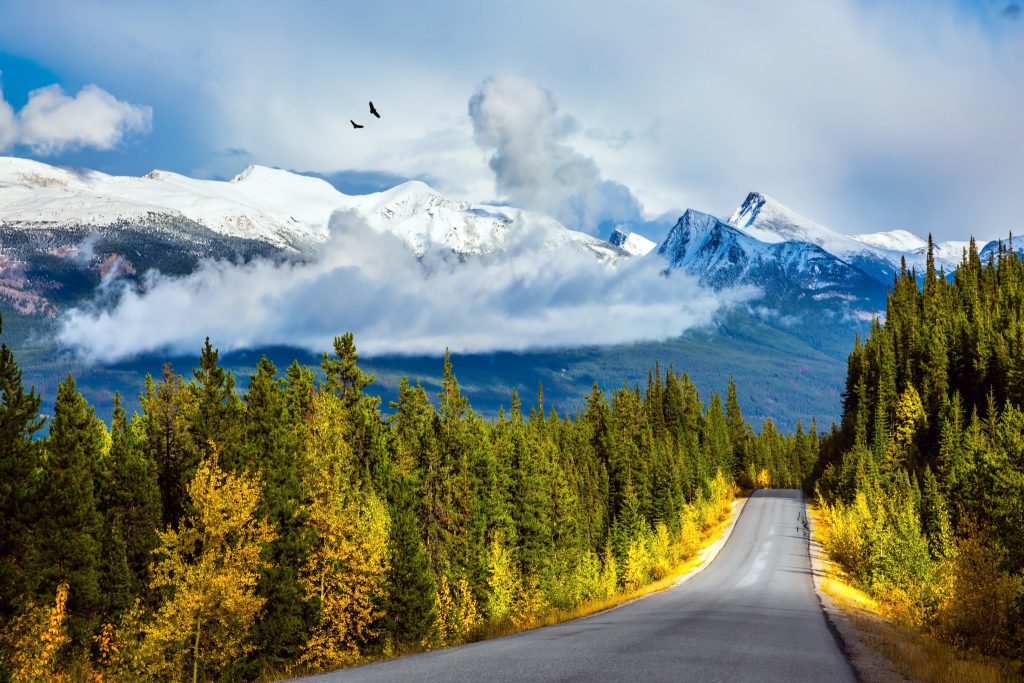
Regional buses connect much of Canada's small towns and cities. If you aren't renting a car, bus travel is typically your cheapest transport between cities and provinces.
Greyhound is the biggest bus operator in Canada, with routes in nearly every province and territory. Tickets purchased seven days in advance are reduced in price. Discounts for military, seniors, and students also apply.
STA Travel offers hop-on hop-off bus passes, providing greater flexibility at reduced cost. These include fixed small group tours, or a non-accommodated hop-on hop-off pass valid for 6 months.
Megabus is a low-cost bus carrier that is notorious for its low prices, but temperamental service. Arrival and departure times are spotty, and buses are sometimes overbooked. We highly recommend paying the small extra fee for reserved seating to ensure you get a spot. Megabus operates between Ontario, Quebec, and some U.S. cities. Coach Canada also runs routes around Ontario and select U.S. cities.
Canada's cross-country railway is one the most impressive train routes worldwide. Tourist and commuter routes are mainly operated by VIA Rail . VIA's most famed experience is the sleeper class trains, where the train cars' glass roofs provide full visibility to mountains, forests, and wildlife. This is a unique and breathtaking way to see Canada, with the hefty price tag to prove it.
Regular (non-sleeper class) trains are more affordable than domestic flights, but pricier than buses. Prices typically start at $31 USD for shorter one-way routes, upwards of $120 USD for longer ones. Tickets are sold in a tiered system, with basic economy as the lowest fare, up to business class. This means in order to get the best price, it's best to book in advance before cheap fares sell out. Concession rates exist for students with an ISIC card .
Every Tuesday, VIA Rail posts sale fares here (or sign up for their newsletter for a reminder). National and regional rail passes are also available, including 21-day and 60-day passes. These are pricey, but can be worthwhile for lengthier trips covering a lot of ground.
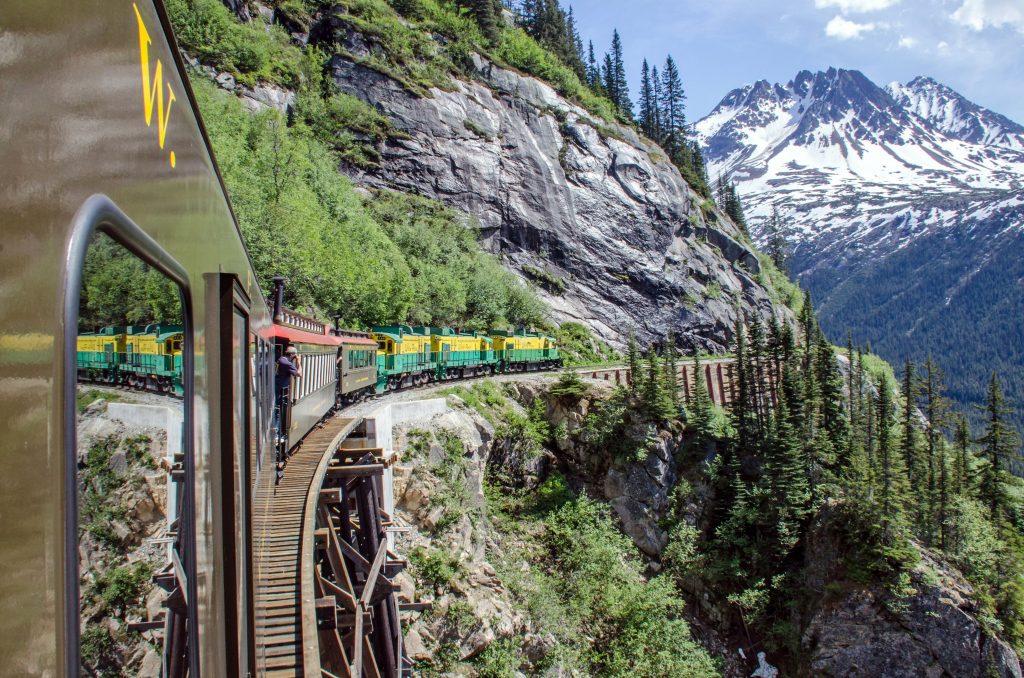
Public Transport
Public transit is available in most major cities and suburbs, with bus coverage at minimum. Major capital cities will have a more sophisticated network of subways or trains. Ride passes are often available and can provide better transit fares. For directions, Google Maps is linked up with public transport, or you can simply ask a transit worker for assistance and a map.
Taxis & Ride Sharing
Taxis are abundant in Canada, as is ride sharing. Ride share services like Uber are typically much cheaper, especially in cities with idling traffic like Toronto, Montréal, or Vancouver. Get $10 off your first ride with coupon code uberthriftynomads .
Bike sharing services are common in Canada's major cities, and can be a great way to create a DIY city tour. Simply pick up a bike from a docking station and return it to another one anywhere in the city.
Rental rates are around $4 USD per hour, though better fares apply for longer trips (e.g. 1-day use or a membership). The bike share services in Canada's major cities are:
- Montreal: Bixi
- Toronto: Bike Share Toronto
- Ottawa: VeloGo
- Vancouver: Mobi Bikes
Accommodation
Accommodation options and prices in Canada are somewhat comparable to Europe or Australia. Dorm beds are $20-$40 USD, camp sites $20-$40 USD, budget hotels ~$60-$100 USD (depending on proximity to city centre), and mid-range and higher hotels $130+ USD. Last minute deals do exist, but touristy regions will sell out and drive up rates in peak season (e.g. summer and winter). Broad hotel search engines like HotelsCombined and TripAdvisor will reveal most options.
Ways to Save
Book last minute.
If your schedule allows it and it isn't peak season, last minute hotel deals are a great way to save. These are often aggregated on apps and websites like HotelTonight or Hotwire . TravelZoo often does a nice roundup (“Top 20”) of hot deals, sometimes including higher end hotels in touristy regions. Another clever service is Roomer , which allows you to take over a hotel reservation of someone who no longer wants it, at a discounted rate.
Use sharing economy services
Sharing economy services like AirBNB are a great way to slash sleeping costs. AirBNB is plentiful countrywide, and arguably provides the best bang for your buck for accommodation. Private rooms typically cost less than a dorm bed if you are two or more people. It can even be used to find places (i.e. backyards) to camp in.
Housesitting is common in Canada, as is house swapping (check our how-to guide on these here ). This is a more feasible option for those with flexible travel plans, or if you can arrange a sit or swap before your trip date. Dog Vacay is a fairly new service which invites one to look after someone's pet in their own home, or the pet owner's home.
Many universities and colleges across the country will rent out dorm rooms when they are unoccupied in summer or during holidays. There are aggregate sites like University Rooms , or conduct a search via Google or TripAdvisor forums to check with locals' knowledge.
Craiglist and Kijiji are popular posting platforms for selling goods like sports equipment and clothing (perfect for picking up ski and camping gear for your trip), as well as listing rental accommodation and ridesharing. For a complete list of the types of sharing economy services out there, check out comprehensive post here .
Build meaningful connections
Canadians are famously friendly, and it's not uncommon for them to open their homes to travellers. Establishing a basic friendship is a good place to start. One can begin seek out connections via platforms like Twitter, Facebook groups, or websites like Reddit (look for sub-reddits in the city you're visiting, like Vancouver or Toronto ). Hostel dorms are also a great place to meet travellers who may happen to have connections in your country of visit.
Work in exchange for accommodation
If you're travelling long term, you can easily combine travel with work to reduce or eliminate accommodation costs. Firstly, you can work in hostel dorms in exchange for your bed. One of the most common work exchange programs is WWOOF – Willing Workers on Organic Farms. This service usually provides accommodation for free in exchange for work on farms, vineyards, and more, with additional pay sometimes included as well.
For other tips on how to work abroad while travelling, read our detailed guide here .
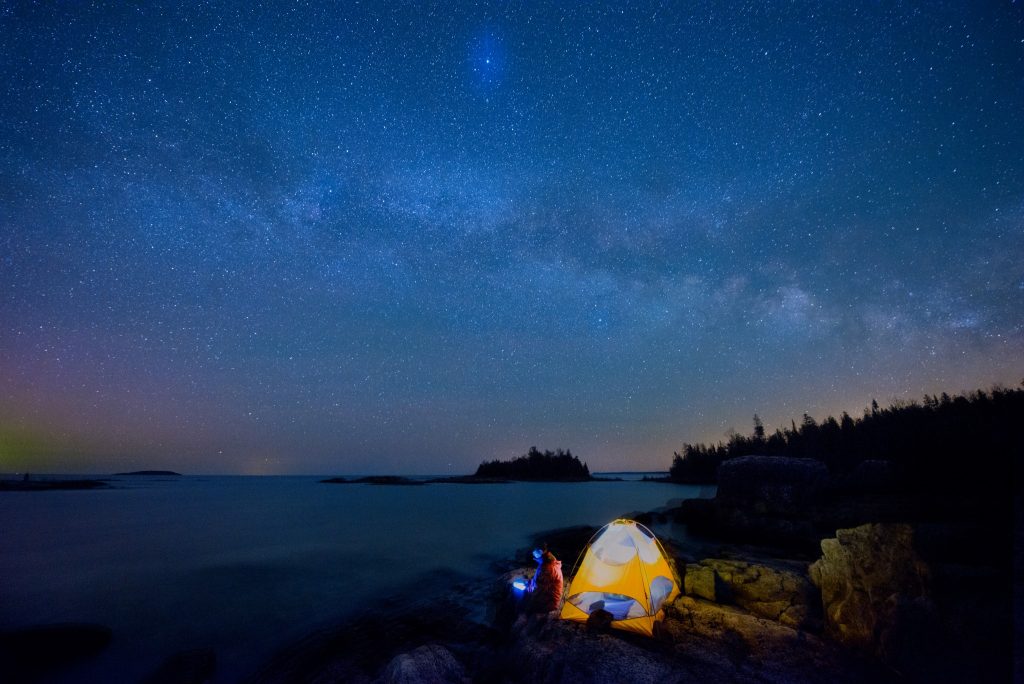
Camping in Canada is a rite of passage for any visitor. It's not only an easy way to sleep on a budget, but a great way to immerse yourself in our country's natural beauty. For 2017 only, all national parks have no admission charge, so this is the year to camp as much as you can!
If you want to reduce camping costs, there's a few ways to do so as park fees do add up. One option is to pay to camp at people's private properties via sites like Gamping . If driving an RV or campervan, it is an unwritten rule that Walmart allows travellers to park overnight in the back of their parking lots. You can also obtain a camping membership to get reduced rates across several sites. For a list of camping memberships, check this post here .
Activities & Tours
Canada has a wealth of cheap and free activities on offer. Sites like Groupon and TravelZoo can be useful for discounted activities, particularly touristy ones. In any city you visit, be sure to check for national parks, walking trails, and city parks as these are often cheap or free. Vancouver's Stanley Park is perhaps one of the most impressive city parks in the world, and it doesn't cost a dime!
Group tours can be a great for both day venturing or longer trips. Organized tours are often essential to visit particular sites, such as glaciers, boat tours, or historic sites.
Below is a list of some of the more popular tours to do in Canada. All these links allow you to book online with immediate confirmation:
- Niagara Falls Horn blower falls tour (Niagara Falls, Ontario): Book on GetYourGuide or Viator
- Orca (killer whale) watching (West Coast): Book on GetYourGuide or Viator
- Polar bear watching (Churchill, Manitoba): Book as a day tour , or as a package tour through TourRadar , G Adventures or Viator
- Northern Lights tours (Yellowknife, NWT and Whitehorse, Yukon): Book on Viator
- Wildlife tour through Jasper and Banff, Alberta (note: you can DIY this yourself, but those tight on time or not wishing to drive may prefer an organized tour): Book on Viator ( Jasper , Banff ) and GetYourGuide ( Jasper , Banff )

Food & Drink
Like America, fast food chains are the cheapest eats here. Tim Hortons is our national coffee chain, which serves up healthy-ish mediocre food. Bagels and cream cheese, light salads, sandwiches, and soups can all be bought for $2-$8 USD, while hot drinks range from upwards of $1.60+ USD.
Mid-range restaurants vary from $10-$20 USD per meal, and upwards of $20 USD for a nicer venue. Breakfast is often the best bang for your buck, especially at diners where small hot meals can range from $4 USD upwards. Lunch specials are common at restaurants, sometimes around the $8 USD mark. Dinner is most expensive to dine out for. Food trucks are common in some cities (e.g. Toronto, Vancouver, Calgary) and can offer quick cheap food options.
Keep in mind that menu prices do not include the provincial sales tax (8-13%) and a tip (15-18%, but only expected at sit-down restaurants). Groupon can be good for finding reduced restaurant prices, but cross-check reviews on TripAdvisor or Yelp before buying.
Prepping your own food is always cheapest, whether that means packing simple eats for breakfast (e.g. fruit and granola bars), or tortilla wraps with your simple choice of filling such as tuna or peanut butter. Farmers markets exist in most major cities, and can be great for stocking up on fresh produce and locally farmed eats.
The Thrifty Gist
- Canada is a big place. Choose only one or a few regions for your trip to cut costs (and flights). The less you fly, the more you'll save.
- Exploration by car (combined with camping) is a cheap, scenic alternative to flying.
- Visiting regions that are rich in natural beauty (e.g. West Coast) is a great way to reduce paid activities since free ones like hikes and parks are plentiful.
- Travelling in off season such as spring or fall can reduce prices, but also means more unpredictable weather.
- Dining out is not cheap – alternating between DIY meals and making breakfast or lunch your big meals out will slash costs.

Enjoy fast, free delivery, exclusive deals, and award-winning movies & TV shows with Prime Try Prime and start saving today with fast, free delivery
Amazon Prime includes:
Fast, FREE Delivery is available to Prime members. To join, select "Try Amazon Prime and start saving today with Fast, FREE Delivery" below the Add to Cart button.
- Cardmembers earn 5% Back at Amazon.com with a Prime Credit Card.
- Unlimited Free Two-Day Delivery
- Streaming of thousands of movies and TV shows with limited ads on Prime Video.
- A Kindle book to borrow for free each month - with no due dates
- Listen to over 2 million songs and hundreds of playlists
- Unlimited photo storage with anywhere access
Important: Your credit card will NOT be charged when you start your free trial or if you cancel during the trial period. If you're happy with Amazon Prime, do nothing. At the end of the free trial, your membership will automatically upgrade to a monthly membership.
Buy new: .savingPriceOverride { color:#CC0C39!important; font-weight: 300!important; } .reinventMobileHeaderPrice { font-weight: 400; } #apex_offerDisplay_mobile_feature_div .reinventPriceSavingsPercentageMargin, #apex_offerDisplay_mobile_feature_div .reinventPricePriceToPayMargin { margin-right: 4px; } -20% $23.26 $ 23 . 26 FREE delivery Tuesday, July 23 on orders shipped by Amazon over $35 Ships from: Amazon.com Sold by: Amazon.com
Return this item for free.
We offer easy, convenient returns with at least one free return option: no shipping charges. All returns must comply with our returns policy.
- Go to your orders and start the return
- Select your preferred free shipping option
- Drop off and leave!
Save with Used - Very Good .savingPriceOverride { color:#CC0C39!important; font-weight: 300!important; } .reinventMobileHeaderPrice { font-weight: 400; } #apex_offerDisplay_mobile_feature_div .reinventPriceSavingsPercentageMargin, #apex_offerDisplay_mobile_feature_div .reinventPricePriceToPayMargin { margin-right: 4px; } $18.54 $ 18 . 54 $4.49 delivery Friday, July 26 Ships from: Big River Books LLC Sold by: Big River Books LLC

Download the free Kindle app and start reading Kindle books instantly on your smartphone, tablet, or computer - no Kindle device required .
Read instantly on your browser with Kindle for Web.
Using your mobile phone camera - scan the code below and download the Kindle app.

Image Unavailable

- To view this video download Flash Player

Follow the author

The Rough Guide to Canada (Travel Guide with Free eBook) (Rough Guides) Paperback – December 6, 2022
Purchase options and add-ons.
Practical travel guide to Canada with a free eBook featuring points-of-interest structured lists of all sights and off-the-beaten-track treasures, with detailed color-coded maps, practical details about what to see and do in Canada, how to get there and around, pre-departure information, as well as top time-saving tips, like a visual list of things not to miss in Canada, expert author picks and itineraries to help you plan your trip. This guidebook has been fully updated post-COVID-19. The Rough Guide to Canada covers : Toronto, Ontario, Montreal and Southwest Quebec, Quebec City and Northern Quebec, The Maritime Provinces, Newfoundland and Labrador, The Prairie Provinces, The Canadian Rockies, The BC Interior, Vancouver and Vancouver Island, The North Inside this travel guide you'll find:
- RECOMMENDATIONS FOR EVERY TYPE OF TRAVELER Experiences selected for every kind of trip to Canada, from off-the-beaten-track adventures in Wonderstrand, Labrador to family activities in child-friendly places, like Vancouver and Whistler or chilled-out breaks in popular tourist areas, like Toronto.
- PRACTICAL TRAVEL TIPS Essential pre-departure information including Canada entry requirements, getting around, health information, travelling with children, sports and outdoor activities, food and drink, festivals, culture and etiquette, shopping, tips for travelers with disabilities and more.
- TIME-SAVING ITINERARIES Carefully planned routes covering the best of Canada give a taste of the richness and diversity of the destination and have been created for different time frames or types of trips.
- DETAILED REGIONAL COVERAGE Clear structure within each sightseeing chapter includes regional highlights, brief history, detailed sights and places ordered geographically, recommended restaurants, hotels, bars, clubs and major shops or entertainment options.
- INSIGHTS INTO GETTING AROUND LIKE A LOCAL Tips on how to beat the crowds, save time and money and find the best local spots for whale-watching, canoeing, skiing and hiking.
- HIGHLIGHTS OF THINGS NOT TO MISS Rough Guides' rundown of Toronto, Ontario, Montreal and Vancouver's best sights and top experiences helps to make the most of each trip to Canada, even in a short time.
- HONEST AND INDEPENDENT REVIEWS Written by Rough Guides' expert authors with a trademark blend of humor, honesty and expertise, to help to find the best places in Canada, matching different needs.
- BACKGROUND INFORMATION Comprehensive 'Contexts' chapter features fascinating insights into Canada, with coverage of history, religion, ethnic groups, environment, wildlife and books, plus a handy language section and glossary.
- FABULOUS FULL COLOR PHOTOGRAPHY Features inspirational color photography, including the stunning Jasper and the spectacular Niagara Falls.
- COLOR-CODED MAPPING Practical full-color maps, with clearly numbered, color-coded keys for quick orientation in Toronto, Ontario, Quebec City and many more locations in Canada, reduce the need to go online.
- USER-FRIENDLY LAYOUT With helpful icons organized by neighborhood to help you pick the best spots to spend your time.
- FREE EBOOK Free eBook download with every purchase of a printed book allows you to access all of the content from your phone or tablet, for on-the-road exploration.
- Print length 920 pages
- Language English
- Publisher Rough Guides
- Publication date December 6, 2022
- Dimensions 5 x 1.5 x 8 inches
- ISBN-10 1789198771
- ISBN-13 978-1789198775
- See all details

Frequently bought together

Similar items that may ship from close to you

From the brand
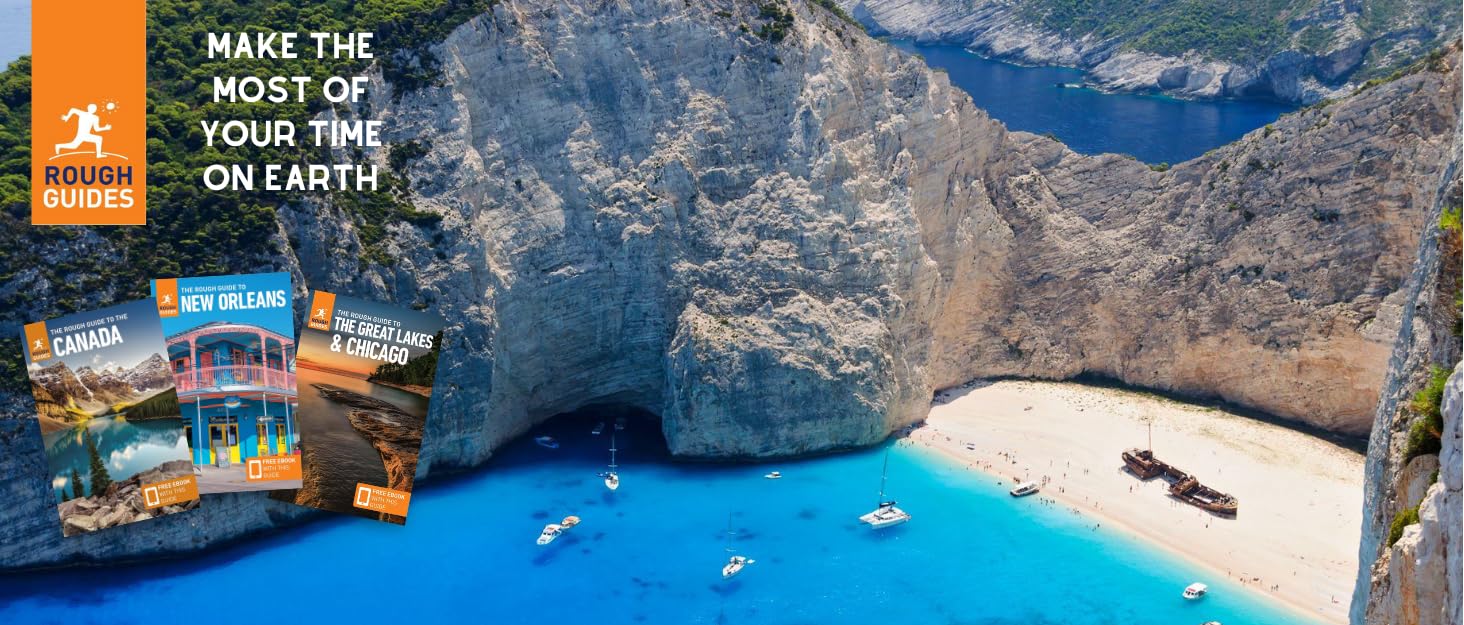
Rough Guides
Visit the Store

From the Publisher

Editorial Reviews
About the author, product details.
- Publisher : Rough Guides; 11th edition (December 6, 2022)
- Language : English
- Paperback : 920 pages
- ISBN-10 : 1789198771
- ISBN-13 : 978-1789198775
- Item Weight : 2.31 pounds
- Dimensions : 5 x 1.5 x 8 inches
- #16 in Quebec Travel Guides
- #61 in General Canada Travel Books
- #555 in Tourist Destinations & Museums Guides
About the author
Escape the everyday with Rough Guides.
Rough Guides is a leading travel publisher known for its “tell it like it is” attitude, accurate, up-to-date content and authoritative contemporary writing. We publish books covering more than 120 destinations around the globe, producing an ever-growing series of ebooks and a range of reference titles, with an award-winning website.
Since 1982, our books have helped over 35 million travellers explore the world with accurate, honest and informed travel writing.
---------------------------------------
• INSPIRATIONAL GUIDES
Stylish picture-packed inspirational books that make great gifts.
• ROUGH GUIDES
Classic in-depth 'Tell it like it is' guidebooks covering cities, regions and countries.
• ON A BUDGET
Guidebook bibles for budget-conscious travellers.
• FIRST TIME
Everything you need to know before you go.
• POCKET GUIDES
Compact practical guidebooks for short-trip travellers.
• WALKING GUIDES
Compact practical guidebooks tailored to trekkers and walkers.
• PHRASEBOOKS
User-friendly, pocket-sized phrasebooks.
Now we offer a personalised trips of a lifetime with unique adventure
Find your own path with Rough Guides tailor-made trip - roughguides.com
Customer reviews
Customer Reviews, including Product Star Ratings help customers to learn more about the product and decide whether it is the right product for them.
To calculate the overall star rating and percentage breakdown by star, we don’t use a simple average. Instead, our system considers things like how recent a review is and if the reviewer bought the item on Amazon. It also analyzed reviews to verify trustworthiness.
- Sort reviews by Top reviews Most recent Top reviews
Top reviews from the United States
Top reviews from other countries.
- Amazon Newsletter
- About Amazon
- Accessibility
- Sustainability
- Press Center
- Investor Relations
- Amazon Devices
- Amazon Science
- Sell on Amazon
- Sell apps on Amazon
- Supply to Amazon
- Protect & Build Your Brand
- Become an Affiliate
- Become a Delivery Driver
- Start a Package Delivery Business
- Advertise Your Products
- Self-Publish with Us
- Become an Amazon Hub Partner
- › See More Ways to Make Money
- Amazon Visa
- Amazon Store Card
- Amazon Secured Card
- Amazon Business Card
- Shop with Points
- Credit Card Marketplace
- Reload Your Balance
- Amazon Currency Converter
- Your Account
- Your Orders
- Shipping Rates & Policies
- Amazon Prime
- Returns & Replacements
- Manage Your Content and Devices
- Recalls and Product Safety Alerts
- Conditions of Use
- Privacy Notice
- Consumer Health Data Privacy Disclosure
- Your Ads Privacy Choices

- Create an account / Login
Travel reviews
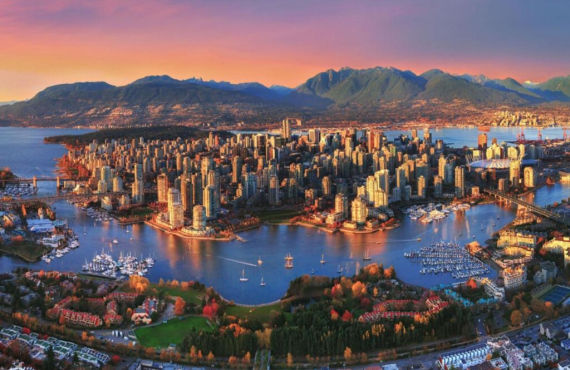
- Worth the detour

There is no need for a car in Vancouver. This is a city that is best explored on foot or by bike, at your own pace. For this reason, Vancouver is a perfect location to start or finish a Western Canada road trip .
Stanley Park
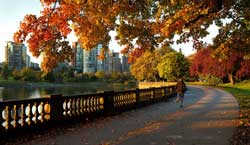
Stanley Park teems with an amazing variety of wildlife. At least 500 species are known to live in the park. Some of the must-see landmarks: Lost Lagoon , Hollow Tree and Siwash Rock .
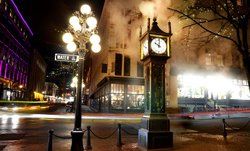
In other words, Gastown is the trendiest neighbourhood in Vancouver ! A must-see for art and culture lovers.
Vancouver Aquarium

Museum of Anthropology

The cutting-edge temporary exhibitions focus on arts and culture from around the world . Allow at least two hours for a good look at everything on offer!
Granville Island
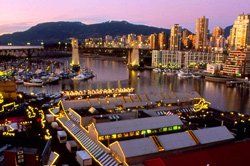
The island boasts many restaurants, bars, theatres, artists' studios and craft boutiques. With its wide range of local produce and products, the Granville Island Public Market is the perfect place to prepare your picnic lunch!
Robson Street and Broadway Avenue
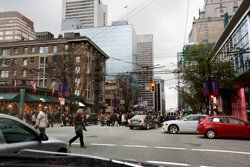
In fact, two well-known Canadian brands originated in these areas of Vancouver a number of years ago: Mountain Equipment Co-op (MEC) , Canada's largest supplier of outdoor equipment, and Aritzia , an innovative women's fashion boutique.
FlyOver Canada
Take an exhilarating 6,000-km journey across Canada, from east to west, discovering some of the country's most spectacular and iconic locations without ever leaving Vancouver! The film is projected on a 20-metre spherical screen . Special effects , including wind, mist and scents, combine with the ride’s motion to create an unique, unforgettable experience.
Capilano Suspension Bridge

Within this park, Treetops Adventure takes guests of all ages more than 30 feet above the forest floor on seven suspension bridges attached to old-growth Douglas fir trees!
Capilano River Hatchery
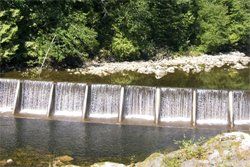
This free activity is educational and very popular with the kids.
Grouse Mountain
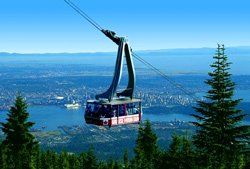
Not to mention the gruelling 2.9-kilometre Grouse Grind Trail , an invigorating workout for seasoned hikers!
Optional activities
- Dinner cruise in Vancouver
- Guided tour of Vancouver
- Stanley Park Guided Tour by Bike
- Capilano Suspension Bridge
Where to eat
- $ Inexpensive
- $$ Moderate
- $$$ Upscale
- $$$$ Fine dining
Maenam ($$)
Maenam is one of Vancouver's best Thai restaurants, offering refined, beautifully-presented, authentic cuisine prepared using the best seasonal and local ingredients. The menu includes familiar classics like the sweet and sour tom kaa soup, curries and pad Thai . Wine, beer and cocktail menu is also avalable.
Salmon N’Bannock ($$-$$$)
British Columbia is known for its high quality wild salmon! This small restaurant showcases Aboriginal cuisine with a range of menu items inspired by a variety of First Nations culinary tradition. The homemade bannock, or flatbread, is one of the house specialties!
Bao Bei ($$-$$$)
This cozy, modern Chinese brasserie is a far cry from the Chinese restaurants of old. You will be charmed by the fresh ingredients, friendly staff, trendy atmosphere and the impeccable presentation. In a city that has long embraced Chinese cuisine as part of its culinary heritage, Bao Bei exemplifies the changing face of Chinatown.
L’Abattoir Restaurant ($$$)
The restaurant was built in the 19th century on the site of Vancouver’s first jail. The French influenced West Coast fare is prepared and served with flare for a unique dining experience. A meat-lover's paradise!
Blue Water Cafe & Raw Bar ($$$$)
Blue Water Cafe is the ultimate fine dining experience for lovers of fresh seafood. This warm and inviting restaurant offers impeccable service and an abundance of the freshest seafood, prepared in a multitude of ways: sushi, oysters, caviar, fish, and so much more. The menu also includes meat and vegetarian options. Wine-lovers take note, they carry over 1,000 labels and have a cellar of 14,000 bottles!
Where to sleep ?
- Pan Pacific Vancouver Hotel
- Fairmont Waterfront
- Coast Coal Harbour Hotel
- Best Western Sands
- Century Plaza Hotel
- Georgian Court Hotel
- Accent Inns Vancouver Airport
- Radisson Blu Vancouver Airport
Festivals calendar
Dragon boat festival.
Dates: late June
Dragon boating is quickly becoming a favourite pastime in Vancouver, a city that is a natural haven for water sports. The annual Dragon Boat Festival attracts over 100,000 people and close to 180 dragon boat teams from the area and around the globe.
Festival d’été francophone
Date: mid-June
Founded in 1990, the Festival d’été francophone is one of the most important francophone cultural and musical events in Western Canada.
Vancouver International Jazz Festival
Vancouver comes alive to the sound of jazz music of all kinds during this internationally renowned music festival as the world's best jazz, funk, Latin, fusion, & world music artists perform at venues across the city. There are many free outdoor concerts in addition to paying concerts.
Vancouver Folk Festival
Dates: mid-July
This annual three-day festival features folk music from around the globe, performed in a beautiful outdoor venue. One of Canada's most popular folk music festivals, it attracts some 30,000 folk music fans every year and features 30 to 40 concerts on eight outdoor stages.
Celebration of Light Fireworks Festival
Dates: end of July
Celebration of Light is an international musical fireworks competition. Competing countries light up the sky with spectacular fireworks, carefully synchronized to music. Whether you watch it from the shore or from a boat out on the water, this festival is a delight for all ages.
Pride Vancouver
Date: early August (Pride Parade)
Like Montreal, Toronto and many other big cities across the globe, Vancouver celebrates diversity. A week of festivities culminates in a flamboyant parade stretching along two kilometres of city streets and attracting close to half a million spectators and participants.
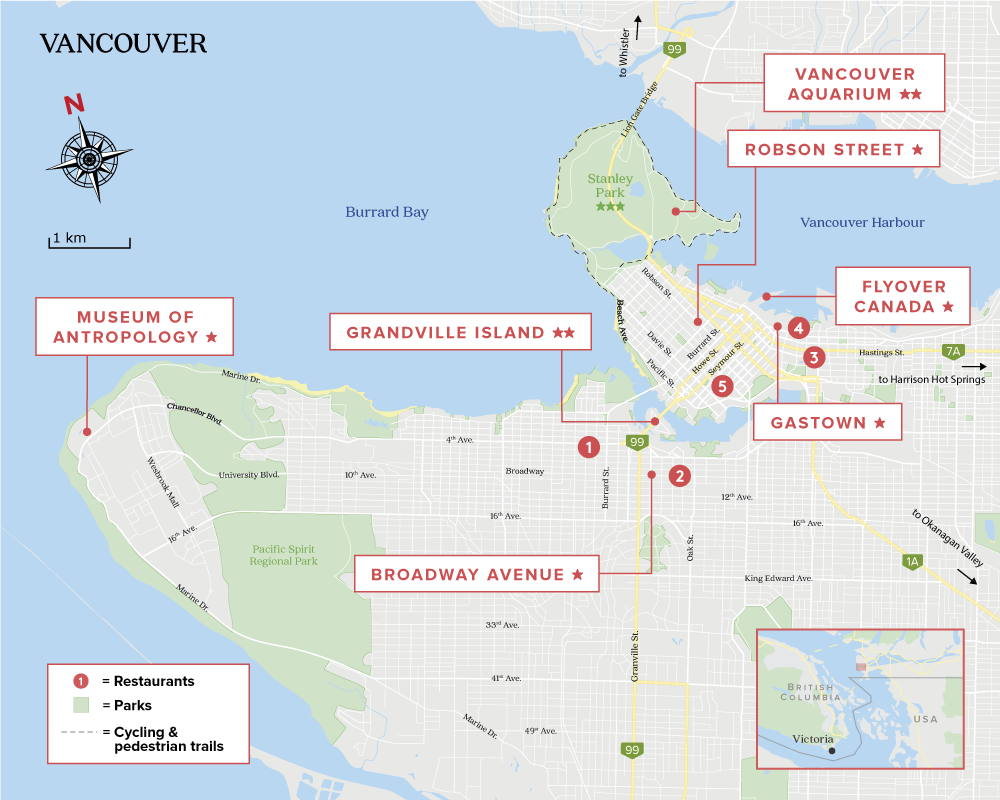
When to visit
- Very Favourable
- Unfavourable
Nice city but busy. Would be good to spend more time there
Lovely, but avoid gastown, download our travel guide.
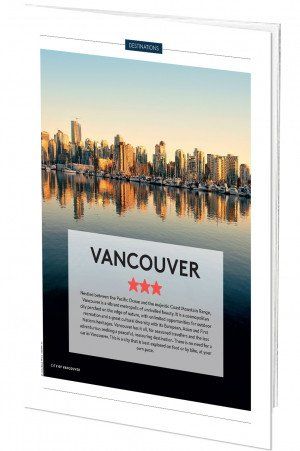
Relevant posts
The best western canada tour, top 5 canadian road trips, western conquest, indian summer, the west by rv, legendary landscapes, authentik travel blog, visit niagara falls in 24 hours, lac-des-cygnes hike (the ultimate guide), the best road trip to experience indian summer, quiz about quebec, top 5 sugar shacks in quebec, visiting ontario in 10 must-see places, renting a cottage in quebec: top 10 canadian cabins, hike to waber falls in la mauricie national park [with map + photos], bonaventure island cruise: our practical guide, canada travel: 5 tips for a successful trip, visiting wells gray park in british columbia: the complete guide, best 7-day road trip in quebec, visit halifax: our 10 must-see attractions, all-inclusive travel to canada: our expert advice, 10 must-see photo spots in toronto, electric car rental in canada: the complete guide, the 5 best places to go dog sledding in quebec, the best 10-day east coast of canada road trip, top 5 luxury hotels in quebec, hiking the acropole-des-draveurs trail, authentic quebec: gems to visit during indian summer, top 5 parks to visit in quebec during indian summer, campervan rental in canada: 3 tips to save big bucks, top 10 romantic spots in canada, the best vancouver island road trip, lake agnes tea house hike in banff (the complete guide), the best 10-day itinerary in canada, how to plan your canada road trip, visiting montreal: top 10 things to do, how to ruin your trip to canada in 5 easy steps, top 10 most beautiful landscapes in western canada, top 10 instagram spots in western canada, best quebec tour for families, montreal neighbourhoods: which ones are a must, top 5 lakes in the canadian rockies, 5 iconic photo spots in old quebec, the best 2-week road trip for exploring quebec and ontario, yoho national park: the complete travel guide, top 10 winterscapes in quebec, travel to canada: all the entry procedures, free trip to western canada... in 10 photos, the best van road trip in quebec, where to eat in quebec city , top 5 places to enjoy the colours of indian summer, top 10 places to canoe in quebec, van rental in canada: the 5 best #vanlife models, top 10 most beautiful lakes in quebec [with map + photos], the 5 most beautiful parks in western canada, how to use the google maps gps offline while travelling , western vs eastern canada : which to choose , 10 things to do in western canada before you die, where to eat in niagara falls , the 10 most beautiful sunsets in canada, what to pack for a trip to canada, vancouver island travel guide, the saint-félicien wild zoo from a to z, top 5 most beautiful waterfalls in western canada, 5 ideas to entertain the kids on a canada road trip, the best 2-week quebec road trip, reopening of canada's borders: a how-to guide, top 10 hikes in the canadian rockies, how much does a trip to canada cost in 2022, the ultimate western canada rv road trip, what to do if you encounter a bear , the best 10-day itinerary in the canadian rockies, top 10 most beautiful fall landscapes in quebec, 5 fall activities to enjoy the indian summer, how can you protect yourself from ticks and lyme disease, the complete guide to gaspésie national park, the complete guide to whale watching in tadoussac, the complete guide to vancouver's stanley park, what to do in sandbanks, 5 good reasons to opt for an rv for your family road trip, arrivecan : everything you need to know, the quebec beer route, where to sleep in montreal , travel to quebec for cheap : 5 tips to save big bucks on your trip, visit ottawa in 24 hours, the ultimate quebec family road trip, what souvenirs to bring back from canada, travel to canada and covid-19: everything you need to know, cell phone and internet in canada, northern lights: when and where to see them, visit quebec city in 2 days, how to stay protected from mosquitoes while in canada, 5 must-do winter activities in quebec, quiz on canada, banff : johnston canyon trail (the complete guide), visit vancouver in 2 days, 20 best photo spots in montreal, icefields parkway between banff and jasper [the ultimate guide], what to do in case of an unexpected problem while travelling in canada, visit victoria in 24 hours, 5 hair-raising adventures in quebec, top 5 hikes in western canada, 5 national parks to discover in quebec, 10 things to do in canada... before you die, the ultimate western canada road trip, visit montreal in 2 days, rv rental in canada: 5 tips to save big bucks, 5 good reasons not to visit western canada in 2020, top 4 must-sees on vancouver island, the 7 wonders of western canada, the ultimate gaspésie road trip, top 5 quebec whale watching cruises and tours, top 10 most beautiful villages in western canada, car hire in canada : 5 tips to save big bucks, 10 must-see attractions in jasper national park, thousand islands : the must-sees for a 24h visit, top 10 scenic routes in western canada (with maps + photos), how do i get an electronic travel authorization (eta) for canada, the ultimate quebec rv road trip, top 10 most beautiful lakes in western canada, top 10 attractions in banff national park, visit toronto in 24 hours, the ultimate maritimes road trip, 5 tips for finding the cheapest flight to canada, travel guide to the canadian rockies.
- Today's deals
- Search travel guides

Canada Featured Articles
Canada popular cities, canada guides.

Current language
All languages.


Canada Travel Guide
Looking for an in-depth Canada travel guide ?
Then you’re in the right place!
As North America’s northernmost country, Canada usually falls behind its neighbors to the south, the United States and Mexico in the rankings of top travel destinations.
There is so much more to this huge and diverse country than snow, maple syrup, and nice residents — although folks are actually very nice!
From glaciers to waterfalls to world-class cities, Canada has something for every kind of traveler. With so many options, you should definitely add some Canadian travel to your bucket list.
Canada’s national parks are some of the most beautiful in the world and preserve Canada’s diverse environment for all to enjoy.
For instance, Gros Morne National Park is the gem of Newfoundland. Located on the island’s west coast, the park features a cliff-lined freshwater fjord, gorgeous wildflower-covered mountains, and colorful fishing villages. With tons of trails open year-round, it’s a paradise for hikers in the summer and cross-country skiers in the winter.
Canada is also home to one of the largest national parks in the world, Wood Buffalo National Park. Stretching from Alberta into the Northwest Territories, the park is the perfect place to peep some of Canada’s most iconic animals like moose, eagles, and bears.
And you can’t miss the Canadian Rockies on display at the famous Banff National Park! Read on to learn more about this top park.
Major cities like Toronto, Vancouver , and Montreal are considered some of the top places to visit in Canada for their diverse cultures and amazing attractions. But if you’re looking to avoid the crowds and save a little cash, consider visiting some of the country’s smaller cities.
Quebec City on Canada’s east coast was founded in 1604 and offers a beautiful peek into French Canadian culture. From quaint streets lined with gorgeous little shops to historic buildings like Chateau Frontenac to museums celebrating the art and culture of Quebec, there’s something for everyone here.
And for nature lovers, Jacques-Cartier National Park is just a short drive away for your hiking and snowshoeing pleasure. It’s also a great place to start a French Canadian road trip along the St. Lawrence River.
Keep reading to dive into resources that will help you with planning a trip to Canada in North America .
Note: This ultimate Canada guide contains affiliate links to trusted partners!

Use this Canada tourism map to begin planning your trip to this incredible country!
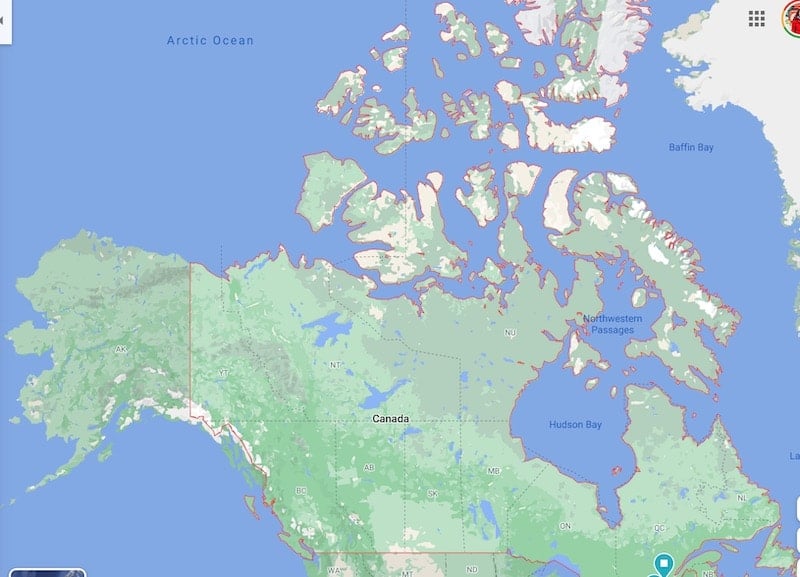
Click here for an interactive Google Map version of the above graphic.
Alberta Travel Guide
These Alberta tourism guides can help you plan the Canada travel itinerary!
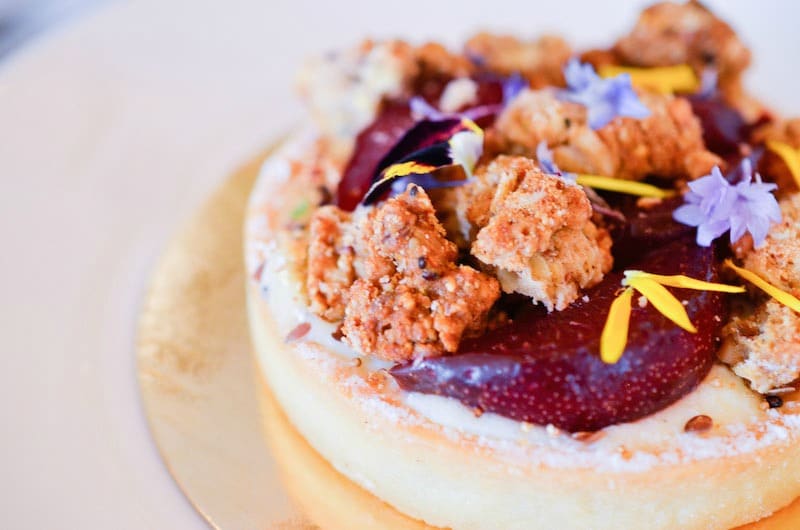
10 Offbeat Reasons Why Edmonton Should Be Your Next Trip
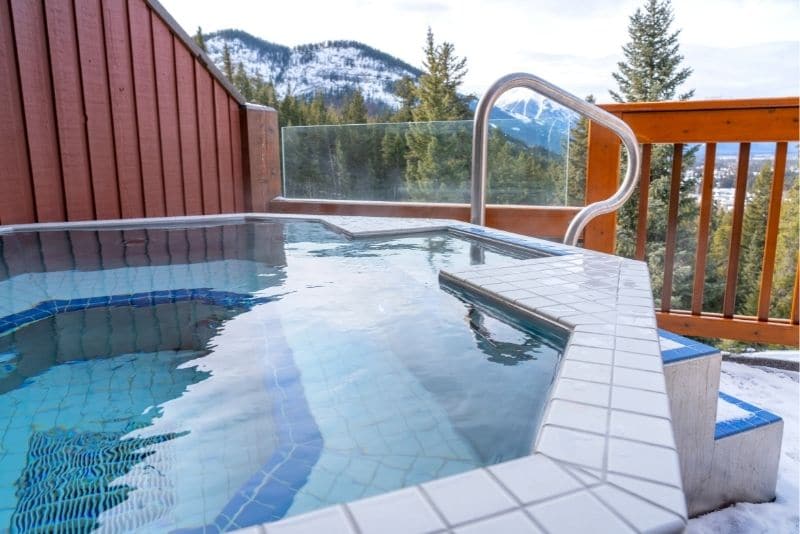
14 Amazing Hotels In Banff With Private Hot Tubs
British Columbia Travel Guide
These British Columbia tourism guides can help you plan the perfect Canada trip!

10 Unique Experiences In Victoria BC (Beyond Butchart Gardens)
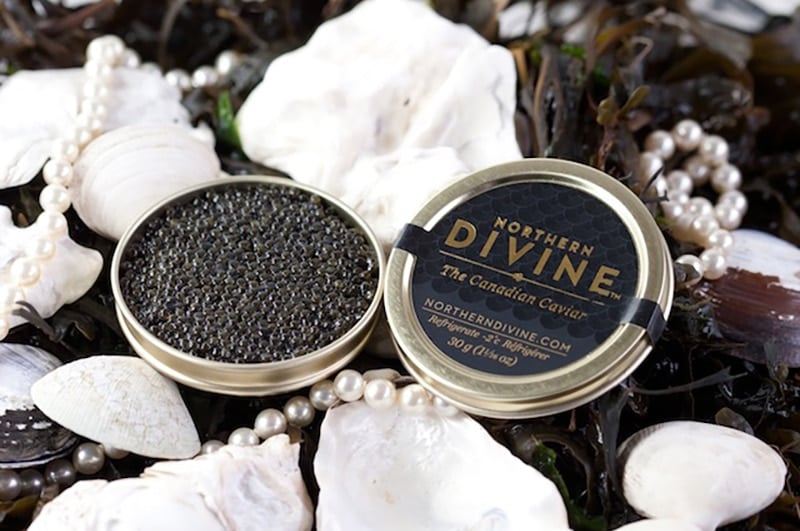
Organic Caviar Tasting On British Columbia’s Sunshine Coast
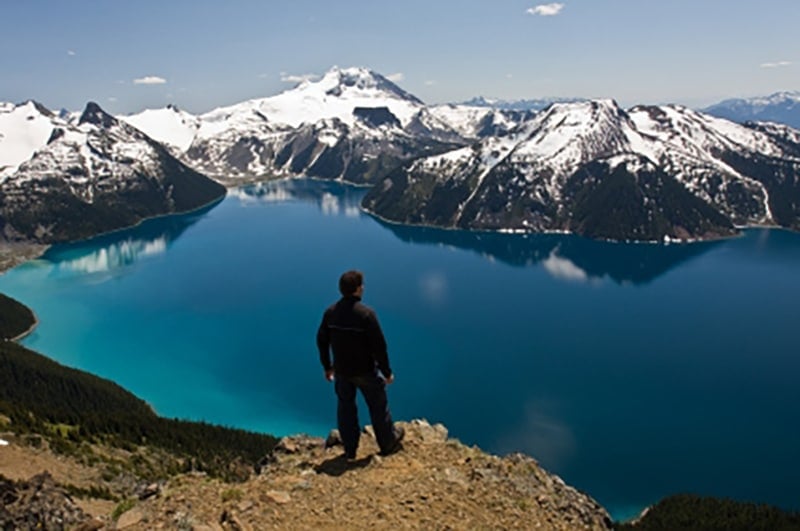
7 Can’t Miss Outdoor Experiences In Whistler

Traveler’s Guide To Vancouver On A Budget
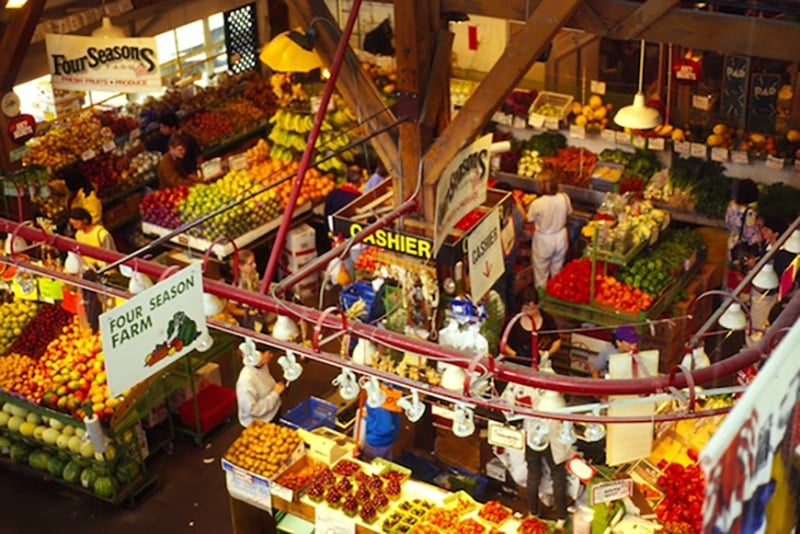
Quirky Vancouver: A Visit To Granville Island
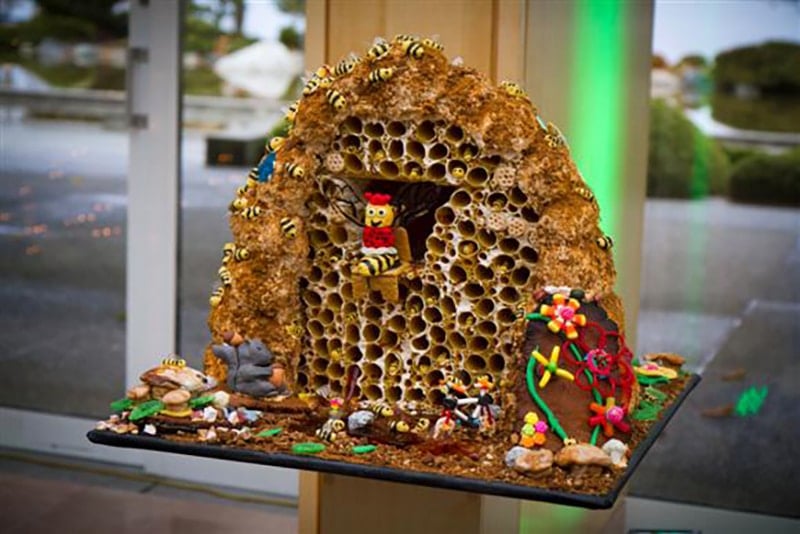
Canada’s National Gingerbread Competition Brings Sweet Offerings To British Columbia
Ontario Travel Guide
Plan an unforgettable trip to Ontario with the help of the following guides!
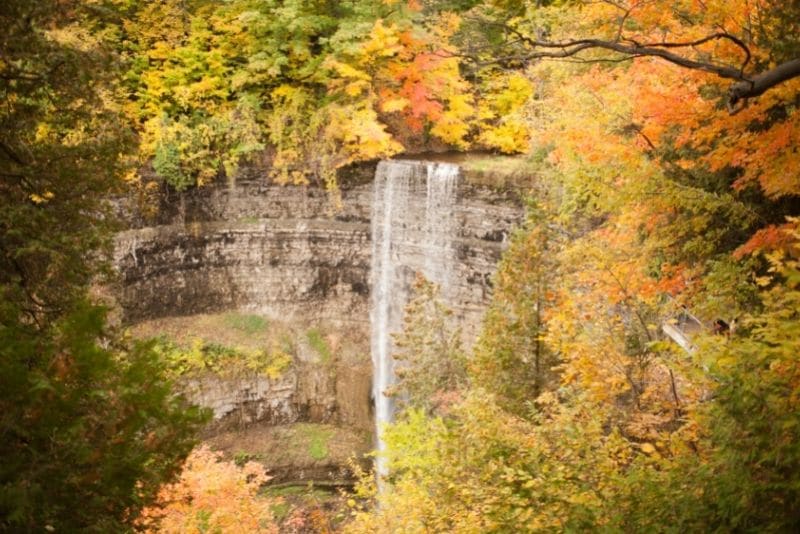
12 Best Places To Hike Near Toronto For Amazing Scenery
Quebec Travel Guide
These Quebec tourism guides can help you plan the perfect trip to Canada!
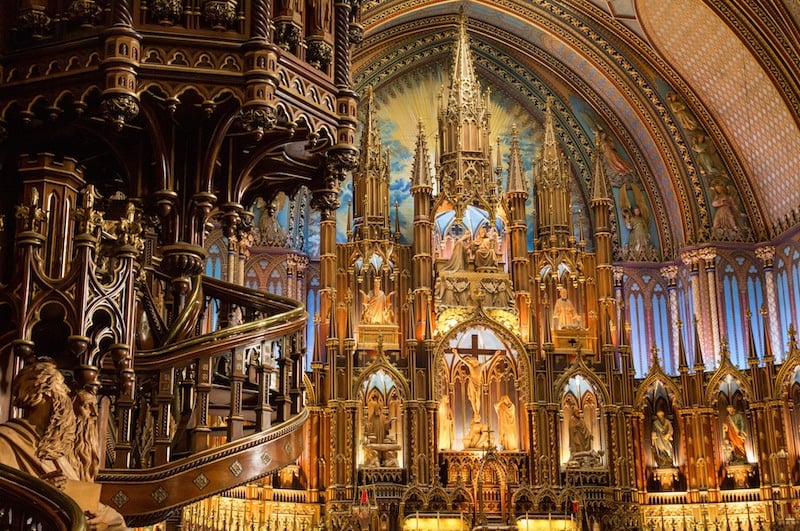
Tips For Exploring Montreal On A Budget
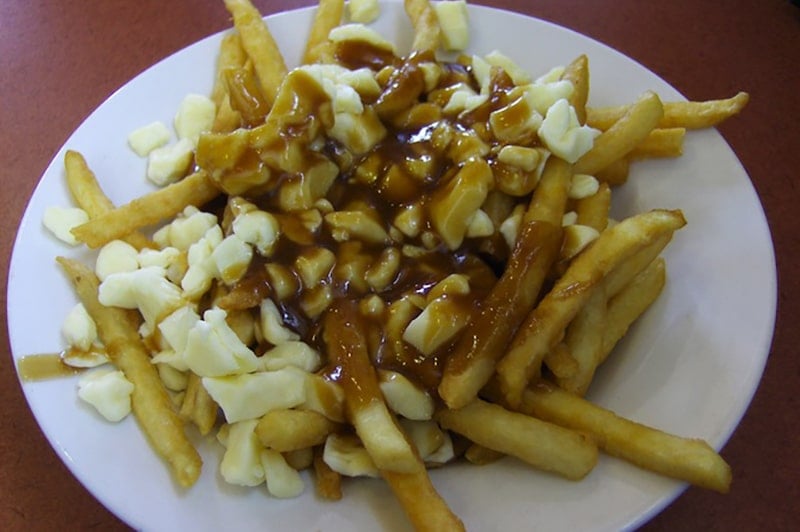
Solo Travel, Local Culture & Unique Things To Do In Montreal
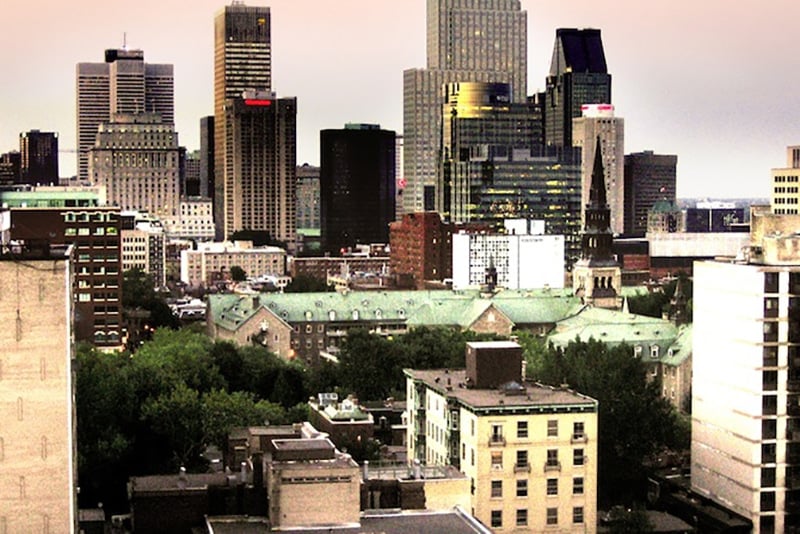
Traveler’s Guide To Montreal
Best Canada Tours
Explore local culture with a Canada tour guide through these unique excursions:
- North Shore Day Trip from Vancouver: Capilano Suspension Bridge & Grouse Mountain from Vancouver
- Fundy Coast to Fundy Shore Tour from Saint John in New Brunswick
- Northern Lights and Huskies from Whitehorse
- Valley Wine Tour from Halifax, Nova Scotia
- Tundra Buggy Autumn Day Tours with Polar Bear viewing from Churchill
- Niagara Falls in One Day: Deluxe Sightseeing Tour of American and Canadian Sides from Ontario
- Mountain Lakes and Waterfalls Day Trip from Banff
- Victoria Whale Watch Tour with Views of Vancouver Island from Victoria
Renting A Car In Canada
Need a rental car for your Canada trip?
Use Discover Cars to quickly compare your car rental options.
Public Transportation In Canada
Getting around Canada by train, bus, or ferry?
Omio is a must! You can use this tool for all of your public transportation needs when traveling around Canada.
The site is straightforward and user-friendly — and you can pre-book your tickets in advance at a discount.
They even offer flight and car deals!
Canada Hotels
Click here to browse the best Canada travel hotels!
Prefer self-contained stays?
Click here to check out unique local rentals!
You can also use this map to search for local stays:
Canada Travel Insurance
It doesn’t matter if you’re traveling solo or with a group on a Canada tour. When visiting Canada — or any other country in the world — make sure to get travel insurance to protect your health and safety.
In my opinion, the best travel medical insurance for travelers is SafetyWing as they’ve got a large network and offer both short-term and long-term coverage — including coverage if you’re traveling for months as well as limited coverage in your home country).
Additionally, SafetyWing is budget-friendly and offers $250,000 worth of coverage with just one low overall deductible of $250.
With coverage, you’ll have peace of mind as you embark on your Canada travel itinerary.
Click my referral link here to price out travel insurance for your trip in just a few clicks .
Canada Travel Guide FAQ
Below, find answers to frequently asked questions about traveling in Canada .
Q: What is the best month to travel to Canada?
Canada is a huge country with a wide range of climates, so the weather will not necessarily be the same everywhere you go.
That said, fall is considered one of the best times to visit Canada. While temperatures are cooler than they are in the summer, it’s still quite comfortable across the board. The fall foliage also makes for some incredible views.
Summer is considered Canada’s peak season as the weather is much warmer; temperatures range between 77 and 86 degrees Fahrenheit.
Canada’s winters make it a top destination for winter sports but they are not for the faint of heart. Temperatures can drop to 0 degrees Fahrenheit during the winter months.
Q: What is the cheapest way to travel across Canada?
The cheapest way to travel across Canada is probably by car. Car rentals are fairly affordable and having your own set of wheels will give you the flexibility to travel wherever you want. Plus, you can use DiscoverCars to easily compare rental prices and save up to 70%.
Buses are an easy and inexpensive way to get around Eastern Canada but sadly there is no one nationwide bus system.
VIA Rail, Canada’s train system, offers scenic coast-to-coast service but fares can get pricey. However, if you plan to travel, head to Omio to find and book tickets to destinations all across Canada.
Q: Is Canada expensive to travel?
How much does a Canada trip cost? That depends on your destination.
You’ll generally spend more on food, accommodations, transportation, and other travel expenses in big cities like Toronto, Vancouver, and Montreal.
Smaller cities like Quebec City and more rural destinations are usually a bit more budget-friendly.
The average traveler spends about $145 USD per day in Canada.
Q: What are the best things to do in Canada?
Canada’s most popular attractions are definitely its natural wonders.
Niagara Falls, which sits on the border of New York and Ontario, brings in millions of visitors every year who come to marvel at one of the largest waterfalls in the world. You can take a ferry and get drenched by the mist coming off the falls or climb down to explore the caves behind the water.
There are also plenty of attractions to experience on the Canadian side of the falls, like butterfly conservatories, the 235 meter-tall Skylon Tower, and the gorgeous 1800s-style village of Niagra-on-the-Lake in Niagara County .
On the western side of the country, the Canadian Rockies draw in tons of hikers and climbers.
The breathtaking snow-capped mountains and gorgeous turquoise lakes of the Rockies are on display at Banff National Park in Alberta. The 2,564 square mile park has so much to explore at any time of year. It’s also a top destination for winter sports and is home to some of the country’s top ski resorts. Plus, there are a number of epic hotels in Banff with private hot tubs .
If you’re looking for a city getaway, Toronto has plenty to explore. Check out views that extend into New York state (on clear days, of course) at the CN Tower, a 553-meter 360 degree observation tower in the city center. You can also find some amazing hiking trails near Toronto .
Browse the collection at the Art Gallery of Ontario, one of the largest art museums in North America.
And you can’t leave without seeing a show in the Entertainment District, home to theatrical productions that rival those on Broadway and London’s West End! It’s truly a top North America tourism experience!
Q: How many days do you need for Canada?
Since Canada is such a huge country, you’ll need a bit more time to get the full Canadian experience.
You can do a decent cross-country road trip with stops in cities like Toronto, Calgary, and Vancouver in two weeks. If you want a shorter, more in-depth tour, stick to one area of the country, like Quebec and Ontario in the east or Alberta and British Columbia in the west.
Either way, you’ll want to factor travel times into your itinerary, especially if you’re driving between destinations.
Q: Is Canada safe to travel?
In general, Canada is very safe to visit and crime rates are low — though, of course, it is always smart to pack travel safety gear and to understand how to avoid pickpockets , especially in touristy areas.
If you’re exploring the outdoors, make sure to research local wildlife and how to stay safe in the wilderness. Canada is home to a number of animals — like the Grizzly Bear and Prairie Rattlesnake — that are amazing creatures but that are not friendly to humans.
Q: How long can a tourist stay in Canada?
Most visitors from abroad can stay in Canada for up to six months.
Q: Do I need a Canada travel visa?
While it varies by country, travelers from the United States, the EU, Australia, and several other countries do not need a visa to visit Canada for a period of fewer than 180 days.
It’s recommended to view your country’s Canada International Travel Information page for the most up-to-date information on entry and exit requirements. You can also contact the Embassy of Canada.
Q: Where is Canada?
Canada is the northernmost country in North America.
It is bordered by the Atlantic, Pacific, and Arctic Oceans, as well as the United States in the south.
It is the second-largest country in the world by total area.
Q: Are credit cards accepted in Canada?
Credit cards — particularly Visa and Mastercard — are widely accepted around Canada, though it is always wise to carry some cash for smaller establishments and in case of emergency.
Q: Can you drink the tap water in Canada?
While tap water is safe to drink in most places in Canada, it’s smart to check with the hotel in your specific destination to be safe.
Q: What is the local currency in Canada?
The local currency in Canada is the Canadian dollar (CAD).
What would you add to this Canada travel guide?

Enjoyed this ultimate Canada travel guide? Pin it for later!
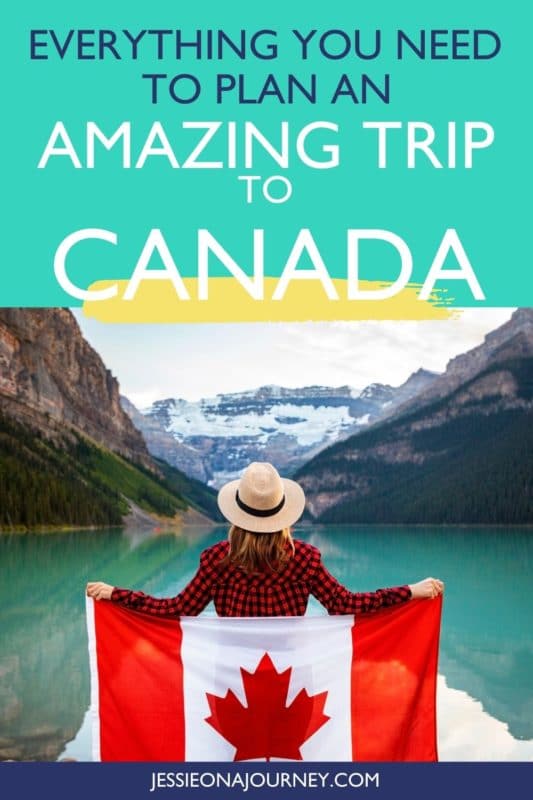
USPS suggests the address below
Time to upgrade your browser.
If you're reading this, you're surfing using Internet Explorer 6, an eight-year-old browser that cannot cope with the demands of the modern, secure internet. For the best web experience, we strongly recommend upgrading to Firefox , Opera , Safari , Google Chrome , or a more recent version of Internet Explorer .

- Canada Destinations
- Visit Other States
- Visit Other Countries

But a short trip away from Banff and Jasper National Parks, Calgary is a fine urban center in which to base for easy bar access, a glimpse of Olympic sights and other assorted attractions.
- Things To Do - Overview
Tour Companies
- Tourist Attractions
- Attractions
- Scenic Drives
Free Travel Planners
- Houseboating
- RV Parks Camping
- Skiing - Boarding
- White Water Rafting

- Lodging - Hotels, Resorts, etc.
- RV Parks - Campgrounds

Use our easy Lodging Search to find exactly the type of accommodation you are looking for at the right price.
- Free Visitor Guides!
Transportation
- Tourism Resources

- Canada Photo Gallery

Below are the Free Visitor Guides for Canada Area. Click here to view all the guides avialable for Canada.
Select All General Interest Guides

Bellingham Whatcom County Canadian Border
Bellingham whatcom county.
To request a free visitor guide from Canada Travel Guide , please fill out the form below and click "Submit".
Your request has been processed, thank you!
We also have visitor guides available in states highlighted in blue below. Click on any state to see what's available.
- Connecticut
- Development
- Massachusetts
- Mississippi
- New Hampshire
- North Carolina
- North Dakota
- Pennsylvania
- Rhode Island
- South Carolina
- South Dakota
- Washington D.C.
- West Virginia
Canada Travel Guide
A comprehensive vacation and recreation guide.
The Go Canada Travel Guide and Vacation Planner is your best resource to provide complete and accurate information on the thousands of sightseeing attractions, tourist destinations, hotels, resorts, RV parks, and recreational activities. Our travel guide contains thousands of pages of travel, vacation, and recreation information to help you plan your trip.
Your dream vacation, recreational activities and travel opportunities within Canada are only a few clicks away...

Places To Go
Destinations - all, quebec city, sunshine coast / whistler, vancouver - canada, things to do, things to do - all, sightseeing, recreational activities, houseboat rentals, travel planning, rv parks + camping, photos + video.
- Advertising
- Privacy Policy
- Report a Problem
- Make A Suggestion

- Go Travel Sites
- Houseboating.org
Email Page Link
Switch to Mobile Browser Mode
We offer a compact version of Go-Canadatravel for mobile users, allowing you to access just the information you need on the road. Of course, you can still use the full version of Go-Canadatravel on your mobile device just as you can on your desktop.
Continue to Mobile Site Return to Main Site
AAA TourBook ® Guides
The travel information you trust, reimagined for on-the-go., find your next getaway with the tourbook guides, available for destinations across north america and the caribbean..

Since 1926, AAA members have trusted the travel information in AAA's free TourBook guides to help them plan their most memorable vacations, whether it's a cozy romantic escape, a fun family vacation or an adventure-filled trip with friends.
What you'll find in every TourBook:
- City overviews
- Must-see attractions
- Sample itineraries
- AAA Diamond hotels
- “Book Now” buttons to reserve your hotel room with AAA rates
- Nearby road trips and scenic drives
Our Travel Editors and AAA Inspectors
Our travel editors find the attractions you don't want to miss, including those designated AAA GEM (Great Experience for Members) attractions. Editors have even created sample 1-day itineraries to help you make the most of your trip.
Our AAA inspectors evaluate hotels across the U.S., Canada, Mexico and the Caribbean. They check for quality, amenities and cleanliness, and they designate each hotel according to the AAA Diamond Program. Diamond designations are based on the level of amenities you can expect at each property, so you know that no matter the Diamond level, you can be confident that every AAA Diamond property has passed a rigorous, in-person inspection and is Inspected Clean.
Select a TourBook guide below and begin planning your next adventure today!

Alaska and Canada

Mexico & Caribbean

I've been to all of the Canadian provinces. Forget Ontario — these are the 3 you really must visit.
- I've been to all of Canada's provinces. Ontario is great, but there are less-visited spots I love.
- I loved seeing the Earth's mantle in Gros Morne National Park in Newfoundland and Labrador.
- Cycle Prince Edward Island has beautiful scenery, and Vancouver Island has a lovely coastline.

Canada is pretty massive. The country spans almost 4,700 miles from east to west, touches three oceans, and hosts six different time zones.
Fortunately, I've been able to visit all 10 of its provinces. But with so many options, I know it can seem overwhelming to choose where to explore next .
Although I enjoyed learning and experiencing what makes each province unique, a few places stand out — and they aren't in Ontario, Canada's most visited province .
Here are the three Canadian provinces I loved visiting, plus highlights I experienced there that'll make you want to plan a trip to each.
Explore the Earth's mantle and freshwater fjords in Gros Morne National Park in Newfoundland and Labrador.
Humans tread on the Earth's crust, but it's not every day that you experience the second component below it, the mantle. But in the Tablelands in Gros Morne National Park , parts of the Earth's mantle are exposed — and visitors get a rare chance to admire this distinct structure without any digging.
When I explored the south end of this UNESCO World Heritage site , the rust-colored terrain made me feel like I was on Mars. I loved learning about the local carnivorous pitcher plants and feeling the texture of the rusty rocks.
There, I opted to take a guided group walk along the Tablelands Trail that's just under 5 miles out and back.
After walking on the mantle, I headed north of the park to visit Western Brook Pond. This freshwater fjord was carved thousands of years ago by retreating glaciers, and it's nothing less than breathtaking.
I took a guided boat tour through the fjord and learned all about it. If you want a panoramic view of it, take the day to hike to the top of the Western Brook Pond Trail.
British Columbia is Canada's second-most-visited province for a reason.
British Columbia is an adventurer's playground with impressive natural beauty. It's hard to get bored of the beautiful Pacific coastline and legendary old-growth forests.
Johnstone Strait, a glacier-carved channel between mainland British Columbia and Vancouver Island, is especially beautiful — and you might even see a humpback whale in the water if you visit at the right time.
One of my favorite experiences on the province's Vancouver Island is kayaking around the shores in the morning. I watched Steller sea lions glide through the water, and a river otter play on a nearby dock.
Once you're done with the water, venture along to visit some of the nearby picturesque communities like Telegraph Cove and Hanson Islands. Or perhaps find your footing and try the Haddington Beach Trail (just under 2 miles out and back) or the Salmon River Estuary Trail (under a mile out and back).
While there, I suggest learning about the area's diverse ecosystem — and there's perhaps no one else better to teach you than members of the Tlowitsis Nation , a group acknowledged as being among the first to originally live on this stretch of land.
Taking time to learn about Indigenous cultures in the area and booking experiences through Indigenous tour guides can also enrich your trip, allowing you to learn the history of the land you're visiting and why it's so important to protect it.
Take in the scenery while cycling along Prince Edward Island's numerous trails.
Prince Edward Island is famous for its potatoes, red-sand beaches, and picturesque countryside.
There are just over 20 supervised beaches on the island, and the red sand is due to the soil's rich iron content, which gets oxidized (turns reddish) as it touches the air.
Instead of admiring the area by car or on foot, my family and I have enjoyed exploring it by bicycle. Biking allowed us to slow down, be present with where we were, and get a taste of the laid-back island lifestyle.
We chose to peddle along the Confederation Trail, which stretches tip-to-tip of the island and covers about 278 miles. It helped us connect to special towns like Cardigan, where we visited Canada's smallest library.
The Confederation Trail has labeled stretches that range from easy to hard, so you can choose your own cycling adventure . If you're looking for a strenuous trail, I recommend gearing up on the Gairloch or O'Leary Mountain Bike Trail.
But if you're not confident in your cycling skills, consider taking a guided ride or renting an e-bike to help you go the distance.
- Main content
Press Herald
Account Subscription: ACTIVE
Questions about your account? Our customer service team can be reached at [email protected] during business hours at (207) 791-6000 .
Ossipee Valley Fair, Moxie Festival and more happening this weekend
The Maine International Film Festival starts Friday in Waterville.

You are able to gift 5 more articles this month.
Anyone can access the link you share with no account required. Learn more .
With a Press Herald subscription, you can gift 5 articles each month.
It looks like you do not have any active subscriptions. To get one, go to the subscriptions page .
Loading....
Now that we’re all comfortably settled into the rhythm of summer, let’s do a classic summer thing and go to a fair!
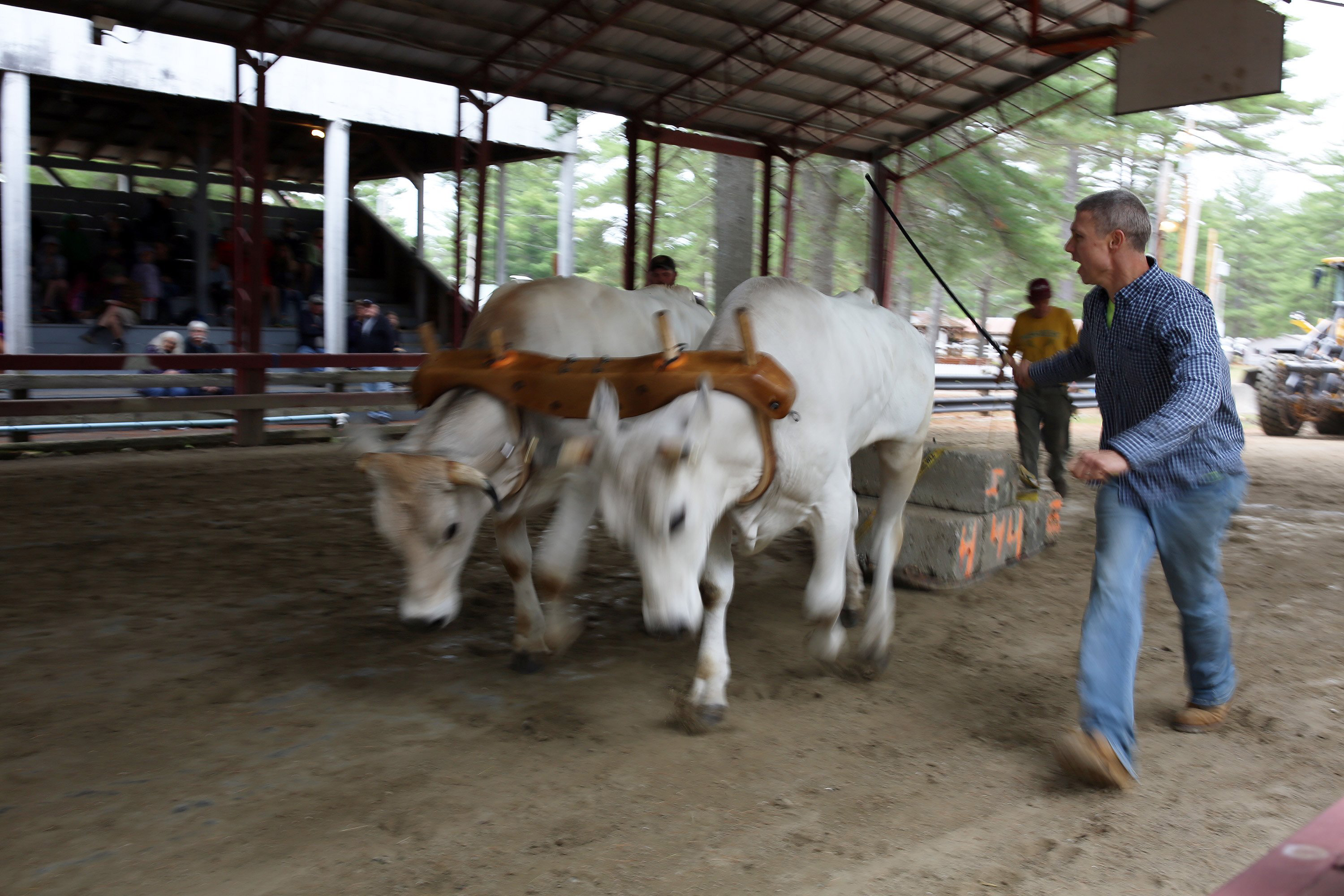
Jeremy Schoff of York leads his oxen, Pete and Red, during the ox pull on Thursday at the Ossippe Valley Fair in 2021. Ben McCanna/Staff Photographer
The Ossipee Valley Fair starts today and runs through Sunday. We especially love the Farmer Olympics because the hay bale toss and blind wheelbarrow obstacle course competition is fierce. Ray Routhier has details about Ossipee Valley and several others fairs happening this summer in Bangor, Waterville and Acton, among other locales.
Go a little farther afield and find a Maine summer fair for you

Aretha Aoki & Ryan MacDonald (right, in bear suit) performing IzumonookunI (stet capital letter at the end). Aretha Aoki & Ryan MacDonald will be bringing this dance program to the Bates Dance Festival July 12 and 14, 2024 at the Schaeffer Theatre on the Bates College campus in Lewiston, Maine. Photo by Colin Kelly
Another summer tradition is the Bates Dates Festival in Lewiston . Performances are underway, and arts writer Megan Gray has the scoop on “IzumonookunI” by Aretha Aoki and Ryan MacDonald. See it tonight and Saturday.
Topsham couple’s Bates Dance Festival performance is inspired by kabuki, punk rock and their 7-year-old
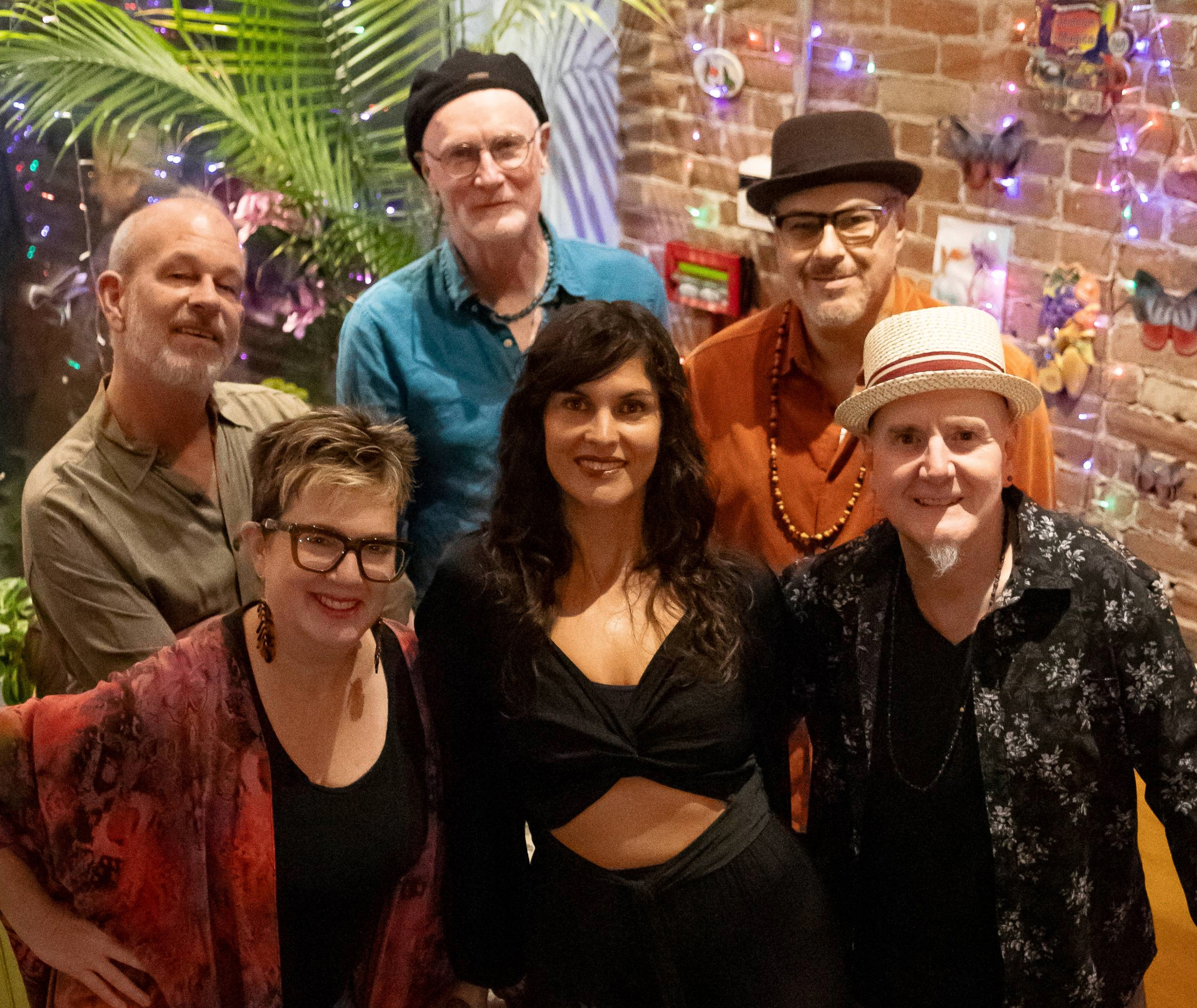
Big Yellow Taxi. Photo by Julian Parker Burns
I’m headed to One Longfellow Square on Friday night to see the Massachusetts-based Joni Mitchell tribute band Big Yellow Taxi. They’ll be playing Mitchell’s 1974 album “Court and Spark,” along with other tunes.
Tribute to Joni Mitchell celebrates 50 years of ‘Court and Spark’
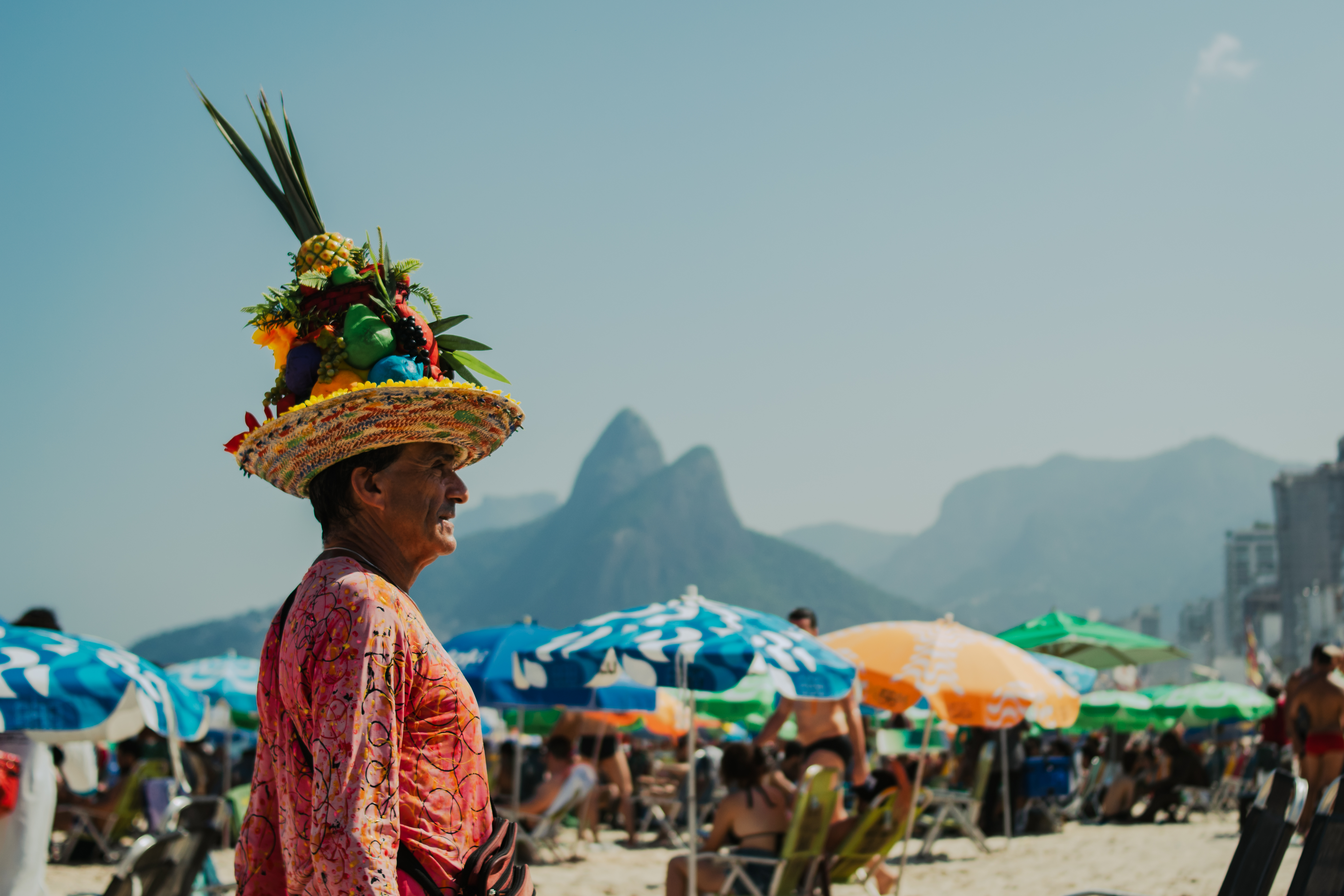
“3 Vendors of Ipanema” is directed by Lewiston native Jonathan S. Lee. Courtesy of JSL Films
We weren’t kidding when we said there’s a lot going on right now. The 27th annual Maine International Film Festival starts on Friday and runs through July 21 in Waterville. Our film writer, Dennis Perkins, offers up his picks for 12 screenings worth your while.
12 hidden gems of this year’s Maine International Film Festival
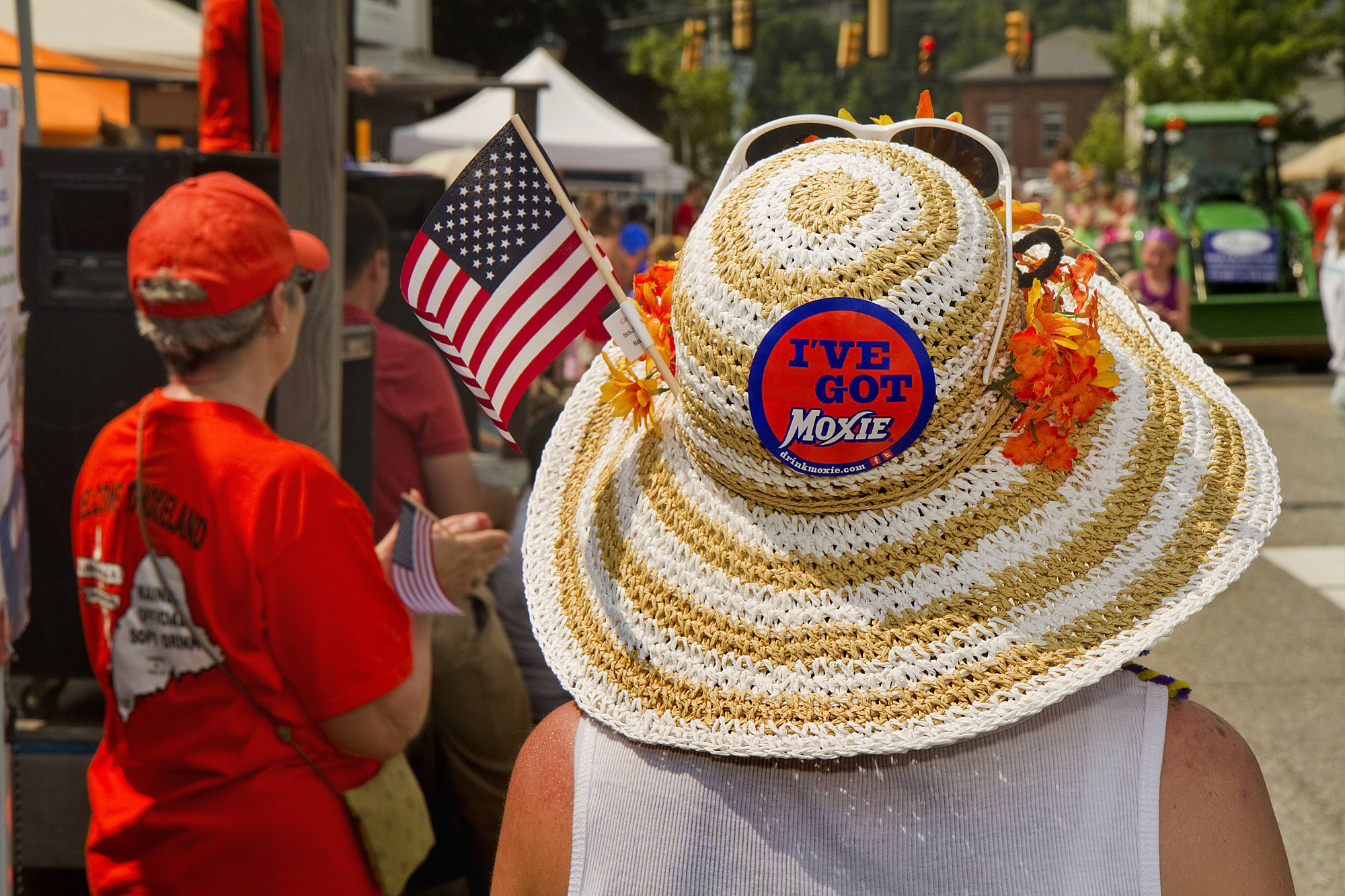
Spectators watching a previous year’s Moxie Festival Parade in Lisbon Falls. Carl D. Walsh/Staff Photographer
Our weekly events roundup includes the East Bayside block party in Portland and the Moxie Festival in Lisbon Falls. Should you make it to the festival on Saturday, don’t miss “American Idol” alum Julia Gagnon singing at 1:30 p.m.
Kennebunks garden tour, Moxie Festival, East Bayside block party

One with Everything from Gunnar’s Icelandic Hot Dogs. Photo by Ray Routhier
Need a break from standard-issue hot dogs? We love them too, but sometimes a new twist is just what your taste buds need. Ray Routhier stopped by Gunnar’s Icelandic Hot Dogs cart . If you like what you read, you can find it parked from 4-9 p.m. Thursday at Apres in Portland, then on the roof of Bayside Bowl on Friday and Saturday evenings.
Sick of red snappers? Try an Icelandic hot dog instead
Modify your screen name
Join the Conversation
Please sign into your Press Herald account to participate in conversations below. If you do not have an account, you can register or subscribe . Questions? Please see our FAQs .
Your commenting screen name has been updated.
Send questions/comments to the editors.
Member Log In
Please enter your username and password below. Already a subscriber but don't have one? Click here .
Not a subscriber? Click here to see your options

IMAGES
COMMENTS
View all FAQs on Canadian travel. Download this free Canada travel guide and get great road trip ideas. What to do, where to eat, destination by destination. Download and print the pdf book for free or receive it by mail. Brought you by Authentik Canada, a road trip travel specialist based in Canada.
Canada is a large, diverse country with a lot going for it, but most tourists are drawn to a few of the same things: Nature — Canada is one of the most beautiful countries in the world, full of picturesque forests, mountains, and lakes that make it a fantastic place for camping, hiking, or just wandering around and admiring.
Most of the time, they will be happy to send you travel information free of charge. DESTINATION CANADA. Destination Canada, the Canadian government's official tourism website, offers a host of information to help you plan your trip to Canada: travel guides, places to go, things to do, souvenir wallpapers, etc. NATIONAL PARKS (Parks Canada) The ...
Canada Travel Guide. Last Updated: April 29, 2024. Canada is a massive, stunning country filled with friendly people, diverse cities, and unique landscapes. Spanning over 9,000 kilometers (5,600 miles) from the icy tundra of the Yukon to the rocky beaches of the east coast, the Great White North is a country that has something for everyone.
Consult this free tourist guide to plan your trip to Toronto. Written by local Authentik Canada travel agents, the Toronto travel guide includes the following information: when to visit, what to do and the best attractions to visit, places to eat, a map and suggested itineraries in Toronto, travel reviews, photos, a promotional video from the Toronto tourist office, a PDF tourist guide you can ...
Free Canada Travel Guides & Maps The links below will take you to online order forms for free travel guides, vacation planning kits, official province highway maps, and special brochures. To order, simply click a link and then enter your name and address on the form that appears. It's that easy.
Free Travel Guides: A listing of our best and most useful travel guides, to help you plan a independent and cautiously adventurous trip! ... Canada & USA: Montreal, Quebec City, Calgary, Vancouver, Toronto the Canadian Rockies, Hawaii, Seattle and Portland (Oregon)
Here are the basics of travel to Canada. CAPITAL: Ottawa. OTHER MAIN CITIES: Quebec, Toronto, Vancouver, Montreal, Calgary, Edmonton. CURRENCY: Canadian dollar (See current exchange rates) ELECTRICITY: In Canada, the standard voltage is 120 V, while the standard frequency is 60 Hz.
Budget: You can find a number of budget hotels and hostels for around 20-65 Canadian Dollars. Enjoy dorm-styled or private rooms, common areas, shared kitchens, free Wi-Fi, and easy access to city or scenic locations. Mid Range: For mid-range hotels, expect to pay 100 to 200 Canadian Dollars per night.
A 7-day Canada itinerary including Montreal, Quebec City, and Saguenay-St-Lawrence Marine Park allows you plenty of time to explore the gorgeous French province of Canada. You'll find cobbled streets, colonial architecture, and beautiful scenery around every corner.
For instant access to Destination Vancouver's Official Visitor Guide, look no further. Download our virtual guide, a digital version of the printed publication
Read about itineraries, activities, places to stay and travel essentials and get inspiration from the blog in the best guide to Canada. New! Travel Ideas. Tailor-made Travel. Destinations. Blog. Bookshop. Craft your trip . Menu. ... Travel stress-free with local assistance and 24/7 support. Plan my trip ⤍ . The home of ice hockey, the Niagara ...
For Canada's 150th birthday in 2017, they drove coast to coast to coast for 150-days to create a mini travel series about Canada and a mini-documentary about what makes Canada special. Since then, they've become experts on travelling in Canada and share all their tips, stories, and advice through videos, travel guides, social media, and more!
Our Traveller's Guide can help you with both. Order your free Newfoundland & Labrador Travel Guide, HERE. (2022 Guide Available) Order your Yukon Travel Guide, HERE. (2022 Guides Available) More info guides to view and plan on the following sites, for each province. Quebec Travel Guides. Ontario Guides. Manitoba Guides. Saskatchewan Travel ...
In addition to tax, tipping 15-18% is expected for drinking, dining, and tours. But don't be dismayed - there are plenty of ways to reduce your costs here. A conservative travel budget for Canada would be $80 USD per day to cover accommodation (e.g. dorms and humble AirBNBs ), food, and potentially activities.
Practical travel guide to Canada with a free eBook featuring points-of-interest structured lists of all sights and off-the-beaten-track treasures, with detailed color-coded maps, practical details about what to see and do in Canada, how to get there and around, pre-departure information, as well as top time-saving tips, like a visual list of ...
Consult this free tourist guide to plan your trip to Vancouver. Written by local Authentik Canada travel agents, the Vancouver travel guide includes the following information: when to visit, what to do and the best attractions to visit, places to eat, a map and suggested itineraries in Vancouver, travel reviews, photos, a promotional video from the Vancouver tourist office, a PDF tourist guide ...
Celebrating Pride 2024 in Toronto: Where Love Meets Diversity. Discover the ultimate guide to celebrating Pride 2024 in Toronto. From vibrant parades to chic accommodations, explore the best of Pride festivities and immerse yourself in the city's diversity with our expert tips and top hotel picks. READ MORE.
Best Canada Tours. Explore local culture with a Canada tour guide through these unique excursions: North Shore Day Trip from Vancouver: Capilano Suspension Bridge & Grouse Mountain from Vancouver. Fundy Coast to Fundy Shore Tour from Saint John in New Brunswick. Northern Lights and Huskies from Whitehorse.
Canada's Rocky Mountains hold unforgettable experiences for all who visit. Explore our mountains. Banff, Canada's first national park, was established in 1885. Banff has 1,600 km (994 mi) of maintained trails—that's like walking the length of New Zealand.
The Go Canada Travel Guide and Vacation Planner is your best resource to provide complete and accurate information on the thousands of sightseeing attractions, tourist destinations, hotels, resorts, RV parks, and recreational activities. Our travel guide contains thousands of pages of travel, vacation, and recreation information to help you ...
Choose your Free print and digital vacation planning guides, visitor guides, and travel brochures from 100's of destinations. Guides include the latest attractions, things to do, where to eat, places to stay and more. Discover new things to do and experience. Also, these guides often include itineraries, maps, discounts and coupons.
Since 1926, AAA members have trusted the travel information in AAA's free TourBook guides to help them plan their most memorable vacations, whether it's a cozy romantic escape, a fun family vacation or an adventure-filled trip with friends. What you'll find in every TourBook: City overviews; Must-see attractions; Sample itineraries; AAA Diamond ...
Canada is pretty massive. The country spans almost 4,700 miles from east to west, touches three oceans, and hosts six different time zones. Fortunately, I've been able to visit all 10 of its ...
You are able to gift 5 more articles this month. Anyone can access the link you share with no account required. Learn more. The Ossipee Valley Fair starts today and runs through Sunday. We ...